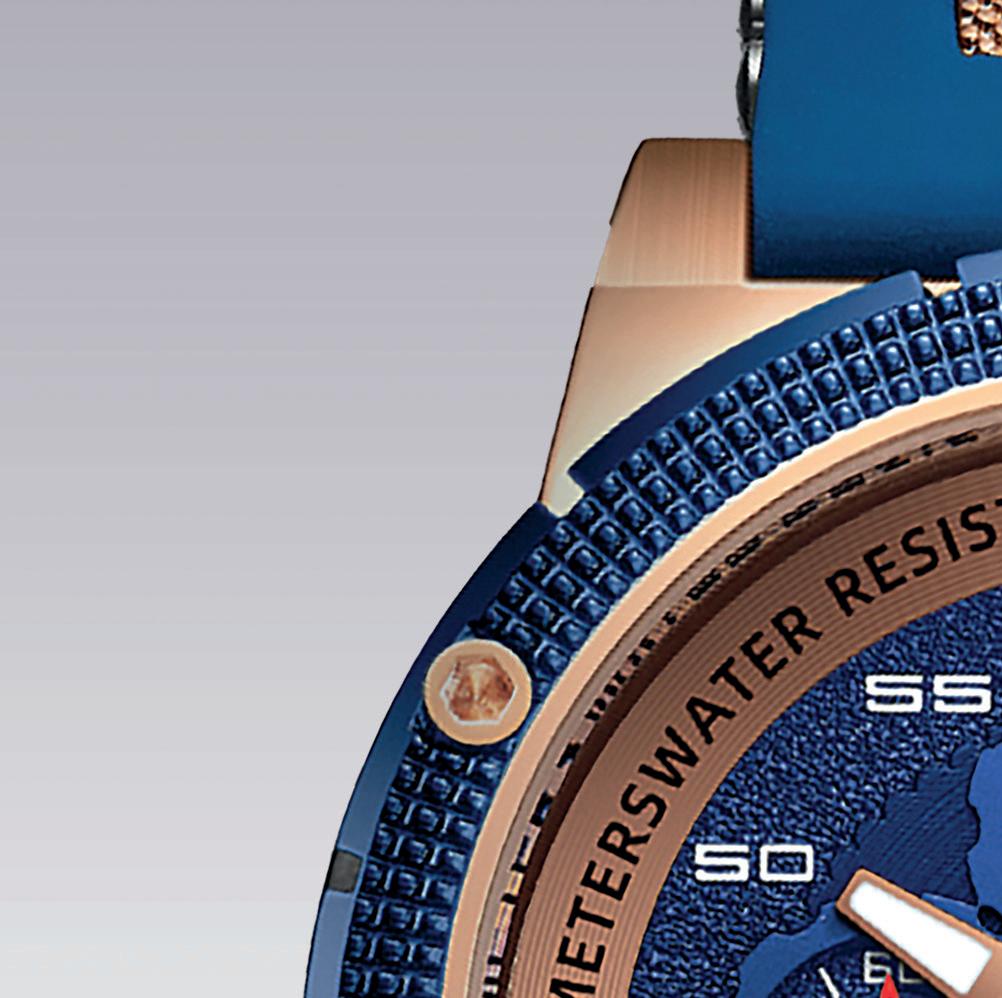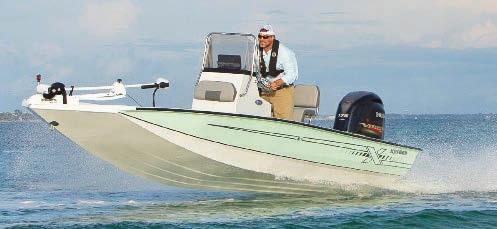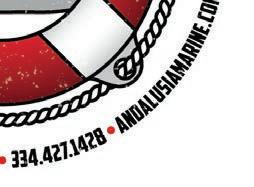






















































































































































































 By Astrid DeGruchy
By Astrid DeGruchy
icked Tuna is a show my ancé, Capt. Brandon Storin, and I like to watch. As an avid angler betrothed to a charter captain, I think it’s pretty cool to watch these guys reel in giants, but it’s even cooler to do it Brandon and I wanted this experience, so we went on a charter with the legendary crew of the “Hard Merchandise.” Docked in Gloucester, Mass., the boat is very spacious with a heated cabin, full head and all the latest electronics. Capt. Joe Marciano and his Mate, Jay, are exactly as they are from the show, and their skillsets for catching

During our time with them, conditions were a bit rough. It called for us leaving the docks earlier than anyone else, and while riding out, you could really see how meticulous they are in each part of the rigging and set up. During the boat ride, conversation was great, with plenty of laughs to go around. Before we knew it, we were at the tuna grounds.
In the midst of catching and soaking baits and waiting for the bite, the crew made us fresh breakfast and it was amazing. We had bacon and scrambled eggs with lobster.
e experience is very much like what you would expect from watching the show. ere’s lots of refreshing baits and waiting for a bite. When they mark sh on the sonar, the enthusiasm from the crew is amazing, just like on television. Capt. Joe and Jay jump up, yelling “WE’RE MARKING!” Adrenaline starts pumping with anticipation as you hope everything is lined up perfect enough to get a bite.
Fortunately, we did get tight, and I have never seen a sh take such a wild and ferocious run… several times. I was up to battle this sh with coaching from Capt. Joe and Jay. ere is nesse needed to ght a giant like this, and a cra in staying tight and knowing when to let him run. Every second spent reeling elevated the hope that we might land this big tuna. Yet there was also anxiety. If you’ve watched the show, you know that losing one of these monsters is a very real possibility.
We battled the sh for a while. Gaining where I could, adrenaline kept me pumping while the crew maneuvered the boat. e communication is constant as everyone works together.
Finally, I saw this huge beast start surfacing. Capt. Joe moved in with the harpoon, ready to take the shot. Everything happened so quickly! e beast surfaced, and Capt. Joe drilled it with a perfect gill shot. It wasn’t over yet, but it was just a matter of time. A er the sh made one last run, taking a bunch of rope, we hauled it back in and roped its tail. At that point, I knew I had landed my top bucket-list sh.
It was an amazing experience, and it felt like we were literally in an episode of Wicked Tuna. What you see from the show is what you get in person. ere is no script; nothing is fake. ere is only grit, talent and hope, and these guys have all that.

e Hard Merchandise team recently launched Angelica Seafoods, where one can order fresh blue n, lobster, scallops, oysters and more to be delivered to your door. If you plan a trip to Boston and want to catch a sh of a lifetime, book a charter with the Hard Merchandise.
For more information on the Hard Merchandise, visit www.angelica sheries.com/fv-hardmerchandise.
IG: @catching_astrid @bnmbean @hardmerchjoe @melodyredwing @hardmerchandisejay.
Have you ever dreamed of holding a $100,000 bill in your hand? How about a group of bills that includes $100,000, $10,000, $1,000 and $100 bills? Now you can, with these gold currency reproductions from the O cially Licensed Smithsonian® Series-1934 100 mg 24-Karat Gold Certi cates, which includes all four of the above Notes!






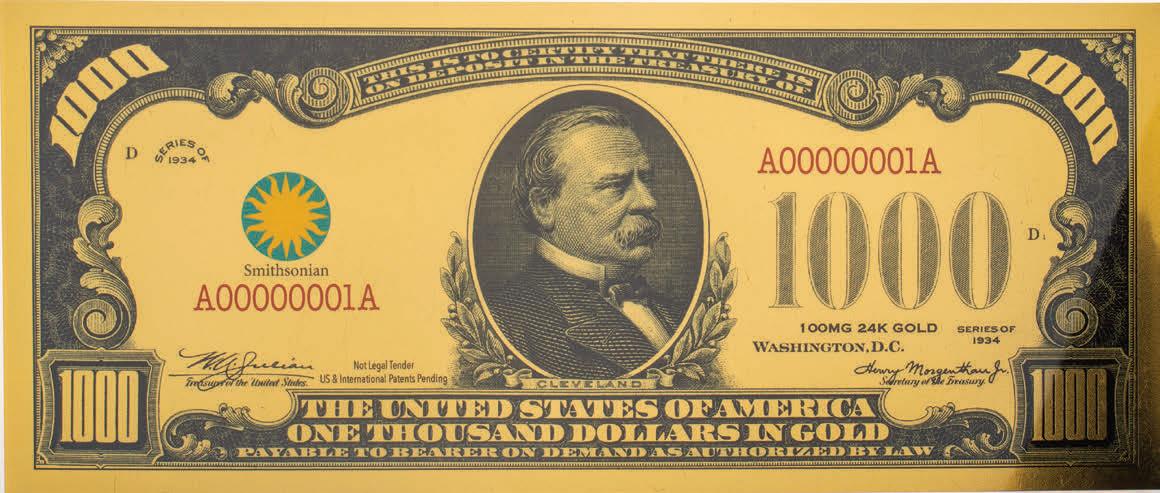
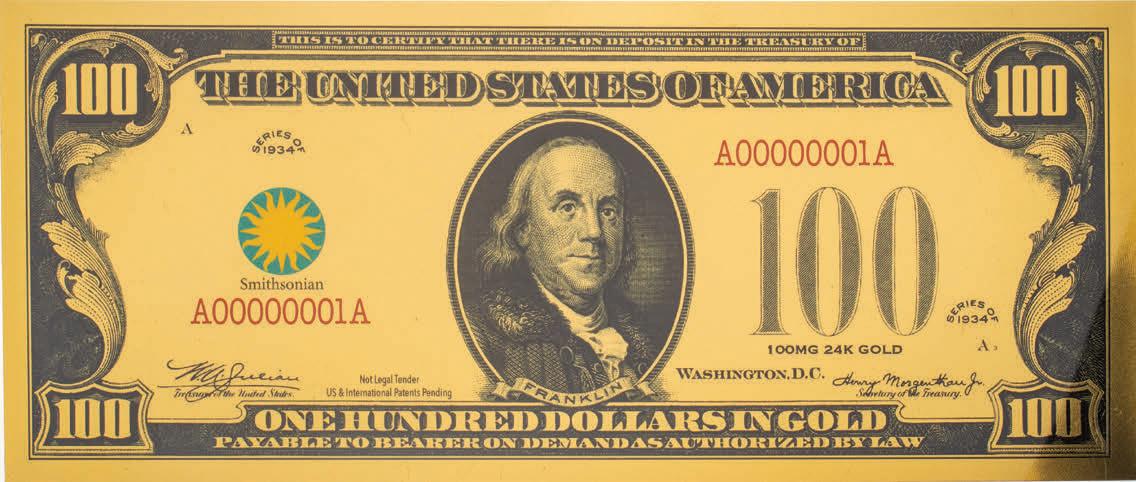

The actual Series-1934 Gold Certificates were legal tender, but were not intended for circulation—in fact private ownership was banned. Rather, these Notes were intended for transferring funds between Federal Reserve banks. The Certificates legally represented their worth in gold, and didn’t require a forklift to move!





By 1960, the Notes had served their purpose, and most were destroyed. Only a small number still exist, including those held by the Smithsonian.


These replica Series 1934 Currency Notes were reproduced from originals housed at the Smithsonian— and include the official Smithsonian sunburst. Best of all, using state-of-the-art




technology, 100 milligrams of 24K gold are transformed into currency-sized works of art! Each will arrive graded in Gem Uncirculated (Gem UC) condition by Paper Money Guaranty (PMG).


For this first-ever release, only 5,000 of these Series 1934 Gold Certificate Currency Notes were produced. These are the very first of their kind, created with 100 mg of 99.9% pure gold. Get the complete Set or get them individually. They’re going fast, and our limited supply will not last, so secure yours now!
1934 Smithsonian 24k Gold Certificates



$100 $49.95 SAVE $10, Only $39.95 each! + s/h $1,000 $49.95 SAVE $10, Only $39.95 each! + s/h $10,000 $49.95 SAVE $10, Only $39.95 each! + s/h $100,000 $49.95 SAVE $10, Only $39.95 each! + s/h
Acquire the entire collection and SAVE even MORE… 4-Pc. Set $199.80 SAVE $50+, Only $149 each! & FREE SHIPPING
For
product total over $149 before
Not
with
on












Please mention this code when you call.


That’s quite a headline for a 17-year-old high school student from Clewiston, Fla. who loves bass shing.
I spoke with Hilary while she was in Palatka, Fla. preparing to sh the Florida Bass Nation tournaments on the St. Johns River, and her enthusiasm and passion for the sport of bass shing were impressive.
Last year, at 16, she nished h at the State Championship of the Florida Bass Nation with a total weight heavier than 19 pounds. She’s hoping to do even better this year.
I asked her if she could remember when she rst started shing, and she laughed as she guessed that she was “probably only 2 years old.” A er all, she does come from a pretty well-known family of professional bass shermen.

Her grandfather, the legendary Roland Martin, is one of the greatest bass shermen of all time. Her father, Scott, won the 2011 Forest Wood Cup Championship, and also has 45 top-ten nishes and eight tour victories in the FLW and hosts the Scott Martin Challenge.
But things are di erent today than they were
 By Don Norton
By Don Norton
Iin the past. Today, social media is the key to reaching your audience, and Hilary has done an incredible job on both YouTube, with over 100,000 subscribers, and Instagram with 103,000 followers.
Most of her videos are bass shing, although she’s had some very interesting saltwater shing videos, as well.


Hilary said she started taking bass shing seriously when she was 15 years old, and at 16, joined the Florida Bass Nation Series.
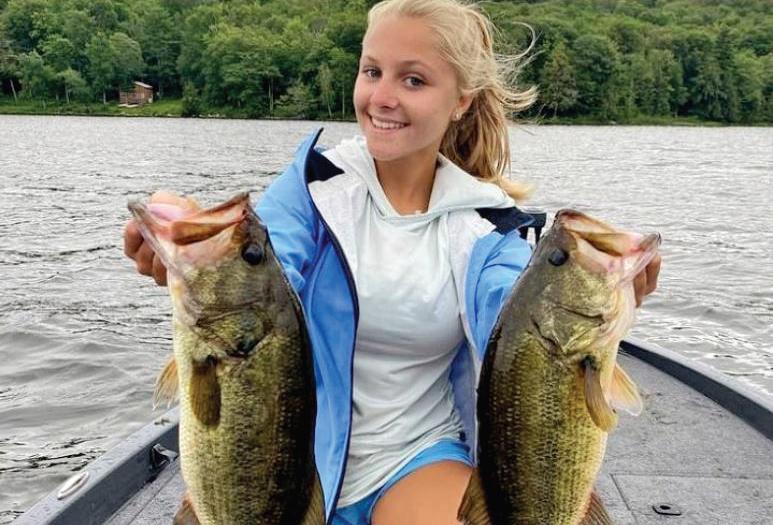
She has her own bass boat, a 20’ Skeeter FXR, with a 250hp Yamaha, but she also shes out of her dad’s boat from time to time, because, “it’s got all the goodies,” she laughed.
Her biggest bass, a whopping 9.1-pounder was caught ipping a black/blue Sweet Beaver along the edges of cattails on Lake Okeechobee when she was only 14 years old. She hopes to break that personal best soon.
Her shing arsenal includes a Favorite Phantom Series shing rod, a Shimano Curado reel and braided or uorocarbon line, along with her favorite bait, a Zoom Speed Worm.

“I was shing out of a kayak and I saw this
far away, so I threw my Speed Worm just past the mark,” she recounted. “I started a fast retrieve when a big bass came up and just exploded on it. at sh drug me around for what seemed like forever before I nally landed it. It weighed just over ve pounds. e cover picture of me holding a bass was taken the day a er.”
Listening to her tell that story, her excitement, enthusiasm and passion for bass shing became even more obvious.
If you haven’t seen one of her videos on YouTube ( eReelHilarySue), I’d strongly recommend you check them out. ey’re fun to watch, and you might just learn something. She’s a natural.
What an incredible future this beautiful, talented young lady has in store. I think she’ll be one of the biggest names in professional bass shing in the years to come.
Don Norton is co-publisher of the Okeechobee edition of e Angler Magazine.
The very best hunting knives possess a perfect balance of form and function. They’re carefully constructed from fine materials, but also have that little something extra to connect the owner with nature.
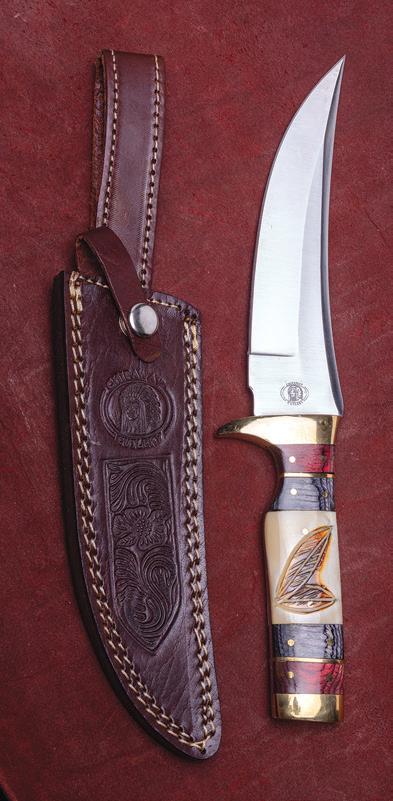
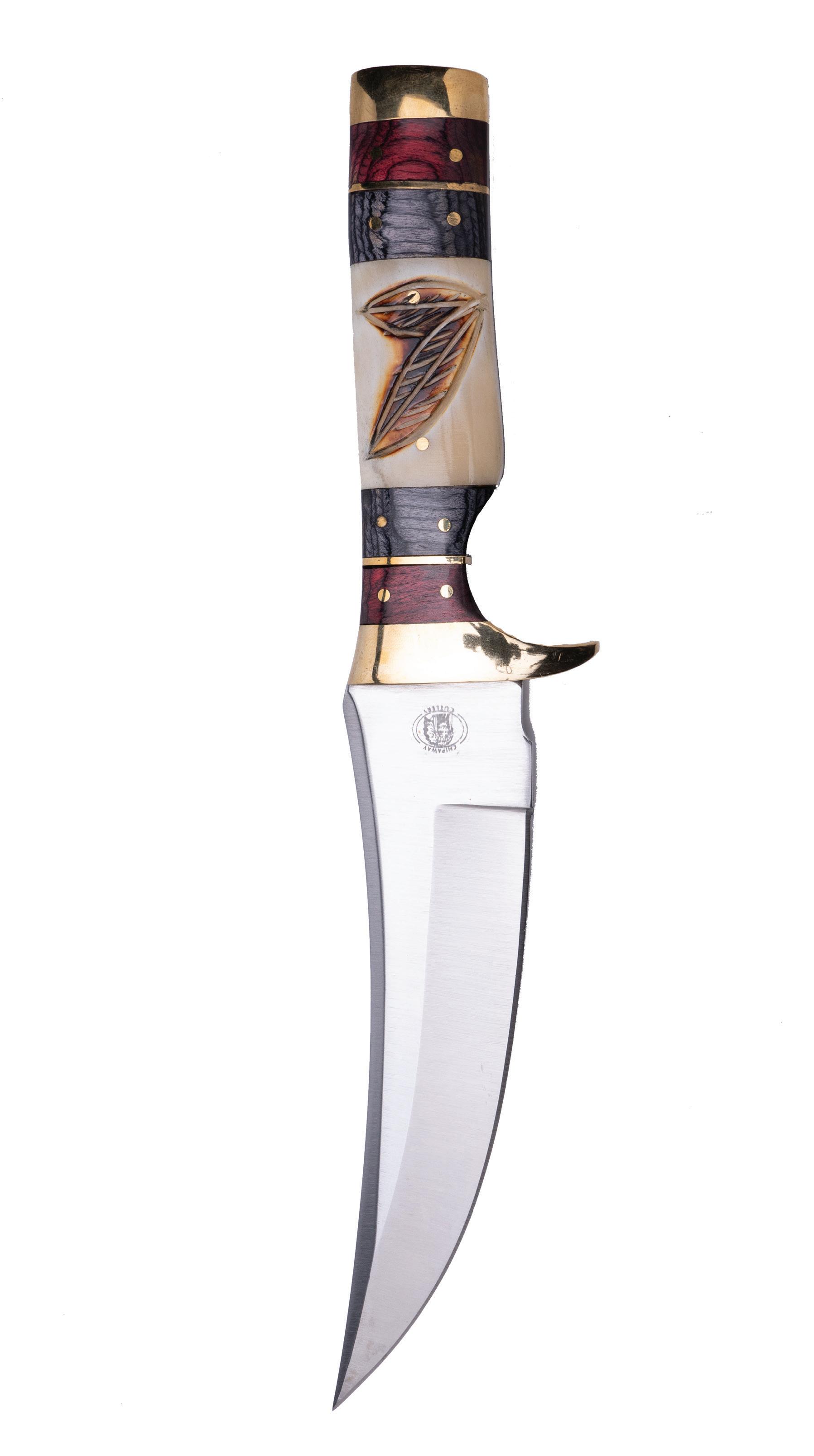
If you’re on the hunt for a knife that combines impeccable craftsmanship with a sense of wonder, the $79 Huntsman Blade is the trophy you’re looking for.
The blade is full tang, meaning it doesn’t stop at the handle but extends to the length of the grip for the ultimate in strength. The blade is made from 420 surgical steel, famed for its sharpness and its resistance to corrosion.
The handle is made from genuine natural bone, and features decorative wood spacers and a hand-carved motif of two overlapping feathers— a reminder for you to respect and connect with the natural world.
This fusion of substance and style can garner a high price tag out in the marketplace. In fact, we found full tang, stainless steel blades with bone handles in excess of $2,000. Well, that won’t cut it around here. We have mastered the hunt for the best deal, and in turn pass the spoils on to our customers.
But we don’t stop there. While supplies last, we’ll include a pair of $99 8x21 power compact binoculars and a genuine leather sheath FREE when you purchase the Huntsman Blade
Your satisfaction is 100% guaranteed. Feel the knife in your hands, wear it on your hip, inspect the impeccable craftsmanship. If you don’t feel like we cut you a fair deal, send it back within 30 days for a complete refund of the item price.
Limited Reserves. A deal like this won’t last long. We have only 1120 Huntsman Blades for this ad only. Don’t let this beauty slip through your fingers. Call today!
®

$99 value-
Blade
Stauer Clients Are Saying About




Knives
knife is beautiful!”
Crescent,
feel of this knife is unbelievable...this is an incredibly fine instrument.”
Arvada, CO
Southcross Drive W., Ste 155, Dept. HUK864-01 Burnsville, Minnesota 55337 www.stauer.com
is only for customers who use the offer code versus the listed original Stauer.com price.
residents please call 1-800-333-2045 regarding Proposition 65 regulations before purchasing this product.
Afford the Extraordinary
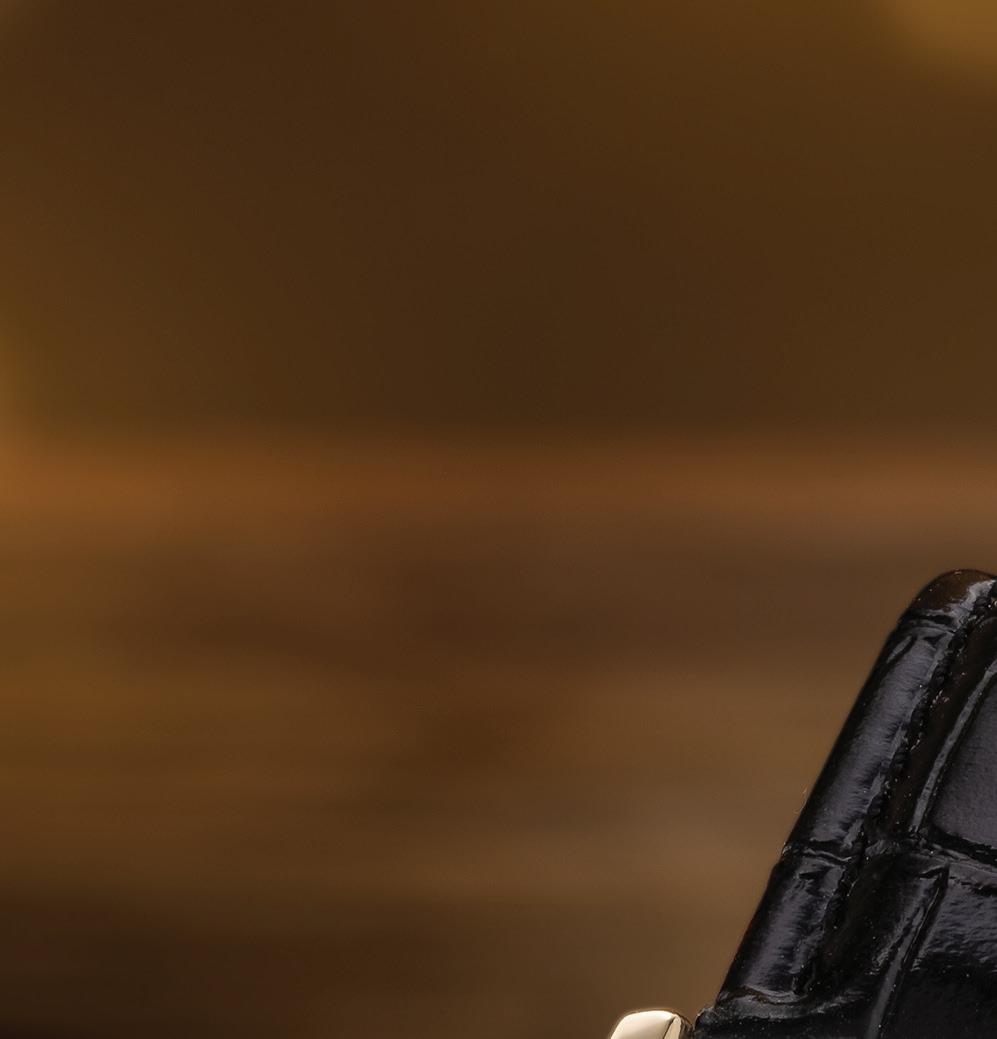

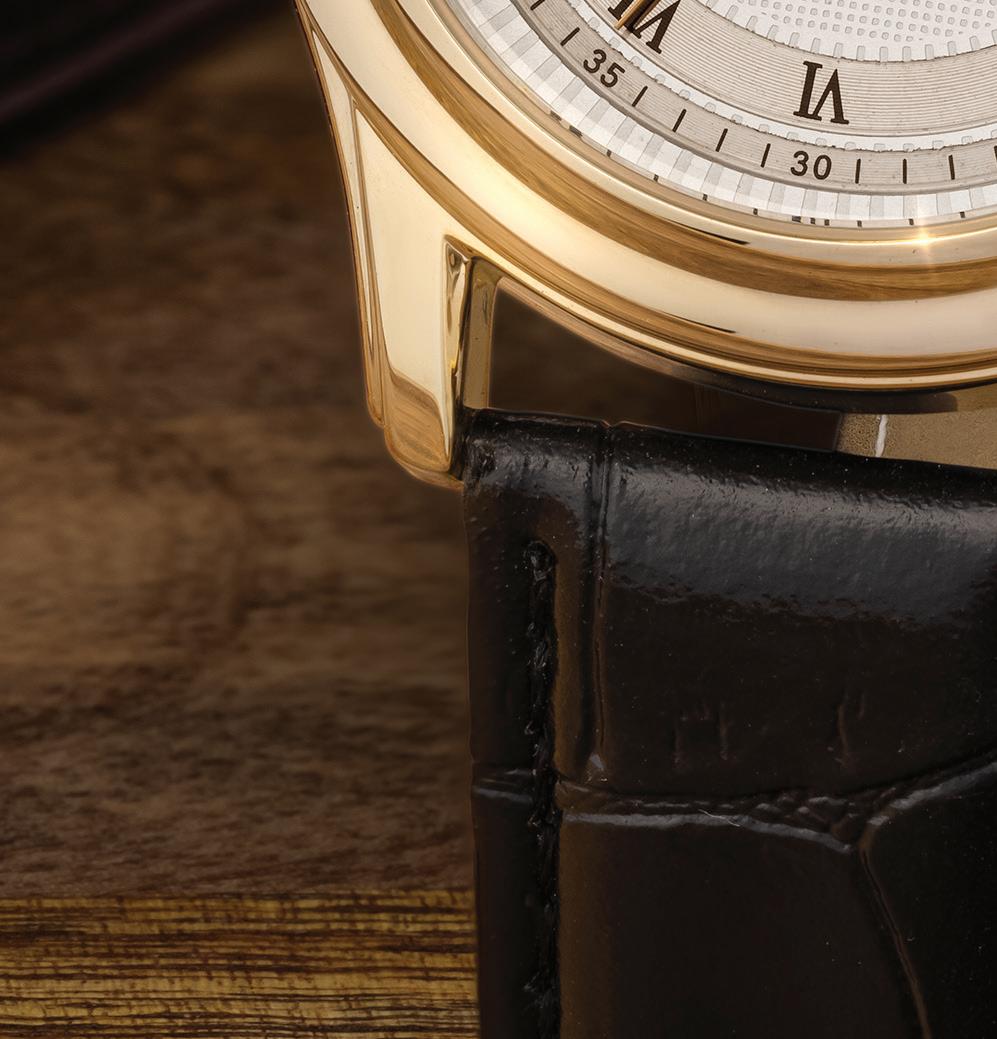
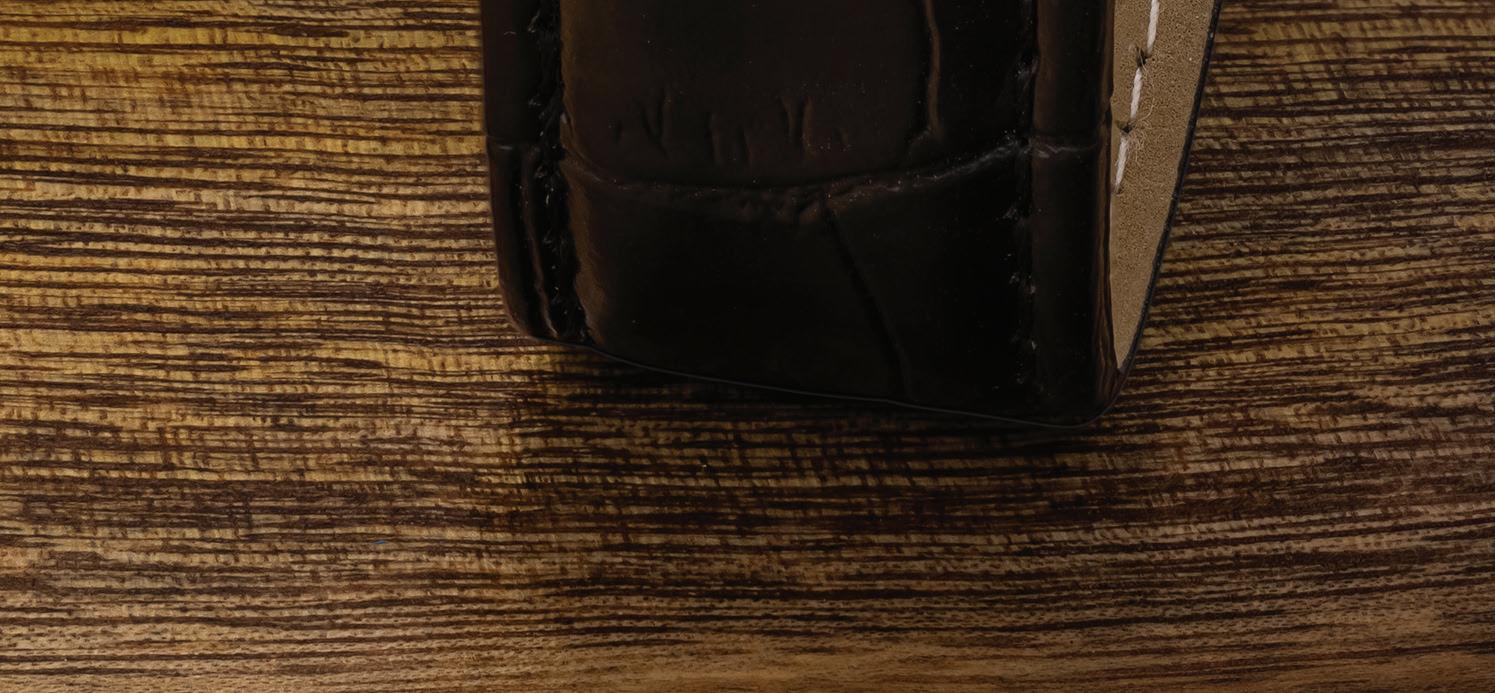








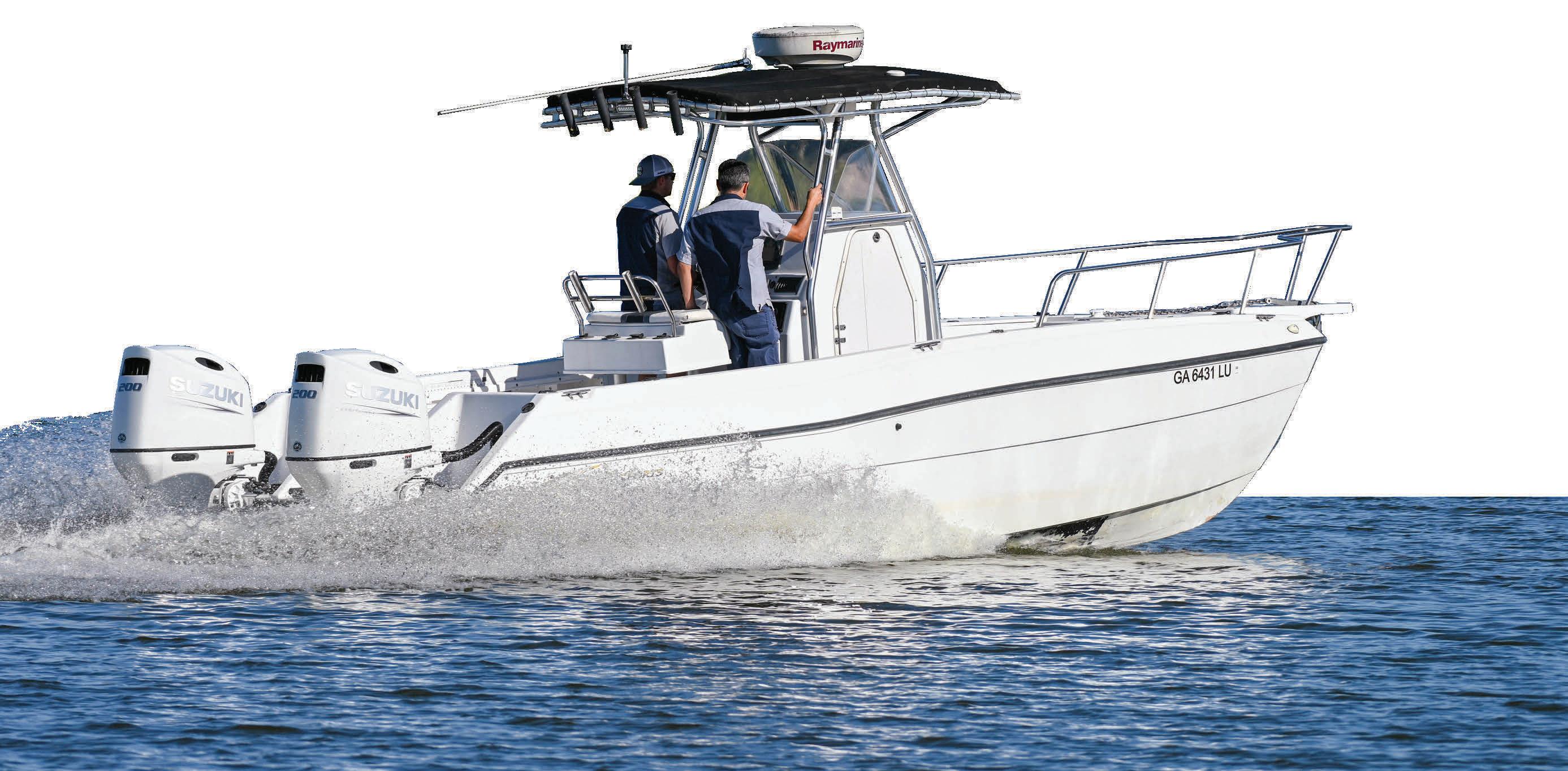







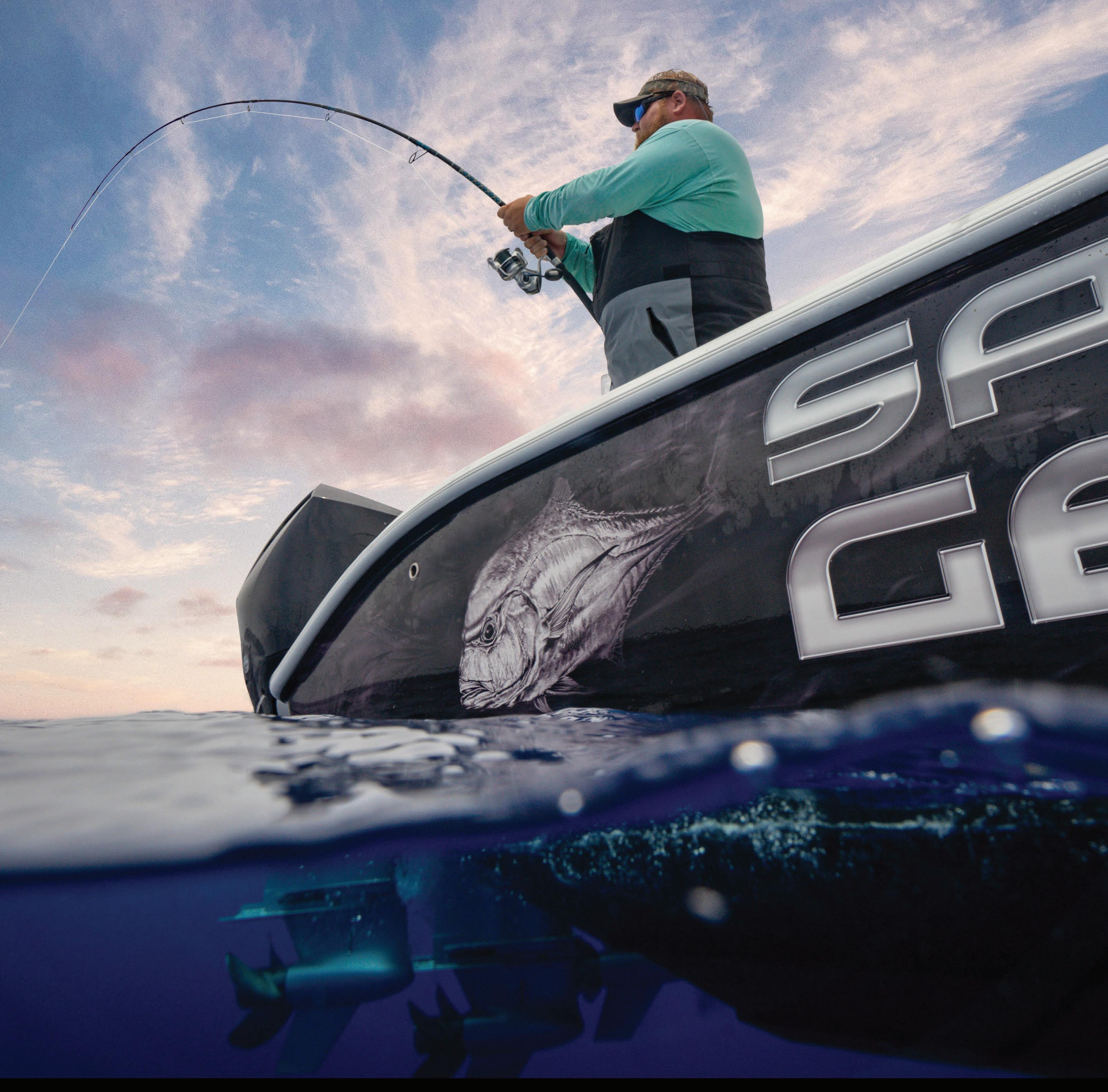
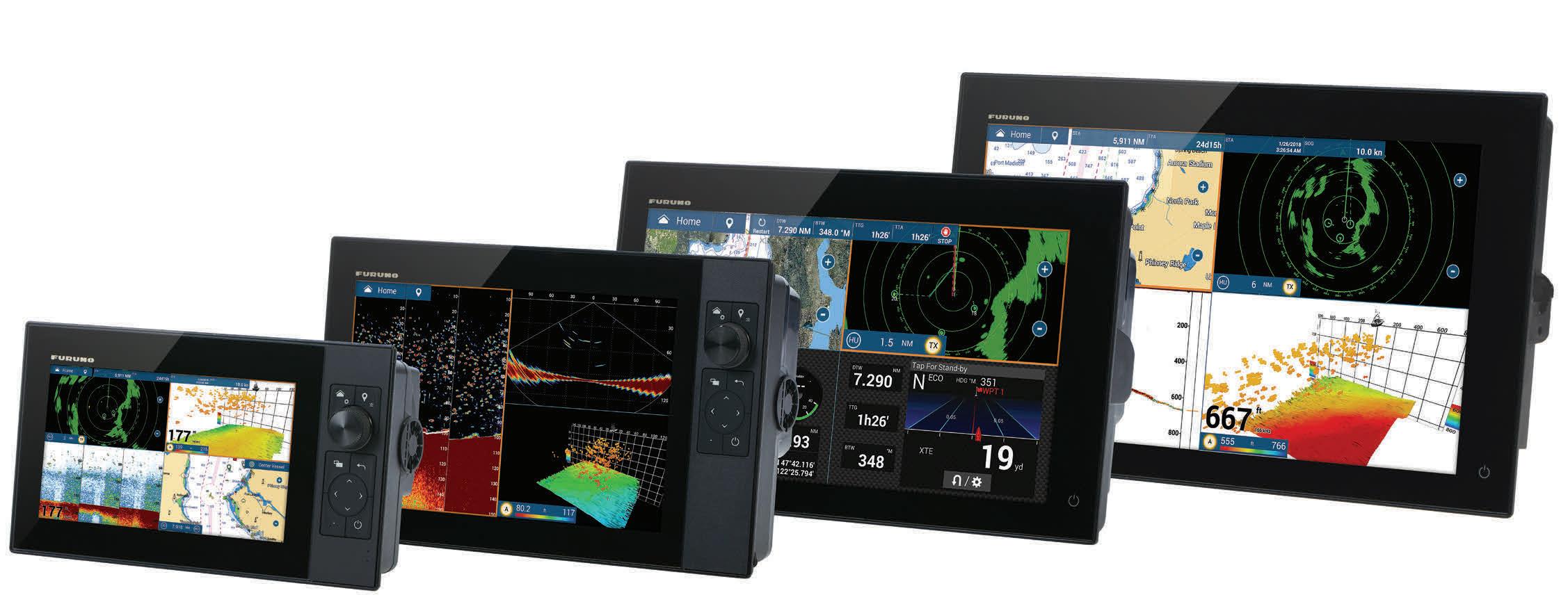
 PHOTO COURTESY OF LARRY MCGUIRE/SHOW ME THE FISH CHARTERS
PHOTO COURTESY OF LARRY MCGUIRE/SHOW ME THE FISH CHARTERS
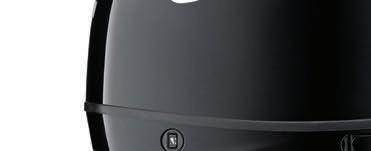



shing the Gulf of Mexico out of Florida have two weekends remaining in November to harvest red snapper. is special fall season announced by the Florida Fish and Wildlife Conservation Commission (FWC) opened a total of ve weekends for snapper harvest in October and November. e remaining dates are Nov. 11-13 and Nov. 25-27.
e fall red snapper season is open for recreational anglers and for-hire operations in the Gulf of Mexico. During this season, private recreational anglers may harvest red snapper in Gulf state and federal waters. However, state for-hire operations are limited to shing for red snapper in Gulf state waters only. Gulf state waters extend to 9 miles o shore, where federal waters begin.
e bag limit during the fall season is the same as the regular summerseason bag limit. Anglers may keep two red snapper per person, within the 10-per-person daily aggregate snapper bag limit. e minimum size limit is 16 inches tail length. Charter captains and guides may not keep a limit on top of those retained by their anglers. A descending device or venting tool is required to be rigged and ready for use while shing for reef sh in Gulf federal waters. FWC will continue to monitor harvest relative to Florida’s available quota.

ese additional days were made possible by the State Reef Fish Survey, which was developed to provide better data for management of red snapper and other reef sh. It has allowed FWC the unprecedented opportunity to manage Gulf red snapper in state and federal waters.
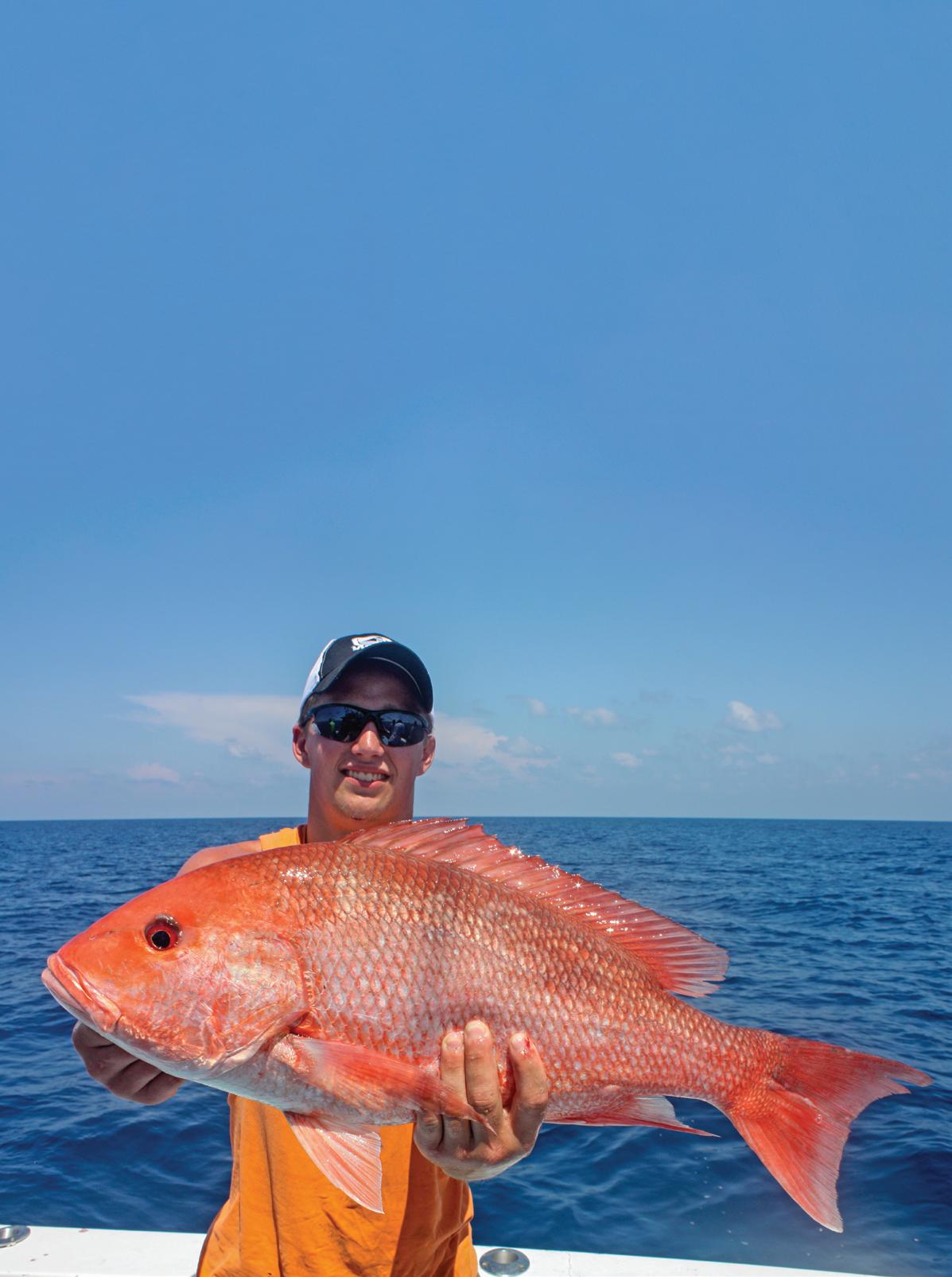
All anglers shing from private recreational vessels are required to sign up as a State Reef Fish Angler if they target red snapper or other reef sh in state and federal waters, even if they are exempt from shing license requirements. Sign up for no cost at GoOutdoorsFlorida.com or by visiting any location where you can purchase a Florida shing license.
State Reef Fish Anglers may receive a questionnaire in the mail regarding their reef sh trips as part of Florida’s State Reef Fish Survey. If you receive a survey, please respond whether you shed this season or not or whether you’ve submitted data via other methods.

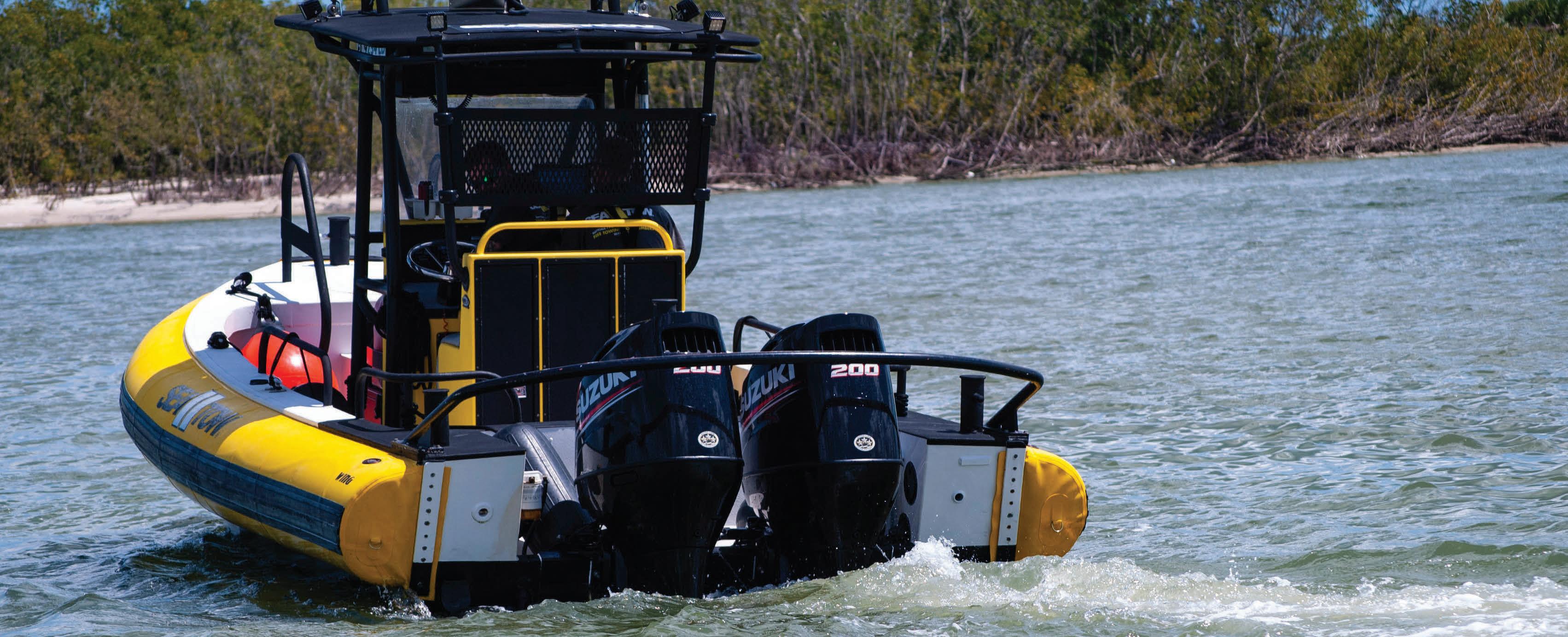
For more information, see the Florida red snapper regulations at MyFWC.com.




















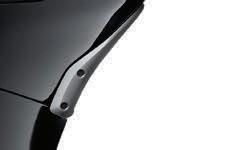
Mastry Suzuki RePower,










and






most any
you purchase a new Suzuki outboard from an authorized Mastry RePower Center you qualify to become a member of the Mastry Suzuki Owner’s Edge. Owners receive an identification card that provides them with important information about their Suzuki outboard motor as well as a passport to additional benefits during ownership. Members enjoy a detailed engine maintenance schedule, Mastry Suzuki RePower Trade Program and special pricing from Mastry Suzuki Partners.















Brought to you by Seminole Hard Rock Hotel & Casino in Hollywood, Fla., the 12th Annual Jimmy Johnson’s “Quest for the Ring” Championship Fishing Week will take over South Florida March 7-11, 2023, additionally hosted by Visit Lauderdale, with tournament headquarters based at Seminole Hard Rock in Broward.

e annual four-day tournament includes the 2-day Quest for the Ring Catch & Release Championship and the National Sport sh Championship Weighted Tournament, which takes place as a separate tournament during the event week. Hosted by Contender Boats, powered by Yamaha and fueled by Papa’s Pilar Rum, the 2-Day Catch & Release Championship features the World’s RICHEST guaranteed purse of $1 million, in partnership with Seminole Hard Rock Hotel & Casino in Hollywood, Fla, making it the longest-running guaranteed purse in history.
Jimmy Johnson’s “Quest for the Ring” Championship Fishing Week is “all about the ring!” according to Coach Johnson. Each year teams vie for their champion rings and entrance into the highly coveted Ring of Honor, an elite group of champions who have taken home the top prize at this exciting competition in the Catch & Release Championship. Each year, overall champions receive Jimmy’s famed National Championship Ring. Renowned for the best parties, which are
Palm Beach’s TEAM LUNATICO won the 2022 Championship, taking home $321,500 and entrance into Coach’s coveted RING OF HONOR on a 42’ Invincible owned by Lance Converse.

back at Hard Rock, the highest guaranteed purse and the ultimate week of shing, tournament highlights include celebrity charity days and highly competitive tournament showdowns. Registration will end with the captain’s meeting on Tuesday, March 7, if spots are still available.
“ e best wasn’t the Super Bowl, the best was not University of Miami, the best is right now!” said Coach Johnson. “ ese teams are part of THE BEST. We continue to grow each year, and I am thrilled to have our partners at Seminole Hard Rock Hotel & Casino Hollywood join us as we
showcase the thrilling challenge of sport shing and to move our hosting of our event to such a beautiful destination in Broward County. We look forward to seeing everyone in March!”
Contender Boats is the o cial center console boat sponsor and a presenting sponsor of the tournament along with the o cial outboard sponsor, Yamaha, and o cial spirits partner, Papa’s Pilar. Additional Hosting sponsors include Oakley Prizm, Michelob Ultra, GED Lawyers, Visit Lauderdale, Garmin, Celebrity Cruises, Hines Securities, Titos Vodka, Atlantic Radio Telephone, and Cadillac. Miami Retail Partner is Crook and Crook and Broward Retail Partner is Big Dog Tackle. e o cial tournament artist and apparel provider is Connected by Water. Additional event sponsors can be found on the event website. e tournament is produced by Fish Hard Events.
Boat Entry information and the full schedule of events can be found at www.jj shweek.com. Registration starts at $5,000 for the Quest for the Ring Bill sh Tournament and $2,500 for the Sport sh Weighted Championship. Register on the tournament website or by contact the tournament o ce at info@jj shweek.com or (305) 255-3500 for more information.
Follow @JJFishWeek on Facebook, Instagram, and Twitter for up to date tournament information.

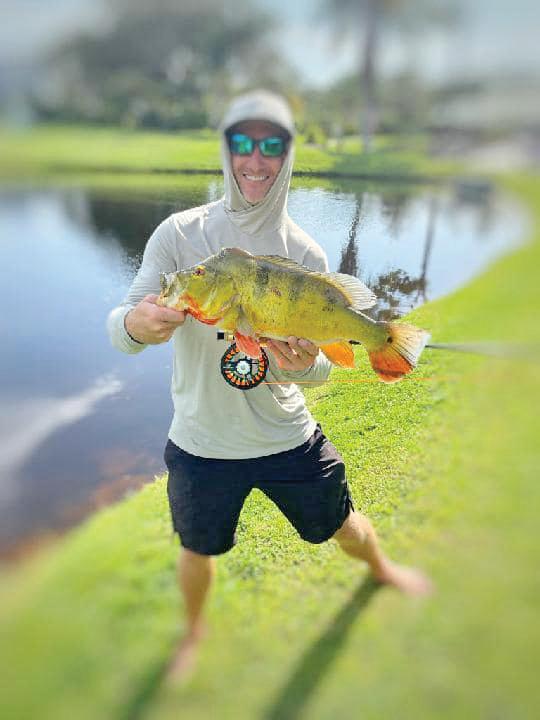
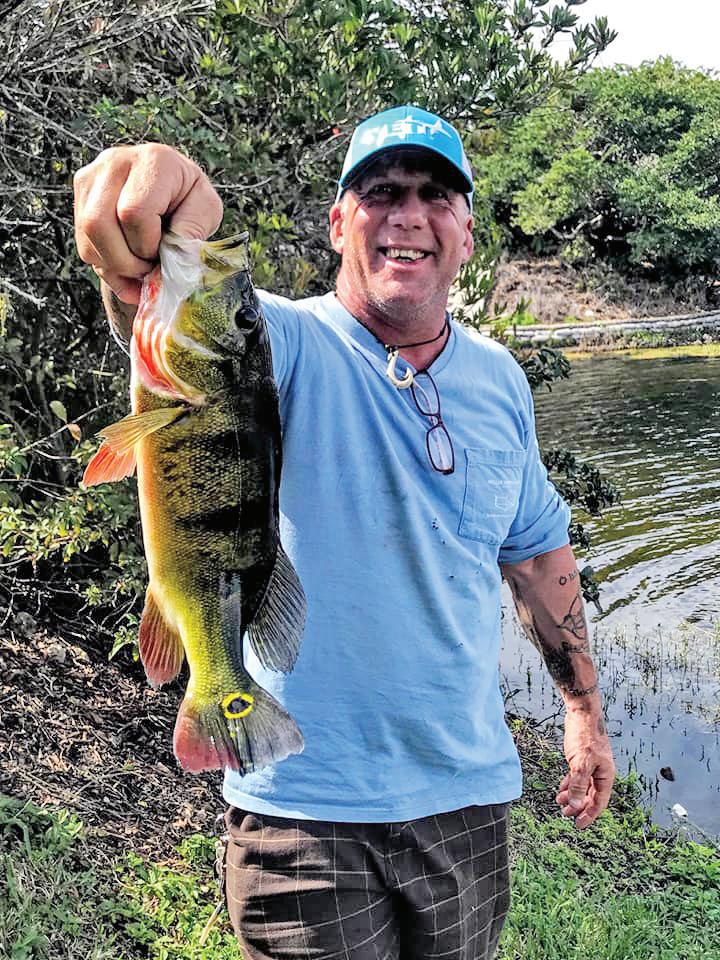 By Rex Hannon
By Rex Hannon
There’s an eruption during your retrieve that’s immediately followed by one of the most vicious strikes you’ve ever encountered. e unknown assailant pulls drag, digging deeper only to reverse course and perform one of the most acrobatic aerial shows you’ve ever witnessed. Your rst thought is a monster largemouth, but that idea vanishes when you see the color scheme and the large bump on the sh’s forehead. A er a trying and equipment-testing battle, before you lies an unmistakable dream about or watch on television shows recorded in exotic locations. It’s a butter y peacock bass.
Peacock bass are native to South America, where they are most commonly found in the Amazon and Orinoco river basins. Because of their appearance and name, there’s a common misconception that they are members of the bass family. Actually, they are cichlids.
Peacock bass were introduced to South Florida by the Florida Fish and Wildlife Conservation Commission (FWC) in 1984. ey are nonnative, but they are considered noninvasive. ree stocks of sh were imported from Brazil, Guyana and Peru. A er spawning at the FWC Non Native Research Lab and being tested for disease and parasites by both the U.S. Fish and Wildlife Service and Auburn University, they were released to combat exotic invasive snakeheads, clown knife sh and oscars.
Peacock Bass have a body similar to largemouth bass, but the color scheme is noticeably di younger examples are generally golden/green with three black bars that fade as the sh matures. is also usually a prominent black spot with a yellow/ gold halo on the tail. Peacock bass are fast growing, pushing an inch a month from one year to 18 months. A 19-inch sh can weigh 5 pounds. While the Florida state record butter
undocumented catches of 12 pounds and e IGFA all-tackle world record is 12.6 pounds and was caught in Venezuela. y peacock bass are intolerant of cold water and high salinity. ere have been reports of sh north of Palm Beach County, but they cannot survive temperatures below 60 degrees or salinity above 18 parts per million. is species is commonly found in canals, lakes and ponds, and prefers to feed and spawn in shallow water with vegetation.
Live bait is the easiest way to catch these amazing sh, and they will also strike arti cial lures and ies. Butter y peacock bass prefer feeding during daylight hours, when they use their great speed to pursue

y peacock bass are edible, but the FWC recommends catch and release due to the valuable service they provide in keeping invasive species in e pursuit of this species is also an economic boon to the state. It is estimated that anglers spend more than $8 million a year chasing peacock bass in y peacock bass are another example of shing opportunities.




Guy Harvey has dedicated his life to creating beautiful art and apparel to protect the sport and the oceans he loves. From using recycled materials in his apparel to ensuring a portion of his proceeds help protect the ocean through the Guy Harvey Ocean Foundation (GHOF), wearing Guy Harvey means you’re part of the movement to protect our sport and our oceans. Shop now and turn the tides at GuyHarvey.com
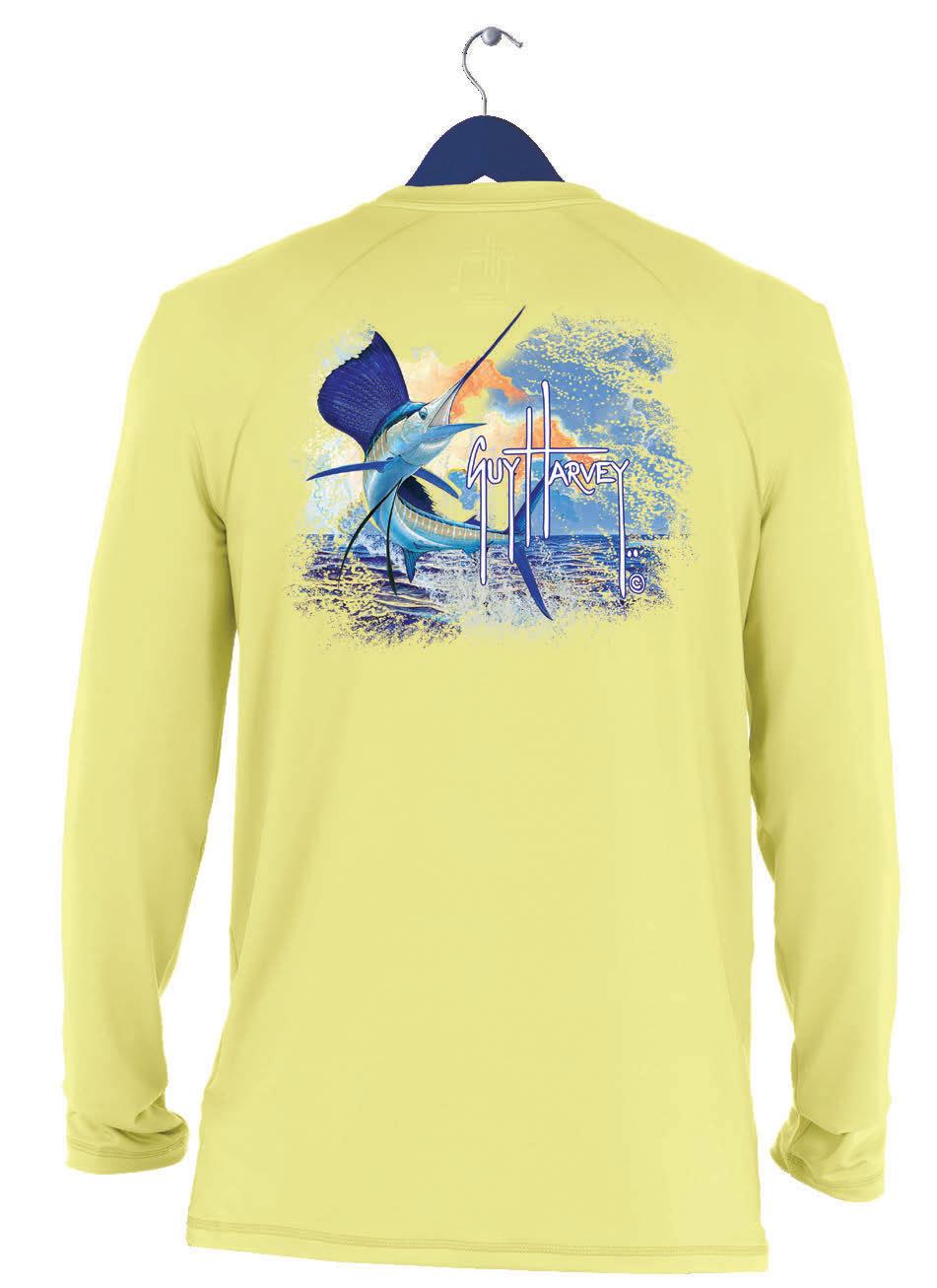

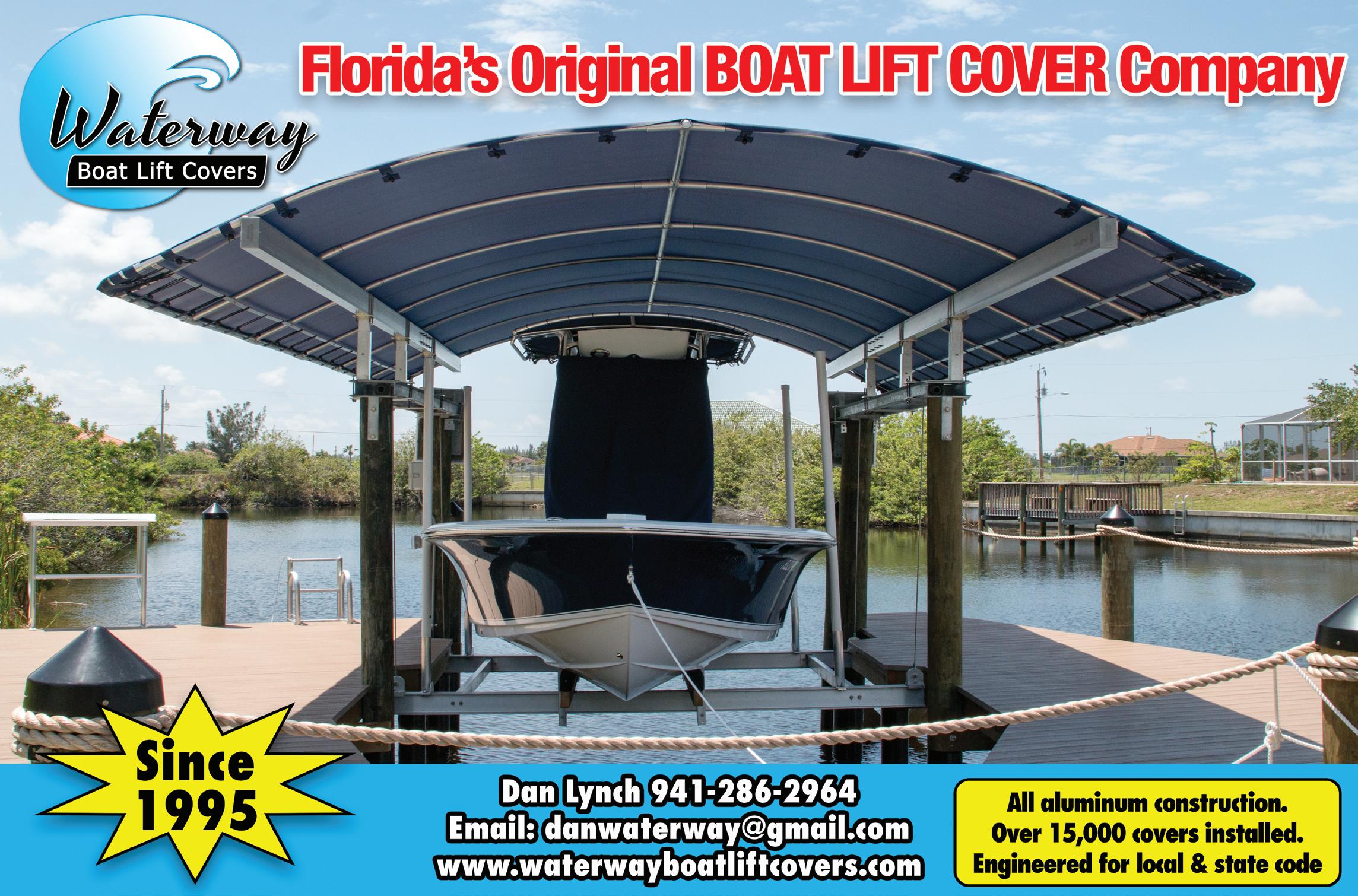
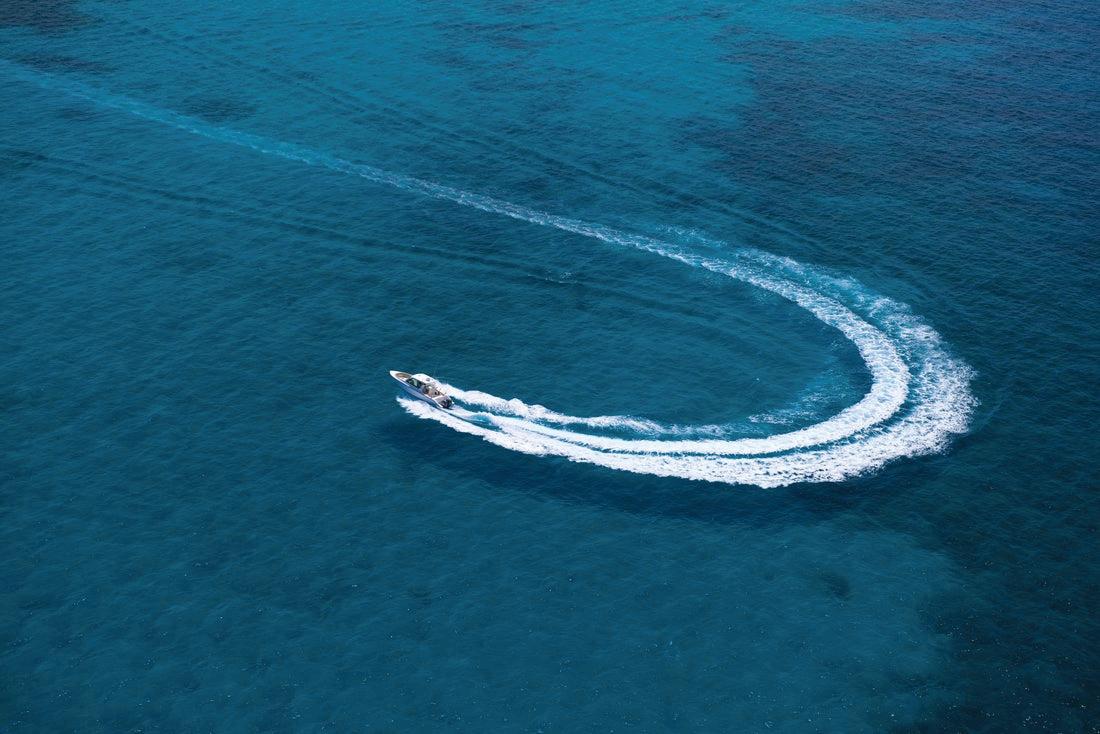


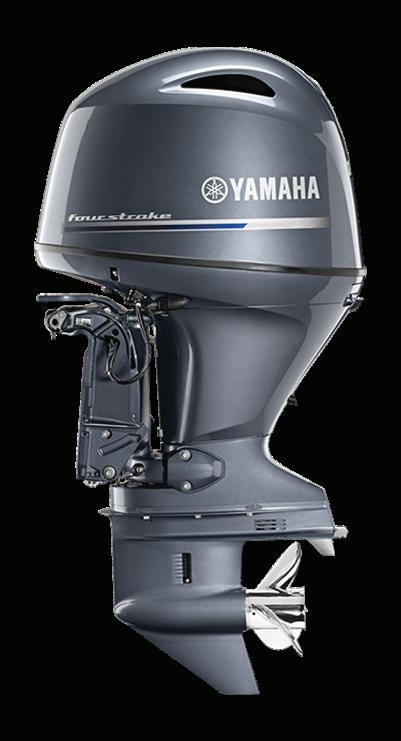












In this series on long-distance lures, we’ve covered just about everything about the cast and equipment. Now that you’ve made that super-long cast—beating other anglers’ distance by 50 feet, or maybe 50 yards—you are presenting your lure to sh that others can’t reach.
What’s next the next step? is is where we enter the heart of the action, where things get fun and exciting. First thing rst, start working your lure.
e long distance between your rod tip and the lure means more line is on the water. You will have less control of the lure’s action, and the delay between when the sh strikes and when you feel it will be longer. e hook set is also a ected. Waves, wind and current all amplify this lag.
e type of lure will determine how you should alter your retrieve to achieve the proper action. Darters, heavy spoons, billed minnows, bottleneck swimplugs and jointed swimbaits are all designed to provide their own action, and they will start swimming when you begin your retrieve.
Lures that require more angler interaction
will require you to adapt your retrieve to compensate for the extra distance and diminished control. A popper

hand what I am trying to impart. You’ll need practice to adjust the way you work a lure at distance, and by paying attention to the way di erent lures react, you will learn to sh them more e ectively.
might require harder pulls to pop. A stick bait or pencil might need a slower cadence and sharper rod twitches to achieve the desired action.
ese details might seem insigni cant as you read this, but go give it a try on the water, preferably in calm conditions. At the end of a super-long cast, you’ll experience rst-



Now, with the current ripping and wave action pulling the line and lure side to side, there’s no way to avoid losing some control over the quality of a lure’s action. e good thing is, sh in such conditions are usually less picky and more aggressive. Still, the better the action you provide to your lure, the better your results will be. en suddenly, the bite happens! A long belly of line in uenced by current and waves increases the delay between your hook set and the moment it translates to the lure. Also, some energy will be lost. Use a wide, sweeping rod movement to set the hook when the lure is far away. is generates a long pull that provides the most energy possible to drive the hook into a sh’s mouth. Also, sh a tight drag when you’re casting for distance. I’ve seen many anglers miss sh when the drag gives line on the hook set. Be ready to adjust the drag lighter based on the power of the sh once you have it hooked.
Legendary angler Patrick Sebile is a world record holder and an award-winning designer of innovative lures and shing gear. Check out his creations at abandofanglers.com.


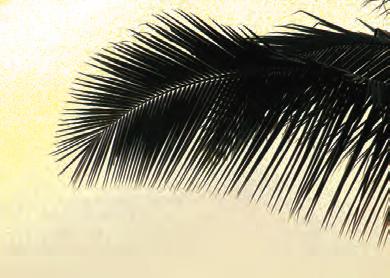



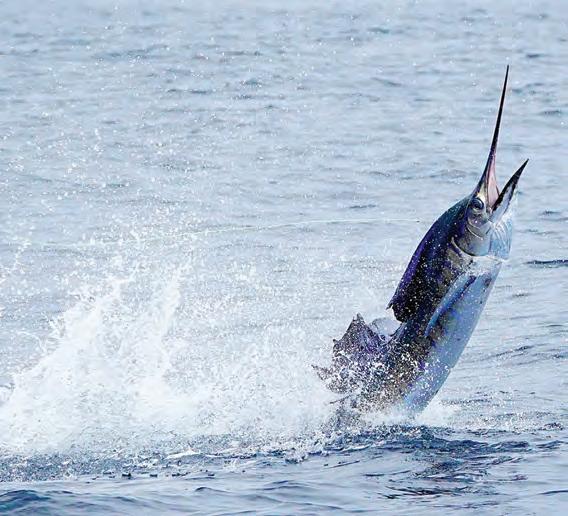
Fish Heads of Stuart announced in mid-October that while “The Quickie” has traditionally launched the Treasure Coast’s Sailfish tournament season, that they are changing things up for the tenth anniversary of the Fish Heads Quickie for 2022. The Quickie will now be the last of the three winter tournaments following the Pirates Cove Sailfish Classic—Dec. 1-4, and the Stuart Sailfish Clubs 69th Annual Light Tackle – Dec. 7-10. The tenth annual Quickie dates are December 15-17, 2022. Center stage for the tournament will be Sailfish Marina, home of Fish Heads of Stuart.
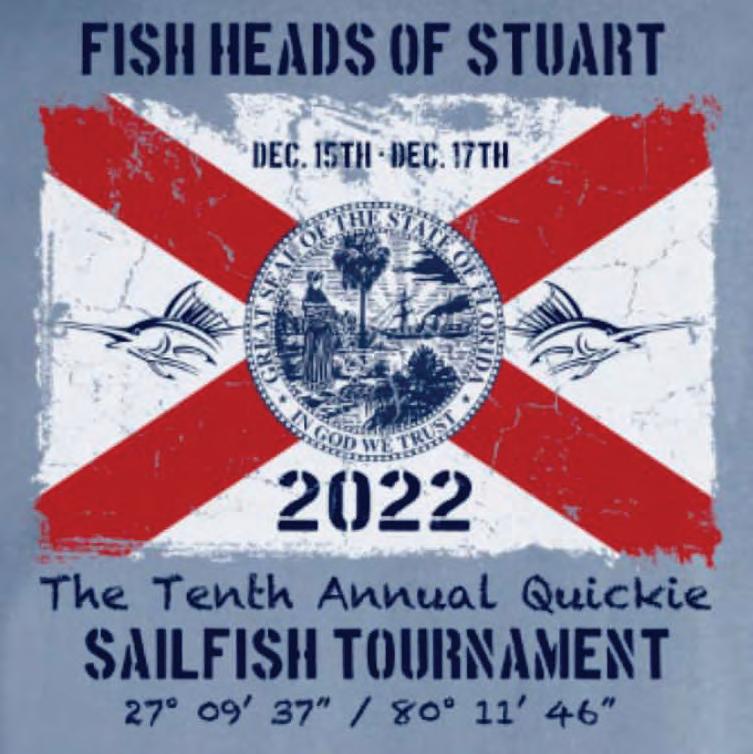
“For almost 10 years, the Quickie has been a crowd favorite,” said Brent Kane, owner of Fish Heads of Stuart. “We look forward
to continuing that tradition and towards celebrating the 10th year of the ‘Quickie’.”
Sticking with Stuart’s tradition, the Quickie is a dead bait/ conventional reel tournament. Setting the Quickie apart from other tournaments however is its angler-friendly format.
“Hook and hand – no problem. This is a fun, easy to fish, two-day tournament,” added Kane.
Entry fee is $1,500 per boat and includes six anglers and six tickets to the Dec. 17 awards dinner.
Tournament prizes will be awarded for first, second and third place finishers.
For more information, contact Fish Heads of Stuart at (772) 220–6008 or info@fishheadsofstuart.com.
Shark fishing from shore? Be sure to take the Shark-Smart Fishing educational course at MyFWC.com/SharkCourse and get your Shorebased Shark Fishing permit. Both are required when fishing for shark from shore and must be renewed annually. Link: https://learningmyfwc.remotelearner.net/course/view.php?id=40
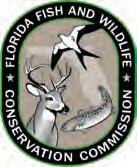
1 shark per person per day.
Two (2) sharks per vessel – this means that the maximum number of sharks that can be retained from a vessel is two sharks, even if more than two anglers are on board.

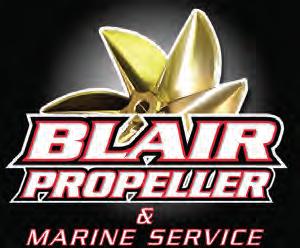

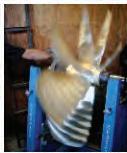
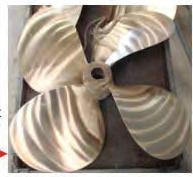
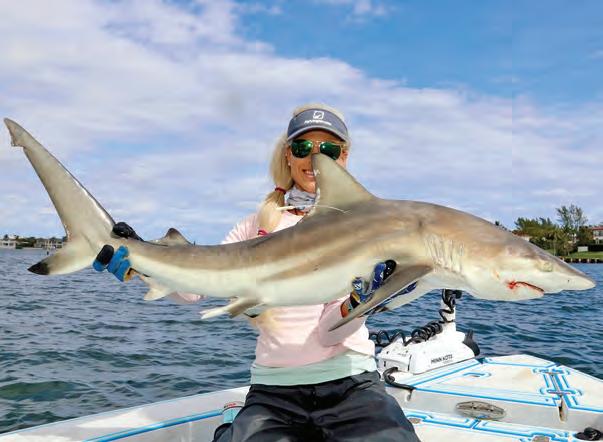
Harvestable sharks fall into these three groups based on their size limit.
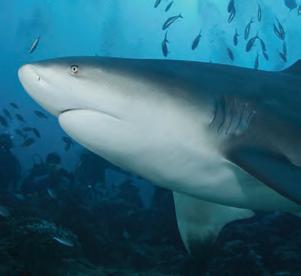
Group 1 sharks (8 species) have no minimum size limit and include:
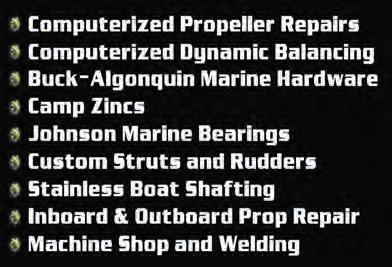
Group 2 sharks (7 species) have a 54 inch (fork length) minimum size limit and include: Group 3 shark (1 species) has an 83 inch (fork length) minimum size limit and includes:

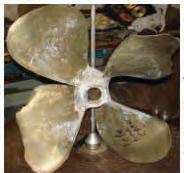

Hook and line only. Harvest prohibited by or with the use of a treble hook or any other multiple hook (any hook with two or more points and a common shaft) in conjunction with live or dead natural bait.
Non-offset, non-stainless-steel

circle hooks are required when targeting or harvesting sharks when using live or dead natural bait (when fishing from shore and from a vessel).

The possession/use of a device capable of quickly cutting the leader or hook when targeting sharks is required (when fishing from shore or a vessel).
All sharks that are retained for use must remain in whole condition with heads, tails and fins attached until landed. Gilling and evisceration while on waters or in a fishing location is allowed.
Chumming is prohibited when fishing for any species from the beach.
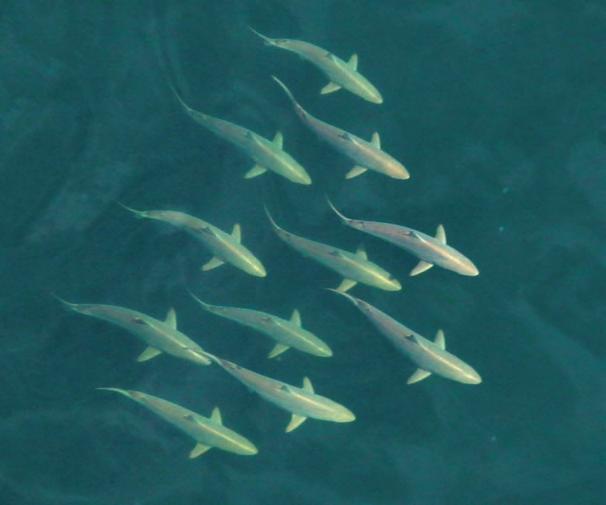

If you plan to target or keep sharks caught from shore, including structures attached to shore such as jetties, bridges and piers, you are required to pass an online educational course found at MyFWC.com/SharkCourse.
Once completed, you will be prompted to go to FWC’s online licensing system, where you will need to get the no-cost, Shorebased Shark Fishing permit (must be renewed annually). You are not required to have this permit if you are fishing for sharks from a vessel.
The permit is required for all
Gus Brugger Capt. Rocky Carbia
Jonathan Earhart Capt. Scott Fawcett Capt. Scotty Gold
Capt. Michael Mauri Jim Moir
Nelli
Oppenborn Capt. Bo Samuel Capt. Nate Shellen Capt. Adam White Capt. Terry Wildey Steve Wood
Stuart is a family owned
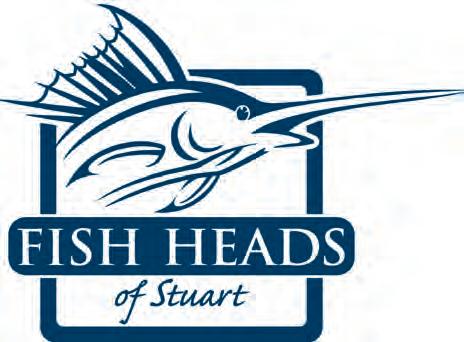
Small Business located on the beautiful grounds of Sailfish Marina. Located near the mouth of the Manatee Pocket, we are adjacent to Sandsprit Park and just minutes to the ICW and St. Lucie Inlet.



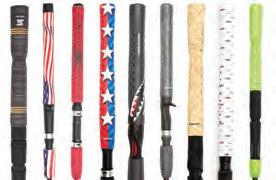
Capt. Scott Fawcett Off the Chain Fishing Charters (772) 285-1055 fishscottyf@bellsouth.net offthechainfishing.com


Spared from the tremendous influences of Ian, there is so much to be thankful for this November along the Treasure Coast. Our hearts go out to the west coast of Florida and those affected by such an incredibly devastating hurricane. This month’s cooler temperatures and northerly winds not only bring us out of Hurricane season but reverse the migration pattern of our favorite species redirecting them back to our south Florida waters. Dolphin, wahoo, blackfin tuna, kings and sails will surf their way back down the Gulf Stream and along the reefs in search of warmer water and schools of bait. There are already great reports of a body of fish making its way down from South Carolina, so
I expect big things this season. The last year we had reports like this was one of the best I’ve experienced since moving here in the early 80s.
Northerly winds should provide better action than others until the main body of fish get down here but that doesn’t mean stay at the dock until then, there are still dolphin, wahoo, kings and plenty of little tunny around right now to bend a rod on; not to mention some great bottom fishing for snapper and grouper.
While most of my time throughout the year is spent within 10 miles of the shoreline unless we’re swordfishing or going for tuna, I recommend focusing a little deeper for now until the water cleans up from the excessive amounts of fresh water being dumped. I always recommend having a couple spinning and jigging rods ready while your fishing, but when you’re venturing out a little deeper it’s even more important.
Keep an eye out for pieces of float, trees and weed lines that will hold bait and in turn dolphin and wahoo. Try pitching live baits or cut bait and definitely try a jig whether it’s slow pitch, high-speed, or even a bucktail.

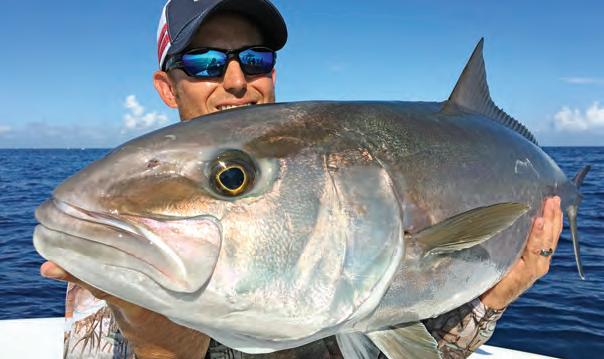

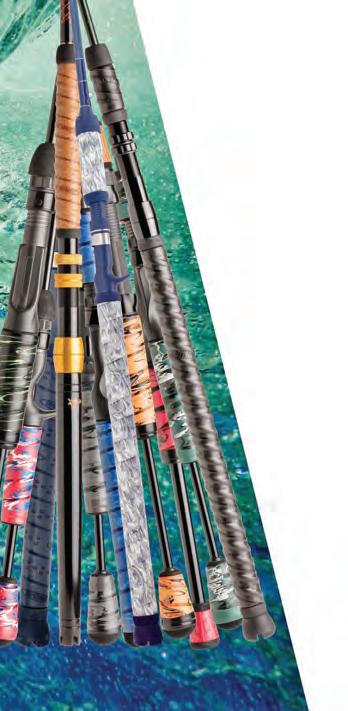
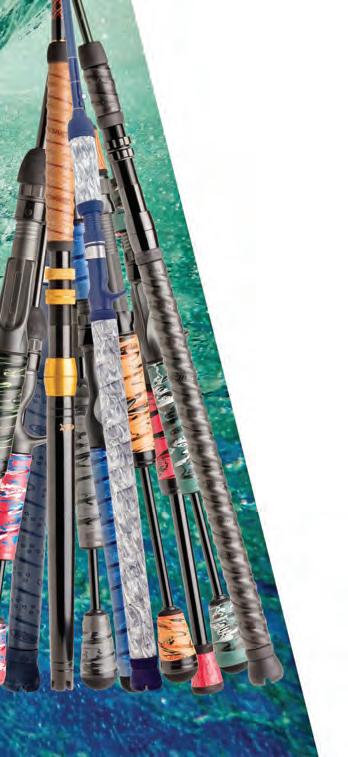
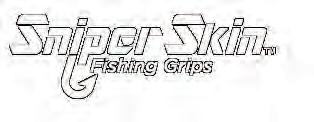
This time of year, we are typically


trolling, and I feel like it’s extremely important to offer a subsurface bait, especially while the water is still so warm. We use a Cannon 10TS Downrigger on cycle mode to get our baits down below the thermocline and trigger bites from lazy fish. It’s not uncommon for the biggest fish of the day to be caught on the down bait this time of year. November is also an excellent time of year to target swordfish so if you happen to have one of them on your bucket list, please give me a call so
we can get out there and target them. The last few trips have produced incredible action.


Whatever style of fishing you opt for this November, I wish you the best of luck and I hope your next trip is Off The Chain
Please give me a call if you have any questions or if you’d like to schedule a charter. Keep in mind we also have a brand new 39-foot Contender with a Sea Keeper and tower which should be arriving sometime mid-December.

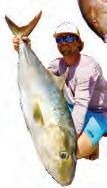


(772) 341 – 2274 www.chaosfishigcharters.com jon@chaosfishigncharters.com
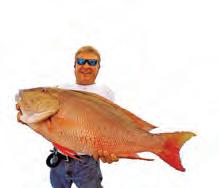
November has always been a transitional month for inshore fishermen. As the mullet run begins to fade out, most mullet will continue on with their migration patterns. This can create what I call the November lull. Switching your tactics will ensure a day of catching fish.
Typically, we start fishing baits low and slow for snook around bridges, or fishing flare hawks around bridge pilings for larger snook that are not
actively feeding on mullet once they leave our region.

This month can be extremely good for pompano if we can get a few cold fronts that will lower the river water temperature. Fishing pompano jigs around sandy shallow water flats, such as the Sailfish Point flats, can be very action packed for pompano, trout, ladyfish, jacks, bonefish, and bluefish. Drift fishing works best on a windy day allowing you to drift large areas of the flats until you find where the best action is.
Once you find a good area, it can be a good idea to anchor and fish pompano chicken rigs with sand fleas, clam strips, and or fish bites to capitalize on a good bite.

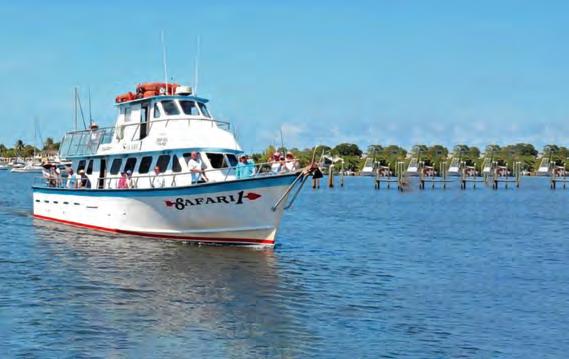
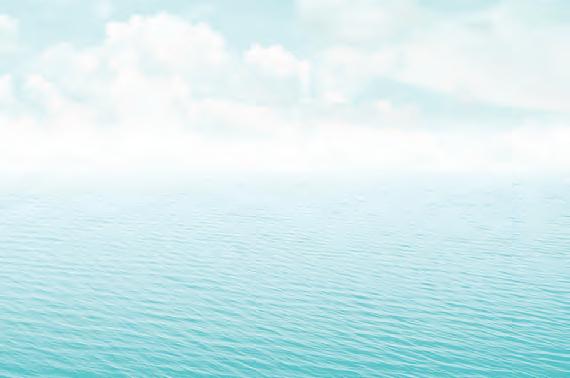
Nearshore fishing, we can expect to catch Spanish mackerel, pompano, jacks, and bluefish. Peck Lake south, beach-side, can be great fishing for Spanish mackerel this time of year.
Find a concentration of boats and chances are the mackerel will be there. Fishing Tsunami half-ounce glass minnow jigs will be your ticket to success. More flash, more bites. Use a small light wire leader to prevent
losing jigs to the toothy critters. A fast retrieve is needed to entice a bite. Cast out as far as you can then simply reel in a steady pace for steady bites. Cast, catch, and repeat! Tight lines!
Safari I Deep Sea Fishing Pirates Cove Resort and Marina 4307 SE Bayview St. Port Salerno Reservations: (772) 334-4411 Safari-1.com
The stormy eyes of November will have “Windy” as their name. Fresh breezes of 15 to 20 knots will accompany the first wave of bona fide cold fronts that will begin to sweep across our peninsula and become the key component in shaping the offshore playing field. “The wind is what makes the waves,” and strong velocity winds from the northwest, north and northeast will post up as frontal sessions that can “blow” for many days in a row, making for rough and choppy ocean conditions during this month. Consequently, there will be many days that will just not be fishable or will be prohibitive for small boat owners.
Anglers must especially pay attention to offshore weather forecasts to identify favorable weather windows that will allow for safe offshore fishing excursions during November’s varied weather menu. Despite the potential for choppy conditions this month, there will be favorable stretches of userfriendly days that will allow deep sea anglers to head east of the St. Lucie Inlet and fish the expansive and diverse reef ecosystem in our offshore backyard.
Bottom fishing strategies will
rule these days, as many species of snapper will have solidly populated the reefs from 50 to 150 feet of water. Lane snapper have the tendency to be the most abundant, especially in near coastal depths of 50 to 60 feet of water. Lane snapper can be found around most types of “bottom” and will be best caught by deploying cut baits tight to the reef structure. Keeper to medium size mutton snapper will be found on the same reef sites and fall to similarly presented baits (use longer leaders, with baits presented just away from the reef structure to catch the larger muttons). Grouper will also be a favorite target species for anglers this month, as the “open season” on these bottom brawlers continues through this month (and December).
November’s winds will be a double-edged sword for the near
coastal ocean, as they tend to create unfishable days due to heavy seas, but these choppy and churning waves will also have the potential to help oxygenate the water column, making
for a more active fish population. Watch the weather in November, and plan offshore fishing trips carefully as open weather windows will present anglers with bountiful, salty rewards.
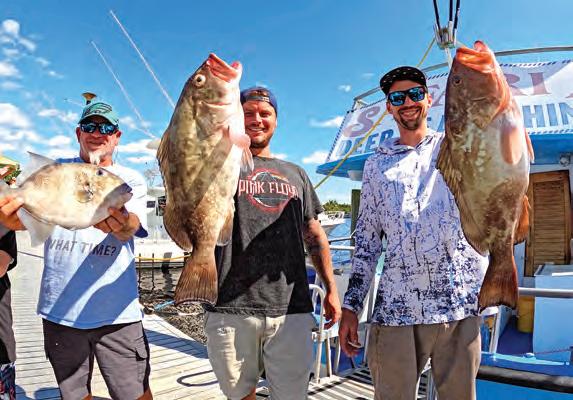

Capt. Scotty Gold Miss Fort Pierce Fishing (772) 766-0191 fortpiercefishing.com

As November falls upon us, we experience cold fronts. As the water temps drop, snappers tend to feed. Mutton and mangrove snapper get a bit excited. Action can be aggressive as long as the water temps fall slowly and not “crash.’
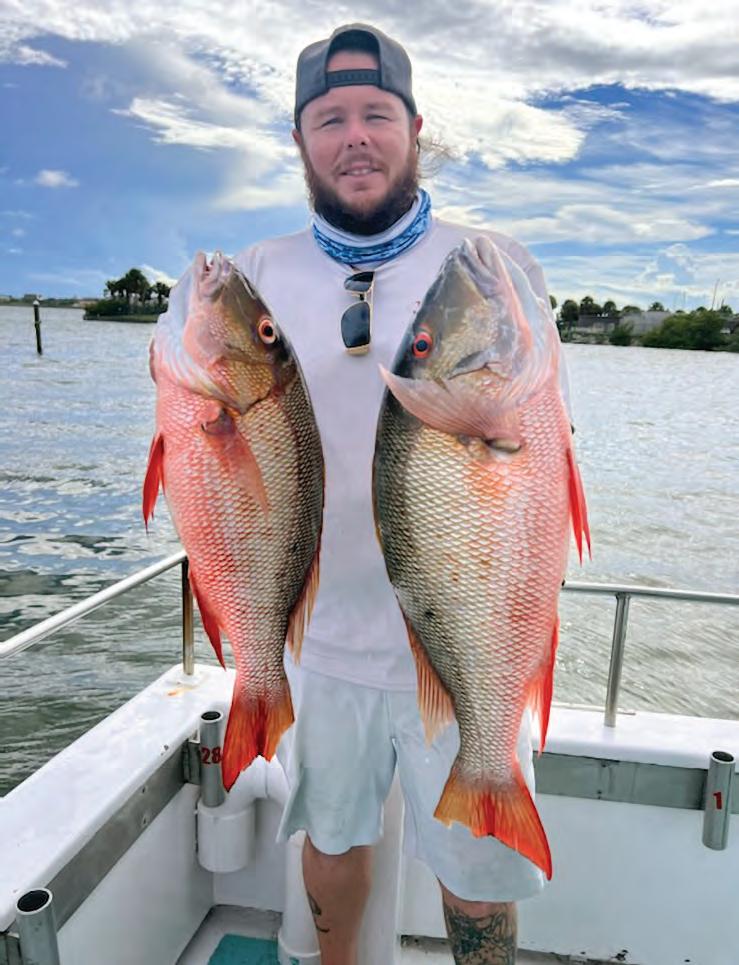
Trigger fish and porgies move in as well. Squid strips on a high/low rig (aka chicken rig) will work the best.
For all species, look to fish from 60-to-90 feet. As always, use grunt plugs and strips for bait.
Grouper is still on the menu. Look to fish in 60-to-250 feet of water with live or cut bait on the bottom. Take advantage of this fishing as it closes for the season on December 31, 2022 at midnight.
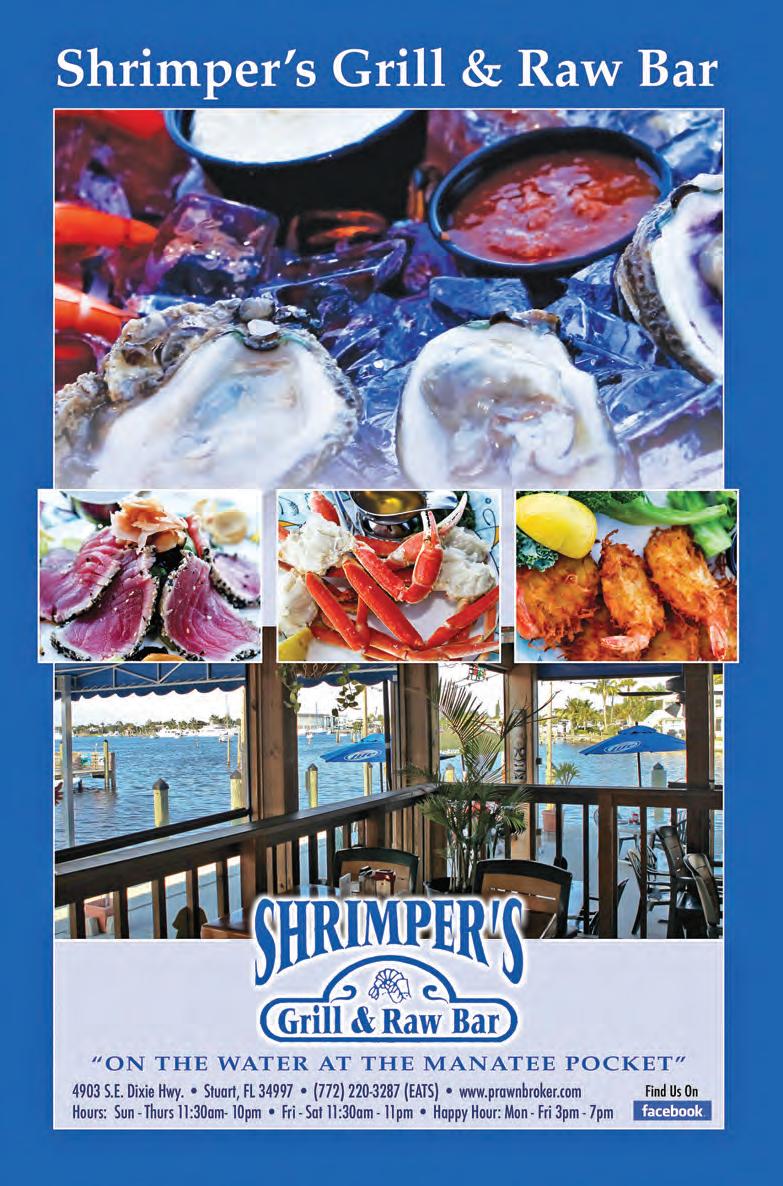
As November comes, so does the wind. We tend to get a stiff wind prevailing from the east with larger
seas. You will need to find a “weather window” to get out and fish.
The Miss Fort Pierce a full paint job, new generator, and air conditioning system. We are back on our seven-day-a-week schedule, weather permitting.
For now, as we say, we look forward to some great fall fishing and look forward to seeing you on board. Make a reservation and pick your spot at www.fortpiercefishing.com or call us at (772) 766-0191.

Cooler weather and cooler waters mean the fall migration is starting! November promises to be an excellent month to head out the Fort Pierce Inlet for some quality offshore fishing. Recent cool fronts and cold fronts contribute to firing up sailfish, kings, and mahi in our area. Trolling is always a great way to target mahi. Look for weedlines as well as color and temperature changes and start at about 80-90 feet of water. Also keep an eye out for flying fish and diving birds as they may indicate mahi in the area. Naked or skirted ballyhoo will give you a great chance for success with mahi but be prepared for sailfish action, too, since they follow the same bait. I recommend having live bait like pilchards and threadfins on
ST. LUCIE COUNTY INSHORE Capt. Adam White St. Lucie Flats Fishing Charters (609) 820-6257 www.stlucieflatsfishing.com
November has arrived on the Treasure Coast. It was a hot
hand if possible. When the school is located, switch a rod to live bait and even throw some chunk bait to get the frenzy started. Nothing beats the excitement of fishing a school of hungry mahi!

On days that conditions are not so favorable for long trips offshore, look for Spanish mackerel closer to shore and just outside the inlet. Diving birds are a sign that bait is in the area. These schooling fish will be on the surface eating bait and jumping out of the water. They give a good fight for all ages and are good on the table, especially when smoked.
Bottom fishing is still going strong with big mangroves and mutton snappers being caught on the 60-90 foot reefs. Keeping your bait on bottom is the key and current plays a big part in how much weight is needed. Other species like grouper and trigger fish can be found here too, plus keep a look out for cobia while fishing the reefs as there are reports of some nice ones being caught. I like to keep a flat line out when bottom fishing just on that chance to catch a keeper for dinner.
There’s much to be thankful for
summer, but things have been milder lately and it should provide us with some great fishing conditions this month. Water temperatures have been in the mid 80s as we transition into winter fishing. Look for some windy days this month with chances of rain. Enjoy November and get out fishing soon
The pompano are beginning to return to the river and will be a

here on the Treasure Coast with family and fishing at the top of the list. Remember to “Shop Small” this season and support your local bait and tackle shops. It really means a
lot to local businesses. I’ve been told gift certificates for fishing charters are a big hit, too! Wishing everyone a happy Thanksgiving and feeling grateful to keep Pullin Drag!
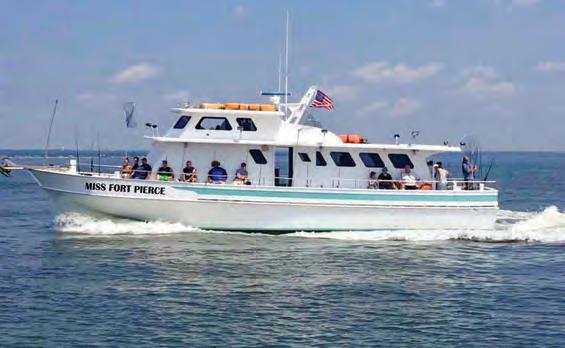
favorite target for anglers throughout the winter. When fishing the surf, use sand fleas or clams and the same in the river. Round Island, Middle Cove, and Big Mud Flats are all good areas to hunt for pompano. I typically won’t fish for them unless I see them skipping while idling around an area. Doc’s Goofy Jigs are great for using artificial lures for the pomps. Tipping the jig with a small piece of FishBites is a good way to get those finicky fish to commit.
Snook fishing will start to heat up as the water temperatures start to drop and the fish move from the shallows to more stable temperatures in deeper water. The inlets and bridges are good options

for looking for your slot through the fall months. Fish your tide changes with a live pinfish, mullet, or croaker on the bottom. Using a 4/0 to 6/0 hook with the appropriate weight to pin your bait to the bottom is a goto rig.
Look for mackerel, bluefish and jacks to fill up the inlet this month. Most shiny lures will work on these predators. You can also find them hanging in the channels up around Harbor Branch. Docks and bridges will hold black drum, sheepshead and the sand perch should also show up this month. Live or dead shrimp always works best on these fish. It might be breezy out there, but the fish will be feeding!
November with the arrival of its cooler weather historically kicks off the inshore fishing season in the Sebastian Area. While some of the warm weather glamor species such as snook and tarpon are still available the focus shifts from the Sebastian Inlet and the near coastal Atlantic to the Indian River Lagoon and the wide variety of species available to the light tackle angler. The flats, spoil islands and backwaters of the lagoon are capable of delivering all day action for seatrout, redfish, pompano, jacks, ladyfish, bluefish and you will likely come across some snook and juvenile tarpon in the process.
SEBASTIAN RIVER – Snook numbers will continue to increase in the Sebastian River as linesiders instinctively work their way into the

backwater winter refuges. Tarpon fishing will continue to be a possibility during warm periods. Sharp cold fronts, if they occur, will push a variety of species into the deeper warmer waters of the Sebastian River; including gator sized seatrout, ladyfish and even pompano.

INDIAN RIVER LAGOON – The moderate water temps expected in the lagoon this time of year are favorable for all the indigenous lagoon species and will also usher in the appearance

of migratory species such as bluefish, flounder and pompano. Anglers can fish their way as far back as they can get into the backwaters of the lagoon, where they will likely find redfish, seatrout and snook willing to strike top water plugs, D.O.A. jerk baits, and live shrimp. Fish D.O.A. jerkbaits, Goofy jigs, small plugs or live shrimp around the spoil islands and deeper flats to keep your rod bent with a mixed bag including trout and pompano. Seatrout season is closed November 1 through December 31.

SEBASTIAN INLET – The inlet will continue to yield snook and redfish to live bait anglers both day and night. Pigfish, pinfish, croakers and shrimp are the best baits for inlet snook fishermen. After dark large bucktails and plugs take their share of snook. The big news for November at Sebastian Inlet is usually the flounder run. The first good cold front in November signals anglers that it’s flounder time. Unfortunately, the harvest of flounder on the Atlantic side of the state is closed from October 15 through November 30. If you want to try and catch and release a trophy flounder in November, live mullet and mud minnows are excellent baits, and jigs will do the trick as well for flounder of all sizes.
NEAR SHORE ATLANTIC There will be some calm days in the late fall, and when the ocean is flat it is worth a ride out the inlet to take a look and up or down the beach. Pelicans diving will give away the location of schools of mullet and greenies which may be shadowed by tarpon, sharks and big jacks. Diving terns are usually associated with schools of glass minnows, a staple of the Spanish mackerel that are passing by on their southerly migration.
Tight lines!
Big Easy Fishing Charters (772) 538 - 1072 captwildey@bellsouth.net www.bigeasyfishingcharters.com
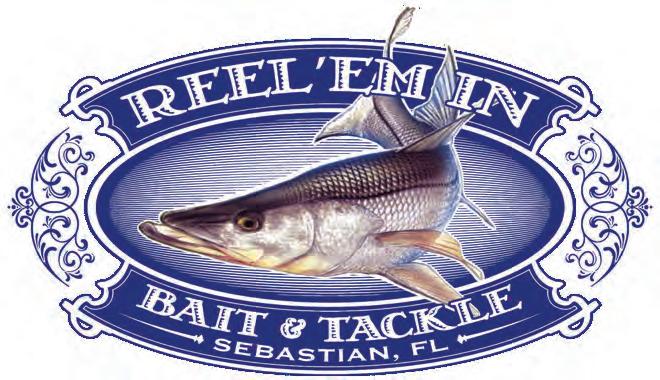


If the cold fronts start pushing down like some Novembers, we will see our usual push of Spanish mackerel from the beach out to 60 feet of water. Clark spoons and small feather jigs work great, always watch the sky for birds as well as for surface action since they’ll be feeding as they move south.
Cooler water should move some fish into the 60-foot reefs. Live bait slow trolled on the surface around structure should produce some king mackerel as well as a few cobia. It’s good to keep a spinning rod with a cobia jig ready just in case. Cobia are curious creatures that will often pop up when you stop over a piece of structure. The 80- and 90-foot reef should produce some good catches of lane snapper, trigger fish, and mutton snapper on the bottom. Also, good chance for kings and cobia.
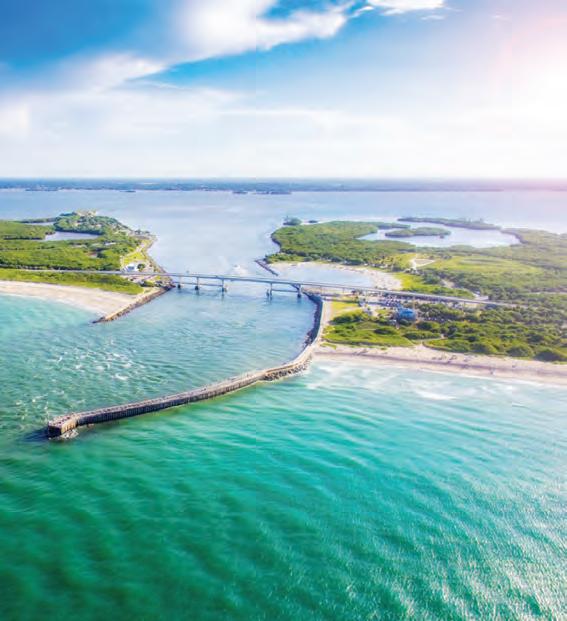
I don’t expect to see the big cold fronts we’ll see in December and January but just a slight cool down will change our water temps enough to move some fish. Always good to keep a log of water temps and conditions. These are handy to look back on year after year to give you a reference were to look for fish.
Offshore we will start to see some sailfish action, a few black fin tunas, occasional wahoo or dolphin around rips, temperature changes and weed lines. This will be good news for anyone that got new trolling gear and are itching to drag some ballyhoo.
The bottom structure from 160-to-260 feet should have good
numbers of amberjack. There always a good backup if the trolling bite is slow is to catch some live baits, thread fins, blue runners or grunts to drop a big rod down for an amberjack. AKA: Reef Donkey!
The weather will predict where the best fishing will be. Big seas will stir up the water and cause us to look deeper for better fishing. Hopefully we’ll see a calm November and keep clean water in close.
As always support your local tackle shops, that’s where we buy our bait and tackle. They typically know what’s biting and what we’re catching it on.







Fish on, gotta go!



Pushin’ Water Kayak Charters (772) 201-5899
Brian@tckayakfishing.com www.tckayakfishing.com
INSHORE: November will bring on the cooler weather and give the fish some relief from the heat. Snook, bluefish and Spanish mackerel should be on your radar. Kayak fishing the inlets, docks and seawalls will produce most of the inshore species. Live mullet is your best bet along with hair jigs and soft plastic jerk baits. The bluefish and Spanish mackerel will start to show on the beaches and push in the inlets. Any shiny and quickly retrieved presentation should entice a bite from these toothy fish.
OFFSHORE: Northeast winds will start to push through this month making beach launches a little more difficult. Pick your days wisely and be prepared to get wet on launch
and re-entry. Fish will start to move in shallow as the cold fronts push through. Look to target mahi, kings and sails in the 80-to-120 foot area trolling live goggle eyes and blue runners. Bottom fishing during this time is my favorite. Muttons and yellowtails will be lurking in the 60-to-100 foot reef patches. Frozen sardines, live mullet and frozen gogs on long leaders in the 40-pound class will work best.
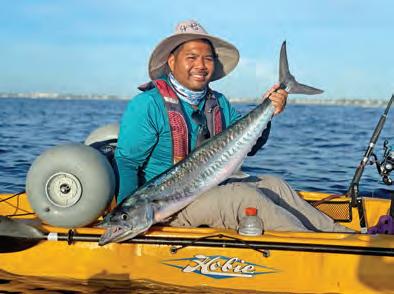
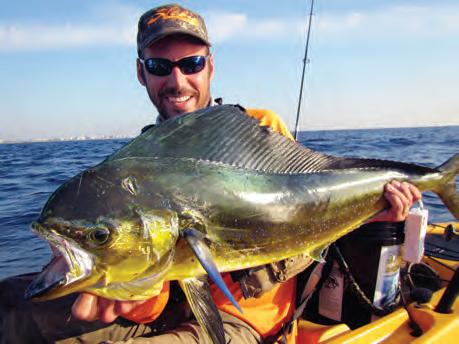
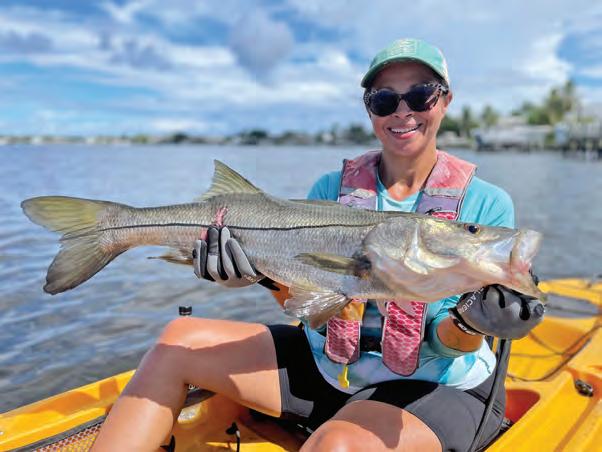

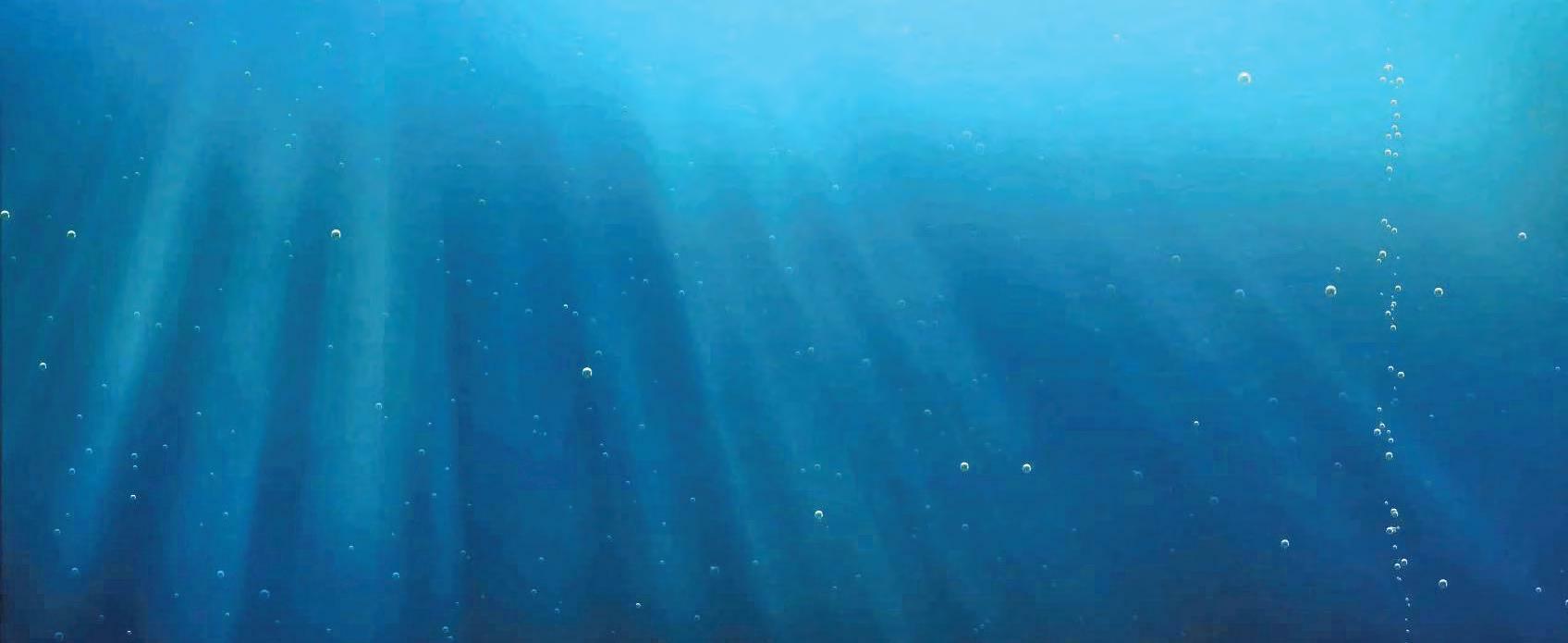
Check us out Pushin’ Water Kayak Charters on TikTok, Facebook, Instagram and YouTube for all the latest adventures my clients and I get into.
See you on the water!

1TU 2:42 AM 2.69 H
8:44 AM 0.51 L
3:31 PM 2.82 H
PM 0.78 L
2W 3:54 AM 2.71 H
AM 0.54 L
4:36 PM 2.83 H
10:32 PM 0.64 L
3TH 5:04 AM 2.8 H
11:00 AM 0.52 L
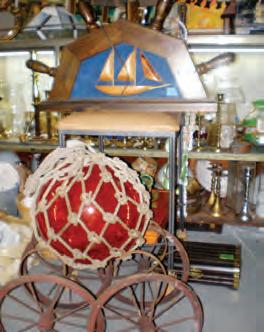
5:35 PM 2.88 H
11:30 PM 0.47 L
4F 6:06 AM 2.92 H
11:57 AM 0.49 L
6:29 PM 2.93 H
5SA 12:22 AM 0.3 L
7:02 AM 3.04 H
12:49 PM 0.45 L
7:17 PM 2.97 H
6SU 1:09 AM 0.17 L
6:51 AM 3.13 H
12:36 PM 0.43 L
7:01 PM 2.98 H
7M 12:52 AM 0.09 L
AM 3.17 H
PM 0.45 L
PM 2.95 H
8TU 1:34 AM 0.07 L
AM 3.15 H
PM 0.48 L
PM 2.89 H
9W 2:14 AM 0.11 L
AM 3.08 H
PM 0.55 L
PM 2.81 H
10TH 2:53 AM 0.19 L
AM 2.98 H
PM 0.64 L
PM 2.71 H
11F 3:33 AM 0.3 L
AM 2.85 H
PM 0.75 L
PM 2.6 H
12SA 4:13 AM 0.43 L
AM 2.71 H
PM 0.86 L 10:58 PM 2.48 H
13SU 4:55 AM 0.57 L
11:39 AM 2.58 H
PM 0.95 L
11:43 PM 2.37 H
14M 5:42 AM 0.7 L 12:26 PM 2.48 H
PM 1.02 L
15TU 12:33 AM 2.28 H 6:35 AM 0.8 L 1:16 PM 2.41 H 7:19 PM 1.02 L

16W 1:30 AM 2.23 H
7:35 AM 0.86 L 2:09 PM 2.37 H 8:19 PM 0.96 L
17TH 2:32 AM 2.25 H 8:36 AM 0.86 L 3:03 PM 2.38 H
9:14 PM 0.84 L
18F 3:33 AM 2.33 H 9:33 AM 0.81 L 3:56 PM 2.43 H 10:02 PM 0.67 L
19SA 4:31 AM 2.46 H
10:25 AM 0.73 L
4:46 PM 2.51 H 10:47 PM 0.46 L
20SU 5:24 AM 2.64 H 11:13 AM 0.62 L 5:34 PM 2.59 H 11:30 PM 0.25 L
21M 6:14 AM 2.81 H
11:59 AM 0.51 L 6:21 PM 2.68 H
22TU 12:14 AM 0.05 L
7:02 AM 2.96 H 12:44 PM 0.41 L 7:07 PM 2.76 H
23W 12:58 AM -0.11 L
AM 3.07 H
1:29 PM 0.34 L
7:54 PM 2.81 H
24TH 1:44 AM -0.22 L
8:38 AM 3.12 H
2:16 PM 0.31 L

8:42 PM 2.84 H
25F 2:32 AM -0.26 L 9:28 AM 3.12 H
3:05 PM 0.32 L
PM 2.83 H
26SA 3:23 AM -0.22 L
AM 3.06 H
3:57 PM 0.35 L
PM 2.78 H
27SU 4:17 AM -0.13 L
AM 2.96 H
PM 0.4 L
11:23 PM 2.71 H
28M 5:16 AM 0.01 L
PM 2.85 H
PM 0.43 L
29TU 12:25 AM 2.63 H
AM 0.17 L
PM 2.74 H
PM 0.43 L
30W 1:31 AM 2.57 H
AM 0.29 L
PM 2.66 H
PM 0.37 L
SEBASTIAN (INLET)
TIME OFFSET
High
HEIGHT
JENSEN BEACH (INDIAN
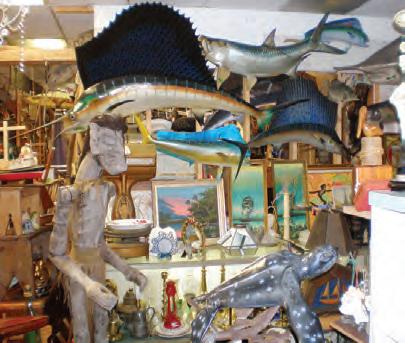

TIME OFFSET
High
Low
HEIGHT OFFSET
High
Low
ST. LUCIE INLET
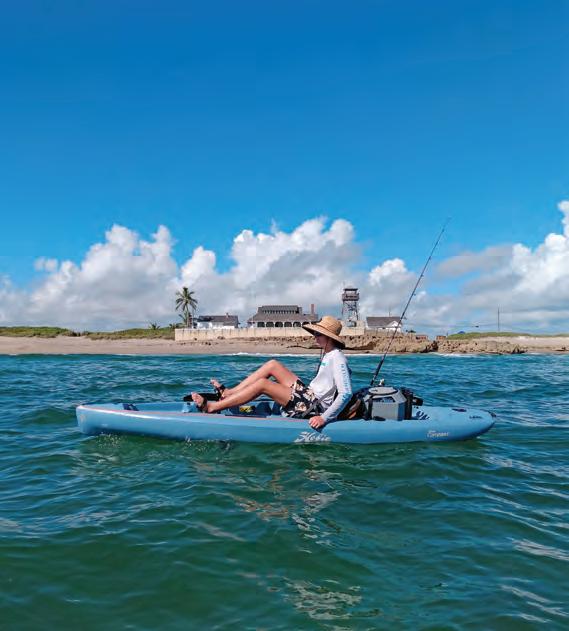
TIME OFFSET
Low

TIME
High
HEIGHT OFFSET
High
Heavy rainfall has triggered Lake Okeechobee to rise at a rapid rate. The largest rainfall of the year, thanks to Hurricane Ian, fell in the Kissimmee Basin that feeds Lake Okeechobee making it necessary for the water structures to be opened wide, triggering an inundation of water coming into Lake Okeechobee. Some estimate that the lake may reach 16 feet. Others insist it will be lower. Whatever the final level, it is great for fishing and the local


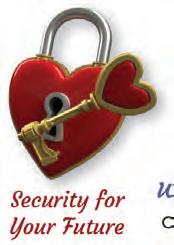

As the long hot summer finally comes to a close, the water temperatures in Lake Okeechobee are dropping. The water level is high enough to provide access to the marsh areas as well as the shoreline cover. Each fall, savvy anglers eagerly anticipate the first wave of large female bass as they move along the shallow shorelines, where they gorge themselves. From October through November and into December, Lake Okeechobee’s bass go into feeding mode, chasing and eating shiners, shad, and whatever food morsels are available.



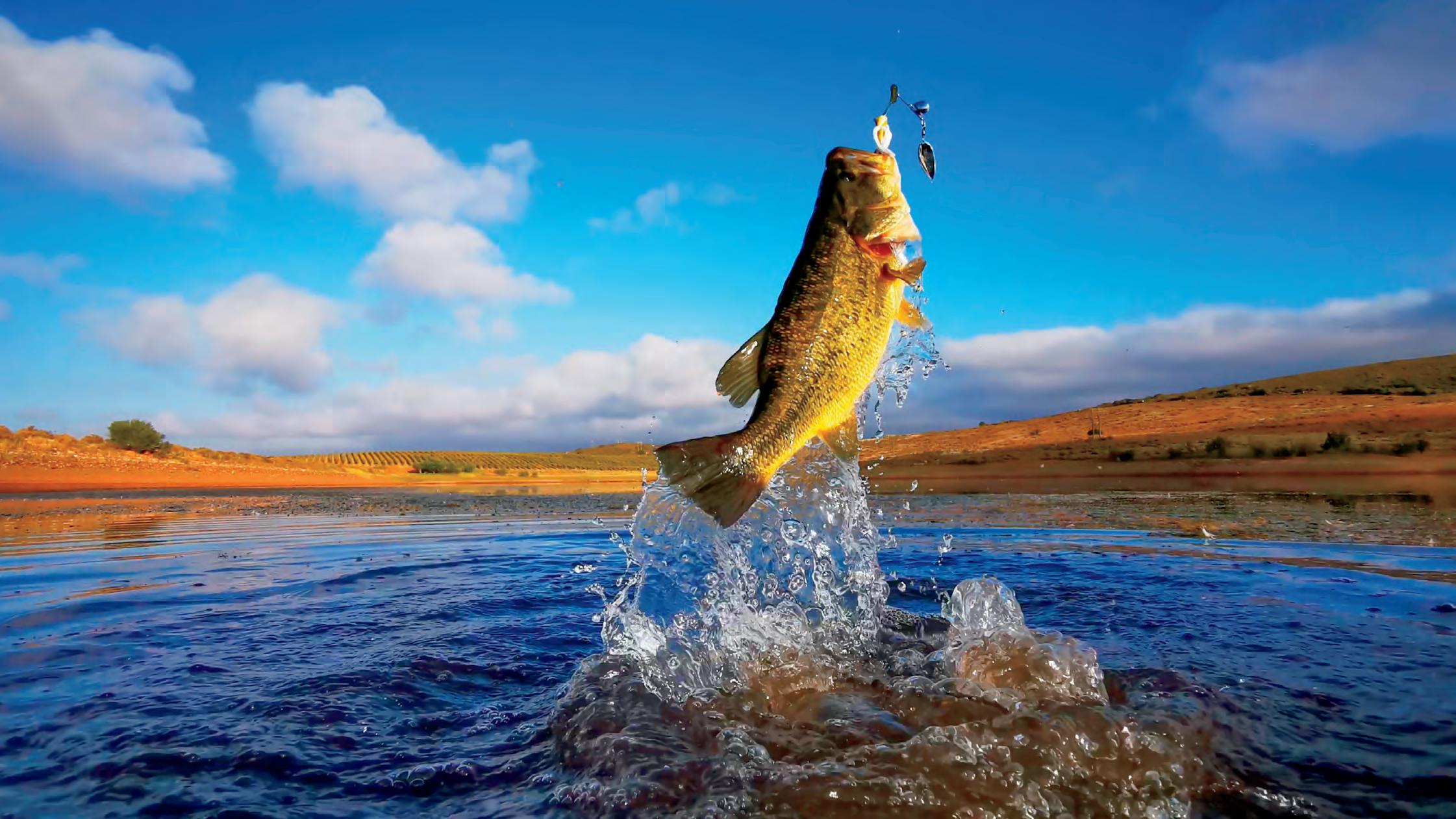

Once the bass locate a food source they will hang out in that particular area as long as the food is available. Last year we located a spot early in October that bass frequented fall, winter, and spring, with bass coming and going in conjunction with the moon phases. We were able to catch bass in this same area during pre-spawn, spawn, and post-spawn. It is not easy or normal to find a spot that will produce big bass and large numbers of bass. Sometimes a little luck plays into it. We fished this productive spot in many different
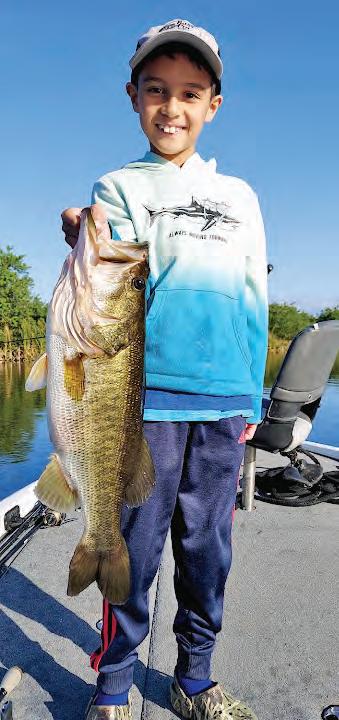
As the year winds down and fall approaches, divers on the Treasure Coast can expect great diving provided the weather cooperates. Autumn brings with it cold fronts and shorter weather windows, so divers are wise to stay prepared to take advantage of calm seas when the opportunity arises. After a period of inclement weather, a little scouting will help determine conditions beneath the surface and make for a more enjoyable day.
Diving is great in our area yearround. Unfortunately, strong winds associated with cold fronts could make area inlets challenging or even treacherous. However, even after summertime has passed, sea conditions below the surface are consistently favorable due to the
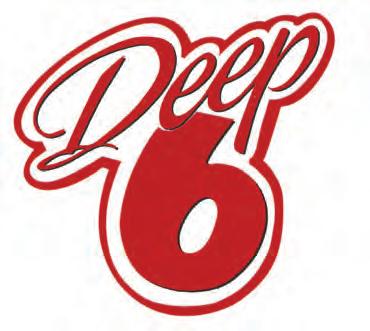





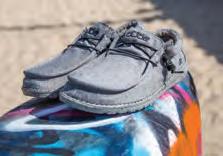

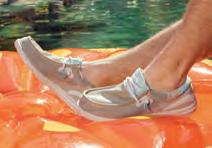


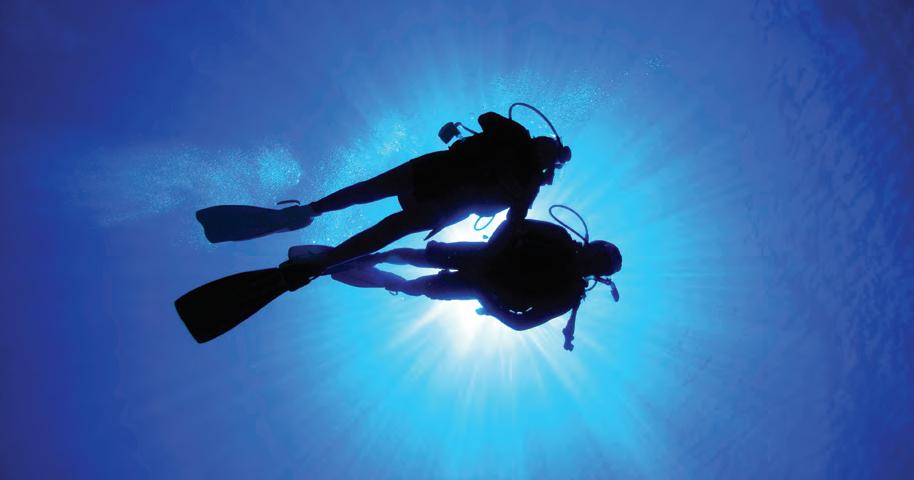
proximity of local waters to the Gulf Stream. A strong east wind may push this warm-water current closer to shore resulting in good visibility and warm temperature even if seas are rough.
Weather windows this time of year maybe short and calm, seas may only last for a day or two. Divers should stay prepared by having tanks filled in advance, dive sites selected, and gear packed so when conditions cooperate on short notice, they can take advantage. If equipment has not been


used for a while it would be smart to assemble the scuba kit and check for proper function- any issues should be dealt with prior to the next trip.




During November, vis reports could be scarce, and divers may have to do some reconnaissance when planning the next trip. The Titan tug out of Stuart is a great dive site to test visibility, temperature and current since it is directly east of the St Lucie Inlet and just a few dozen feet from the Six Mile Reef. A quick bounce dive to determine conditions
could prove beneficial. If vis is bad, head south towards the Loran Tower ledge or reefs off Hobe Sound. If vis is good, dive sites closer to shore maybe better including the Donaldson Reef area, Guardian Reef, Pipe Barge or the Cement (concrete) Barge. This time of year brings changes to local reefs in the form of more frequent strong winds and cold fronts. When conditions allow though, divers can make great dives if they remain prepared and poised to take advantage of narrow weather windows when they arise.

Ihonestly love the summer heat and all of the fly-fishing opportunities that come with it, but this year I’m excited for our winter fishery to start. Sight fishing the flats and the shallow parts in our area is just too much fun to pass and there are so many more areas in Florida I‘ve never fished before. It’s hard when you work on a day-to-day basis on the water to keep up with your own fishing time, but this year it’s go time for me. I’m getting out my lighter rods, paired them with the right reels and lines, tied longer
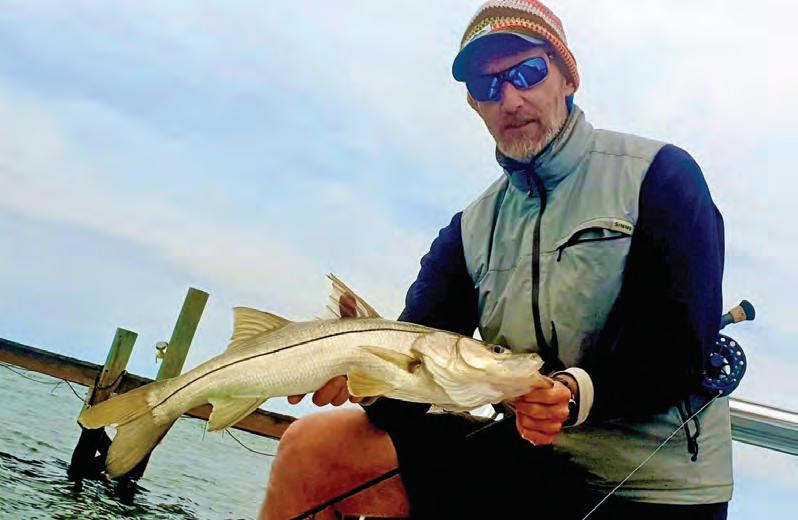
leaders and tied different fly patterns. There are a lot of the same flies I use all year but then there are some patterns like crab flies or Clousers in different colors and let us not forget the total different looking flies I use for the Spanish mackerel.
All in all, I’m very excited! I might even go up north to do some Spey fishing for steelhead


again. It’s been a while since I got cold feet and stiff fingers in freezing water temperatures waiting for the one pull, who knows?
Capt. Michael Mauri www.mauriflyfishing.com michael@mauriflyfishing.com (772) 485-3321
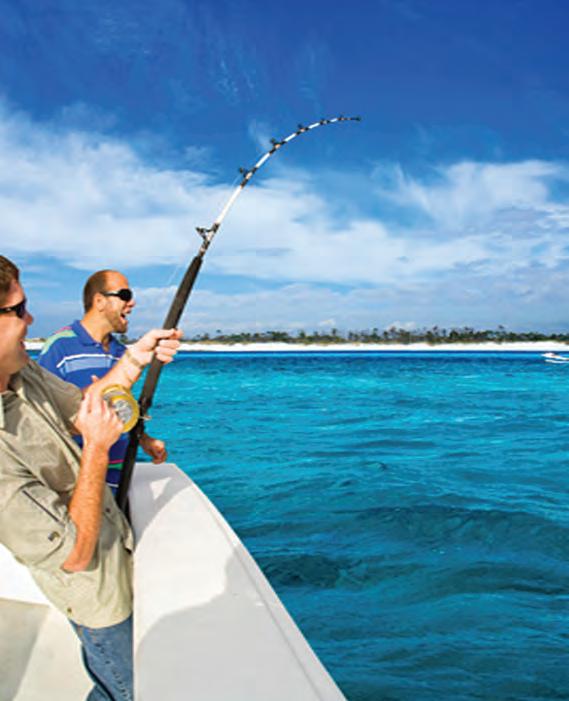




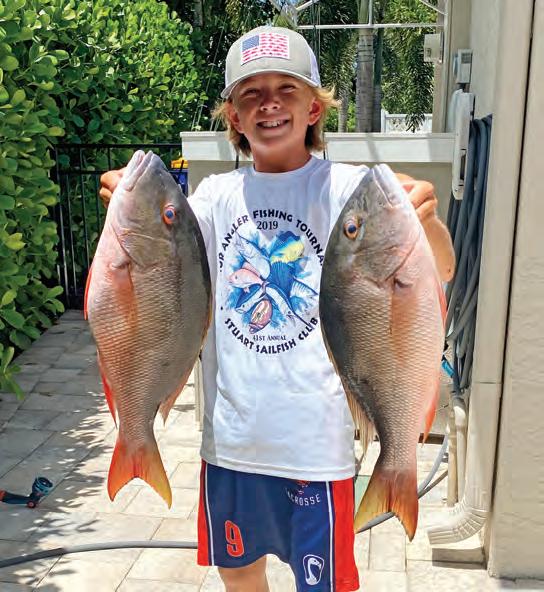
Asa Florida native and fairly well traveled sailor, I have accumulated some personal experience with hurricanes. Each hurricane and each near miss have a psychological impact, and leaves a different impression on my life, those run the gamut from benign to acute. I have been in the eye of Cleo, Betsey, Inez, Ella, Andrew, Frances, Jeanne and Wilma. I was offshore on a sailboat in Ella and the “Perfect Storm” and a powerboat in Edouard. I’ve survived many near misses and traveled to several sites of devastation. Each experience creates a different kind of memory.

My childhood memories of hurricanes are mostly of hurricane preparations and the emotional tension expressed by the adults and then the weird world after the storm. Some memories I would describe as “fond,” like meeting
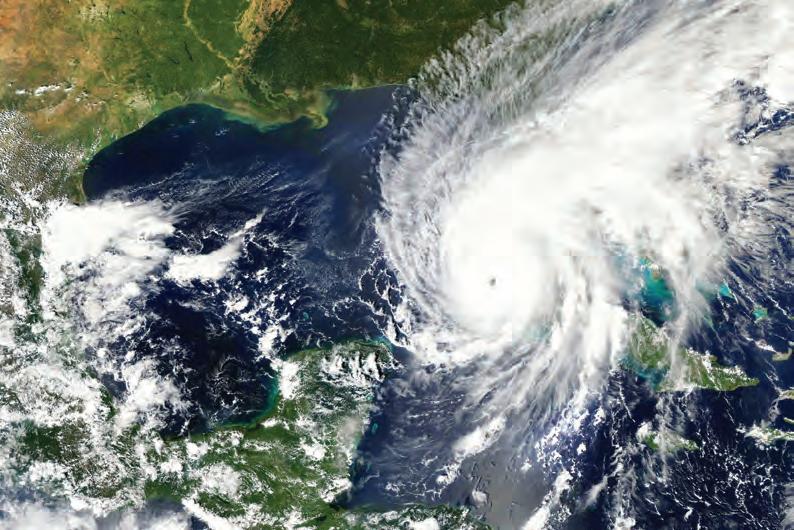
the Gibbon ape “Cleo” for the first time a few days after the storm, or riding bicycles in really flooded streets, or watching ACOE troops set up a Bailey Bridge so traffic could resume out to our island home. Tropical storms and hurricanes become a different kind of memory in my adolescence and adulthood. I spent quite a number of hurricane seasons on boats often trying to avoid the worst of a storm. But I did have a couple of opportunities to
experience simultaneous cyclonic fury and human powerlessness in a big ocean on a small boat. It’s a humbling all-be-it exhilarating experience. As a marine surveyor and insurance adjuster, I had several opportunities to visit sites of destruction and maritime chaos in the second half of the 80s and early 90s. I then experienced Andrew in
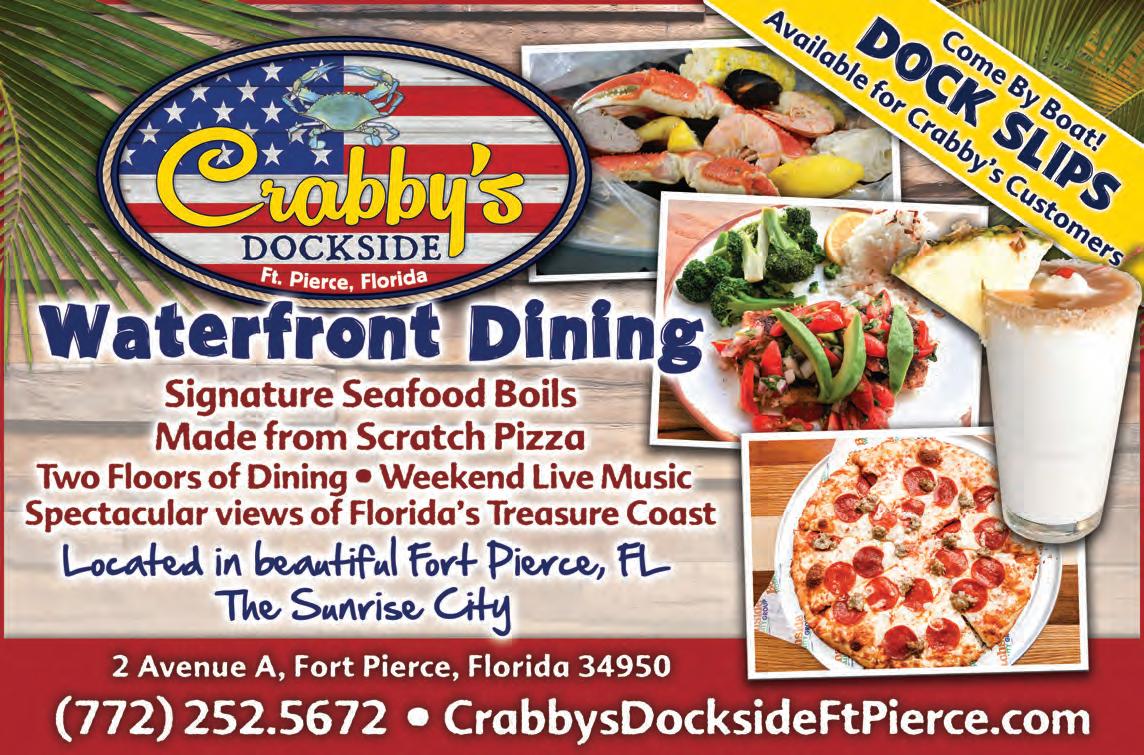

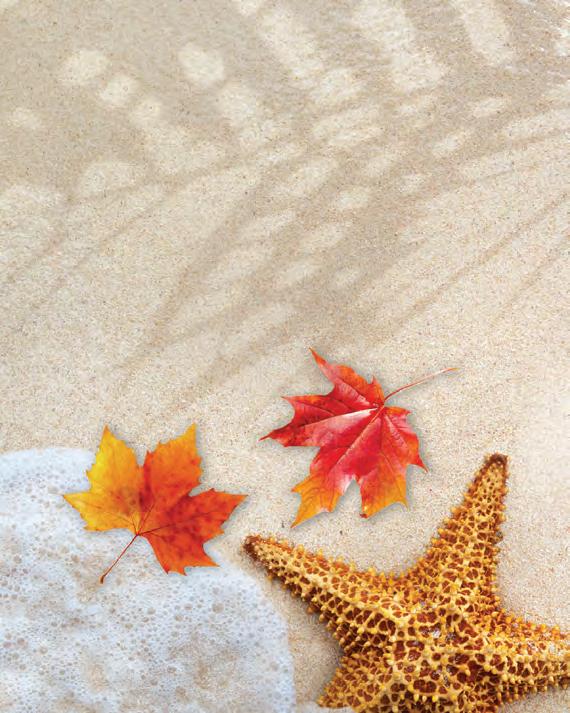
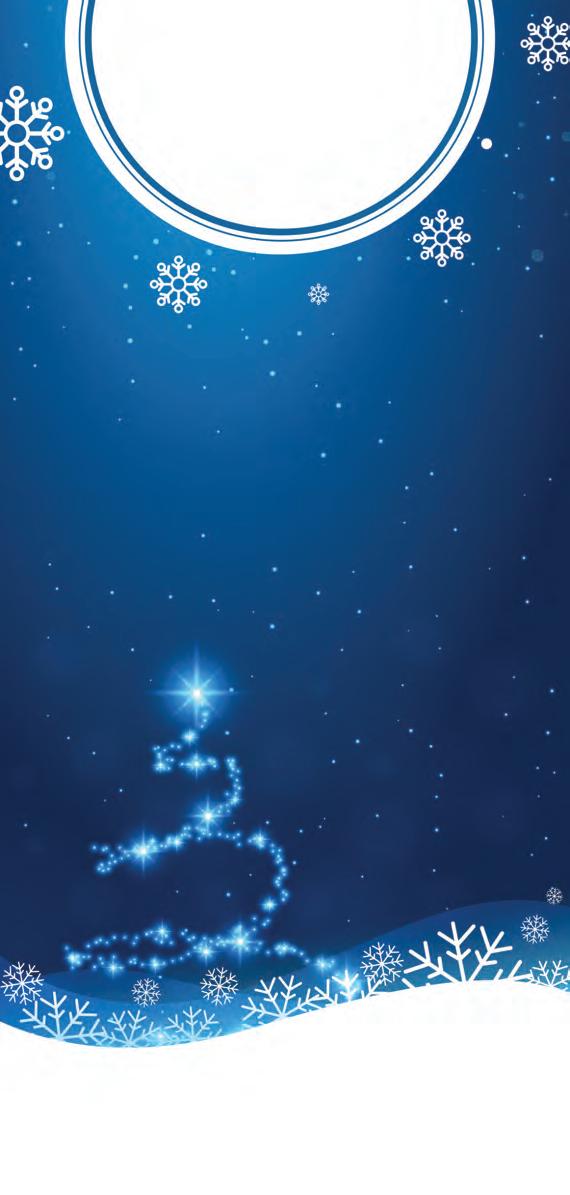
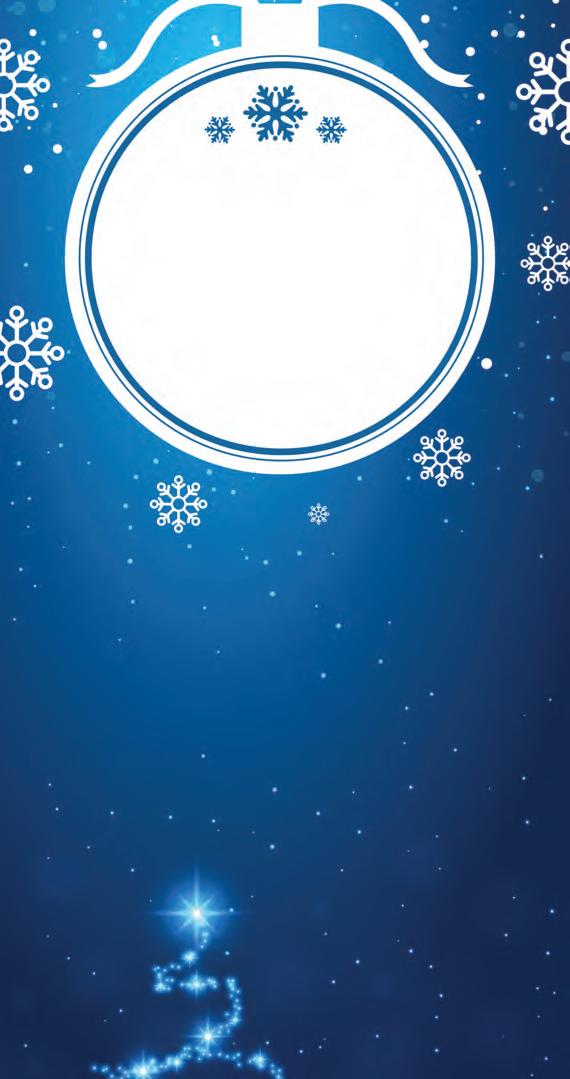
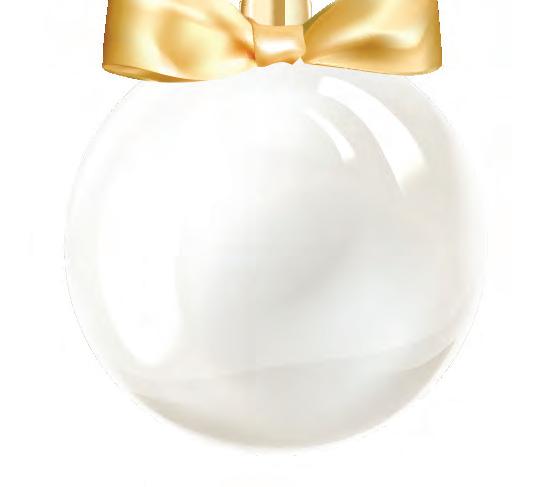
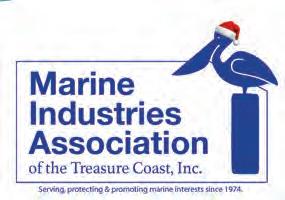




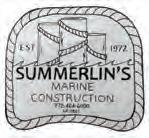

Dec. 1-4, 2022










35th Pirate’s Cove Sailfish Classic. Registration now open. www.piratescovesailfishclassic.com

Dec 8-10, 2022 Stuart Sailfish Club 69th Light Tackle Sailfish Championship, Stuart. www.stuartsailfishclub.com

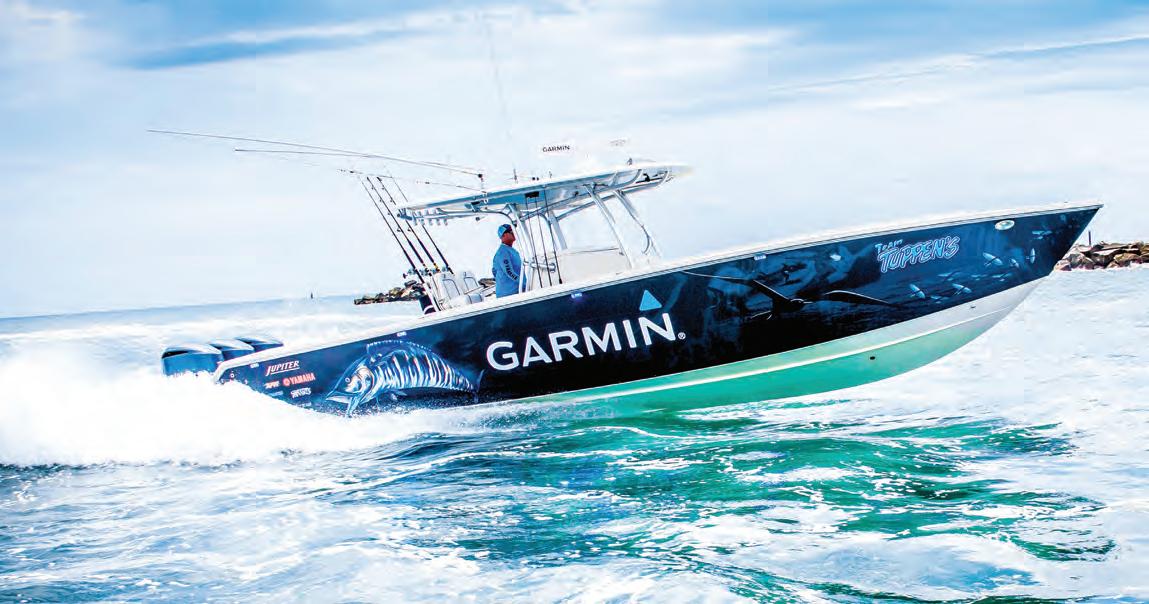
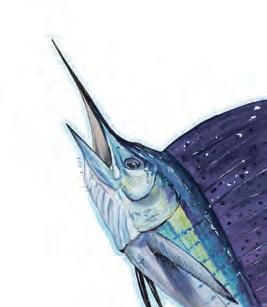
Dec. 15-17, 2022 Fish Heads of Stuart 10th Annual Quickie Sailfish Tournament. Captains Meeting Dec. 15; Fish Days Dec 16-17. www.fishheadsofstuart.com


Jan. 9-14, 2023 Pelican Yacht Club Invitational www.pelicanyachtclub.com
Submit
October 7, McCulley Marine Services (MMS) deployed 2,000 tons of concrete reef materials on the Lee E. Harris Memorial Artificial Reef Site near the FishAmerica Foundation reefs. The concrete materials were deployed in four different areas with just a few feet between each reef. All concrete was left over from the Las Olas Marina which had been demolished in September. The deployment was free to the St. Lucie County Artificial Reef Program and will complement the FWC-funded reefs that will be deployed in the area.
While demolishing the Las Olas Marina in Fort Lauderdale, MMS was confronted with the task of disposing the marina materials. From the 28,000 tons of concrete MMS had deployed for St. Lucie County over the last 17 years, they knew that the materials would make excellent reefs. After checking with other coastal counties, MMS decided to deploy the materials offshore St. Lucie County.
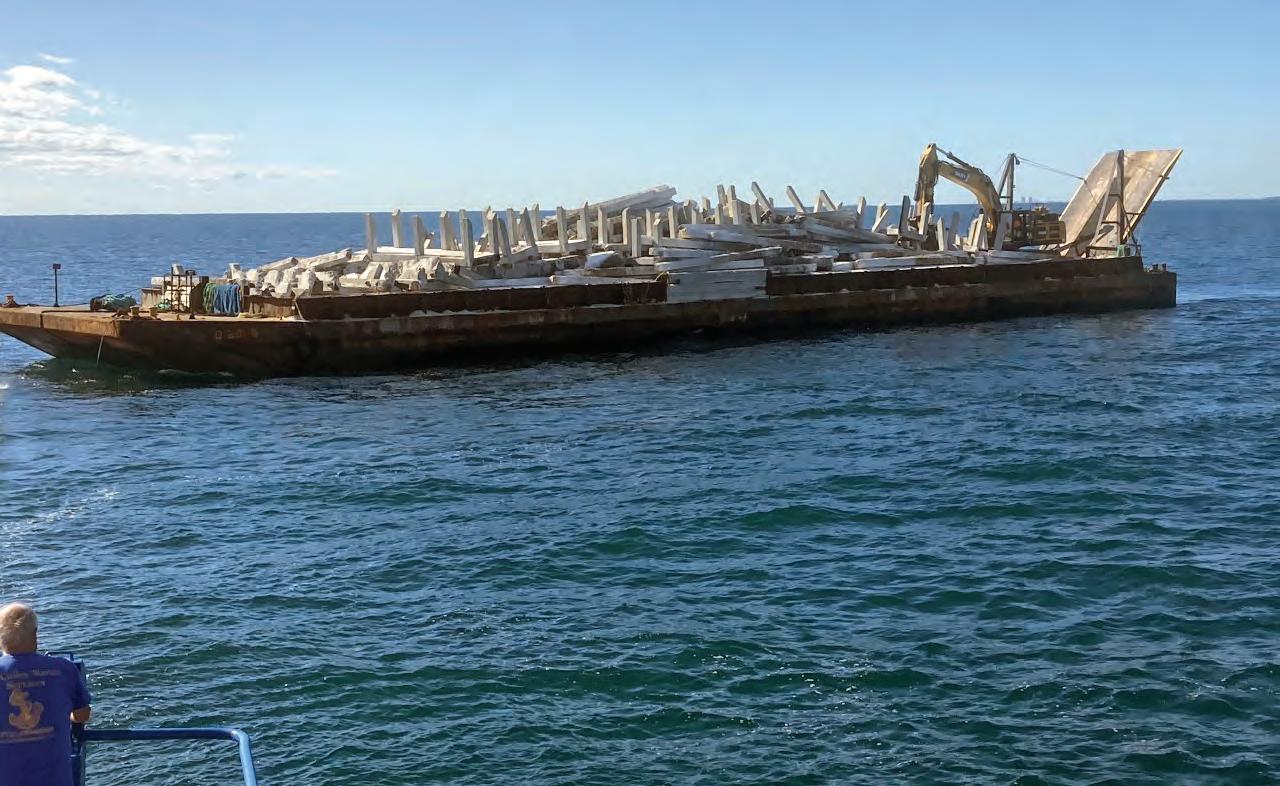
The larger reef complex will be used by many recreational boaters for fishing and diving. Providing recreational activities is a major impetus for artificial reefs since the County’s Artificial Reef Program receives much funding from taxes on recreational gear like boats, fishing rods, and dive gear. The first four of many different reefs around the FishAmerica Foundation reefs will become home to many species of gamefish, including mutton snapper (Lutjanus analis), black sea bass (Centropristis striata), and kingfish
(Scomberomorus cavalla). The large size of the reef complex will promote drift fishing and diving.
The reefs will also serve as conservation reefs. Numerous sightings of loggerhead turtles (Caretta caretta) have been made near the location of the proposed reefs, including one turtle that was photographed sleeping on an artificial reef at night during turtle nesting season and numerous reef turtles surfacing over other reefs.
Juvenile fish, like gray snapper (Lutjanus griseus) and black seabass, have also been observed near the proposed reefs. This reef site creates habitat for more tropical species near the extent of their range. Occasional visits by yellowtail snapper (Ocyurus chrysurus) and hog snapper (Lachnolaimus maximus) have also been documented on artificial reefs in this area leading to speculation that these reefs may help tropical fishes expand their range.
These reefs may also be important in the study of the connectivity of artificial reefs between artificial reefs and between artificial reefs and natural habitats. Members of the Florida Atlantic Coast Telemetry network (FACT) have installed acoustic receivers on two of St. Lucie County’s artificial reefs to the south on the Stan Blum Memorial Reef Site.
Thousands of returns have already been received from many species of tagged fish including migratory cobia (Rachycentron canadum) and schooling lemon sharks (Negaprion brevirostris) on these reefs, underscoring the role these
large reefs play in providing habitat for fishes and fish movements. The St. Lucie County Artificial Reef Program, working in conjunction with Florida Atlantic University’s Harbor Branch Oceanographic Institute campus and FACT, is working to establish an acoustic receiver on this site that will detect tagged fish and further elucidate the importance of the County’s large artificial reefs to fish populations.
The M/V Time continues her journey into becoming St. Lucie County’s next vessel reef. The 501(c)3, Marine Cleanup Initiative,
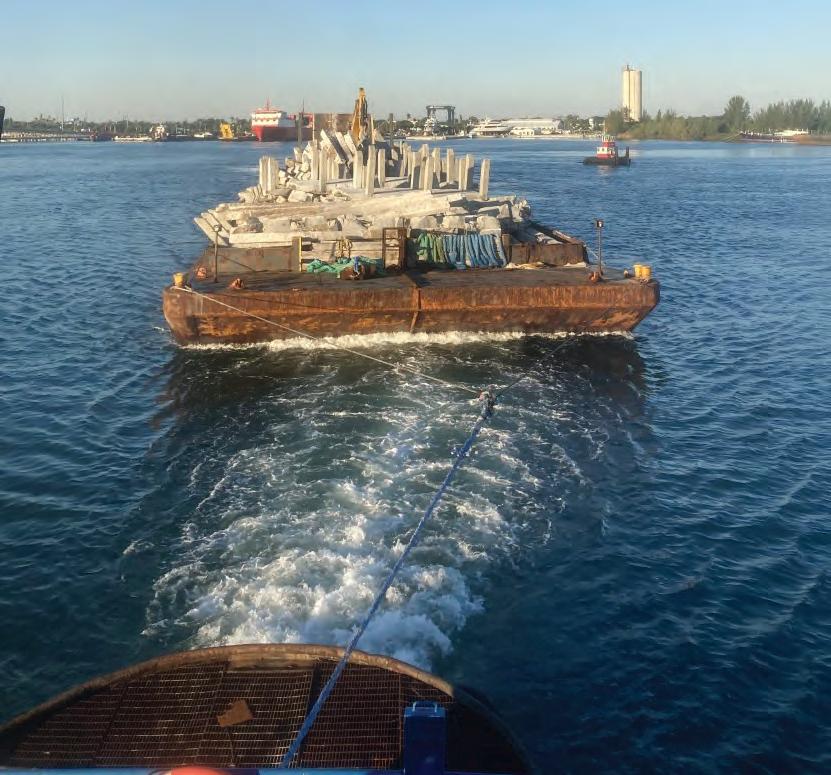
Inc. (MCII) has brought the vessel to Fort Pierce for cleaning and is using MMS to clean and deploy this vessel. It will become the AA Hendry Reef after the 19th century Treasure Coast settler. In mid-October MCII will hold a fundraiser to help remember this pioneering family, and to deploy this, and other vessels.
For more information on the St. Lucie County Artificial Reef Program, contact Jim Oppenborn, St. Lucie County Coastal Resources Coordinator, at oppenbornj@ stlucieco.org or (772) 462-1713.
Blue Crab Cake Benedict
• 1 pound Florida crabmeat, drained, shell pieces removed


• 1 large Florida tomato, sliced

• 4 eggs, pan fried
• ¼ cup red onion, finely chopped
• 2 tablespoons fresh parsley, chopped
• 3 tablespoons light mayonnaise

• 2 tablespoons Dijon mustard
• ¾ teaspoon seafood seasoning
• ½ teaspoon Worcestershire sauce
• 2 egg whites, lightly beaten
• 1 ½ cups panko (Japanese breadcrumbs), divided
• 2 tablespoons olive oil
Hollandaise Sauce
• 3 eggs, yolks separated
• ¼ teaspoon Dijon mustard
• ½ lemon, juiced
• Hot pepper sauce, to taste
• 1 stick unsalted butter, melted
• Sea salt, to taste
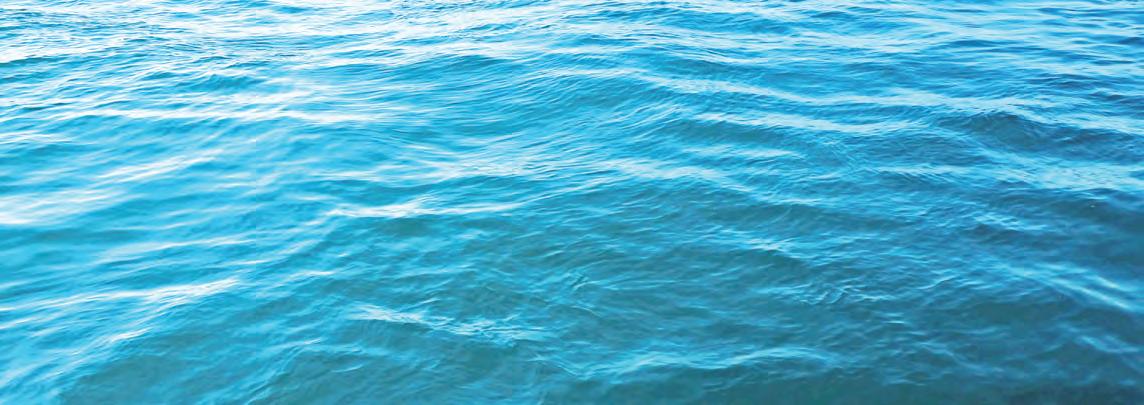
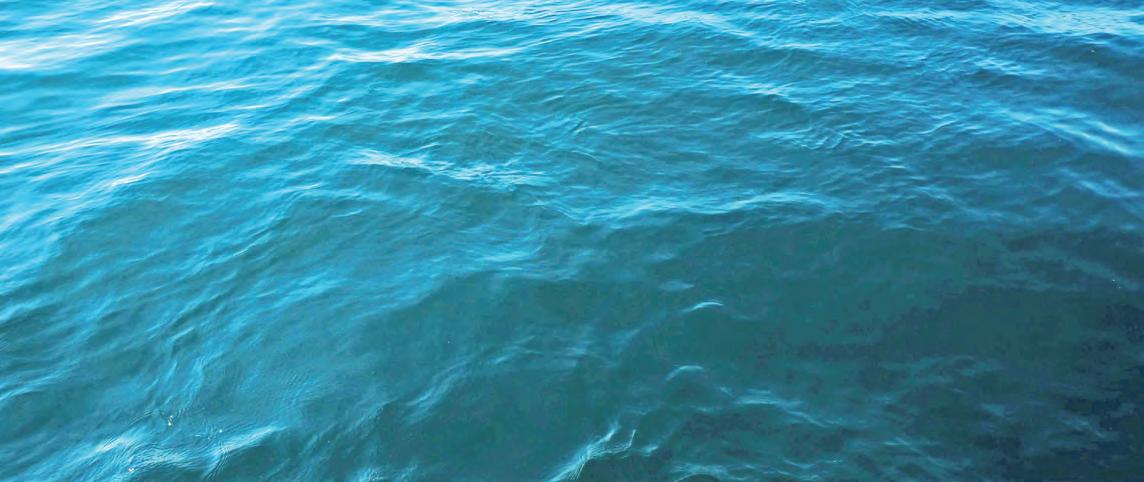
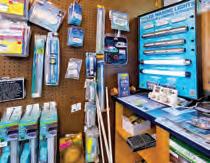
Blue Crab Cake Benedict: Combine the red onions, parsley, mayonnaise, mustard, seafood seasoning, Worcestershire sauce, and egg whites a medium bowl. Gently fold in crabmeat and ¾ cup panko. Cover and chill 30 minutes. Shape the crab mixture into 8 patties about ¾-inch thick. In a shallow dish, roll patties in remaining ¾ cup panko, coating evenly. In a nonstick skillet over medium heat, heat oil and cook 4 crab cakes at a time for 7 minutes until golden brown on each side.
Hollandaise Sauce: In a blender or food processor, add mustard, lemon juice, egg yolks and a few dashes of hot pepper sauce. Blend
ingredients and slowly add the melted butter until the ingredients thicken. Taste hollandaise and adjust seasoning with salt and hot pepper sauce. Serve sauce immediately.
To assemble Florida Blue Crab Cake Benedict, place one or two slices of tomato on each plate. Season the tomato lightly with salt and pepper. Place a pan-fried egg over each tomato slice. Add a crab cake to the top of each pan-fried egg. Evenly distribute the hollandaise sauce over the top of each crab cake and serve immediately.
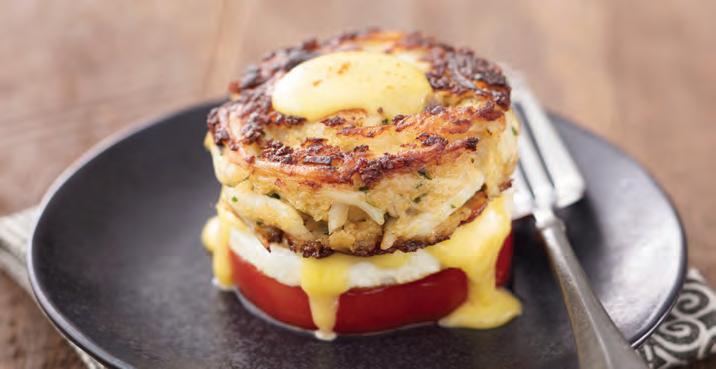
See more Fresh From Florida recipes at www.followfreshfromflorida.com.






southwest Miami/Dade. I stayed in my in-law’s home in what is now Palmetto Bay. I had my world rocked!







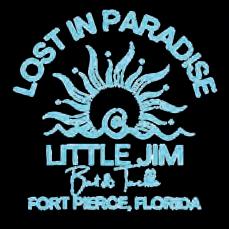

I lost a boat that I had built, to storm surge in Hurricane Frances and I watched that damaged grounded boat get beat up in Hurricane Jeanne. I traveled to Mississippi after Katrina, and I witnessed the Bahamian devastation left by Dorian. I have endured the anxiety of awaiting a local landfall of a buzzsaw and the relief of a near miss. I’ve picked up a fair share of storm debris and worked on neighborhood recovery efforts as well as providing shelter for storm refugees.
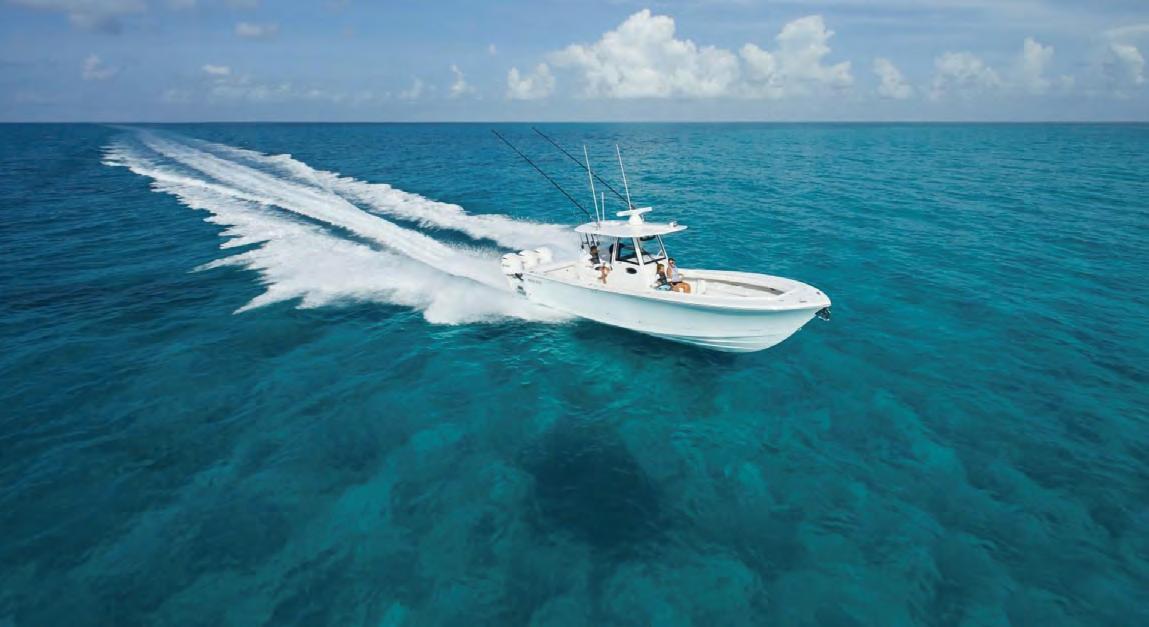
Hurricanes are depressing and I have great empathy for those suffering the fatiguing effects of Ian. One lesson I have learned, is that each experience needs to teach me something—I can’t rely on luck, and I’m the luckiest guy I know.
Today, the river that runs behind my house is a polluted mess. Two weeks ago, it looked like a prolonged period of no discharges from Lake Okeechobee and little rainfall might portend some seagrass recovery. What had been often almost turquoise is now root beer. I hope sunlight will soon be able to penetrate to the
bottom and salinity will return to the Estuary. But what’s in the water?

As people debrief and pontificate about the disaster that Ian wrought in southwest Florida and the impacts to central and northeast Florida, I hope people will remember to think about water quality in the natural drainage systems. What are the nutrient and bacterial inputs from flooded fields and overwhelmed sewage treatment facilities? Are the sequences and procedures that utilities specify for returning to service appropriate and well regulated? Is the amount of time given to marine traffic to seek safe harbor enough before bridges and locks are required close down? Does the rail system really need that much time to evacuate given the accuracy of storm forecasting? The list goes on and it’s going to be expensive, but these difficult conversations need to be had. But what do I know?
If you are a business owner and would like to learn more about the benefits of supporting Indian Riverkeeper, email Exec. Director Jim Moir at keeper@theindianriverkeeper.org or call (772) 341-4953. Contact us if you are interested in volunteering at future events, which we will announce on our Facebook page, “Indian Riverkeeper.”



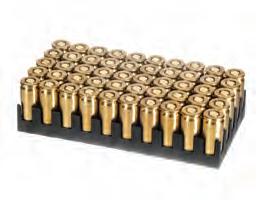




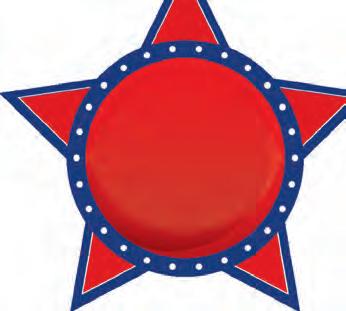


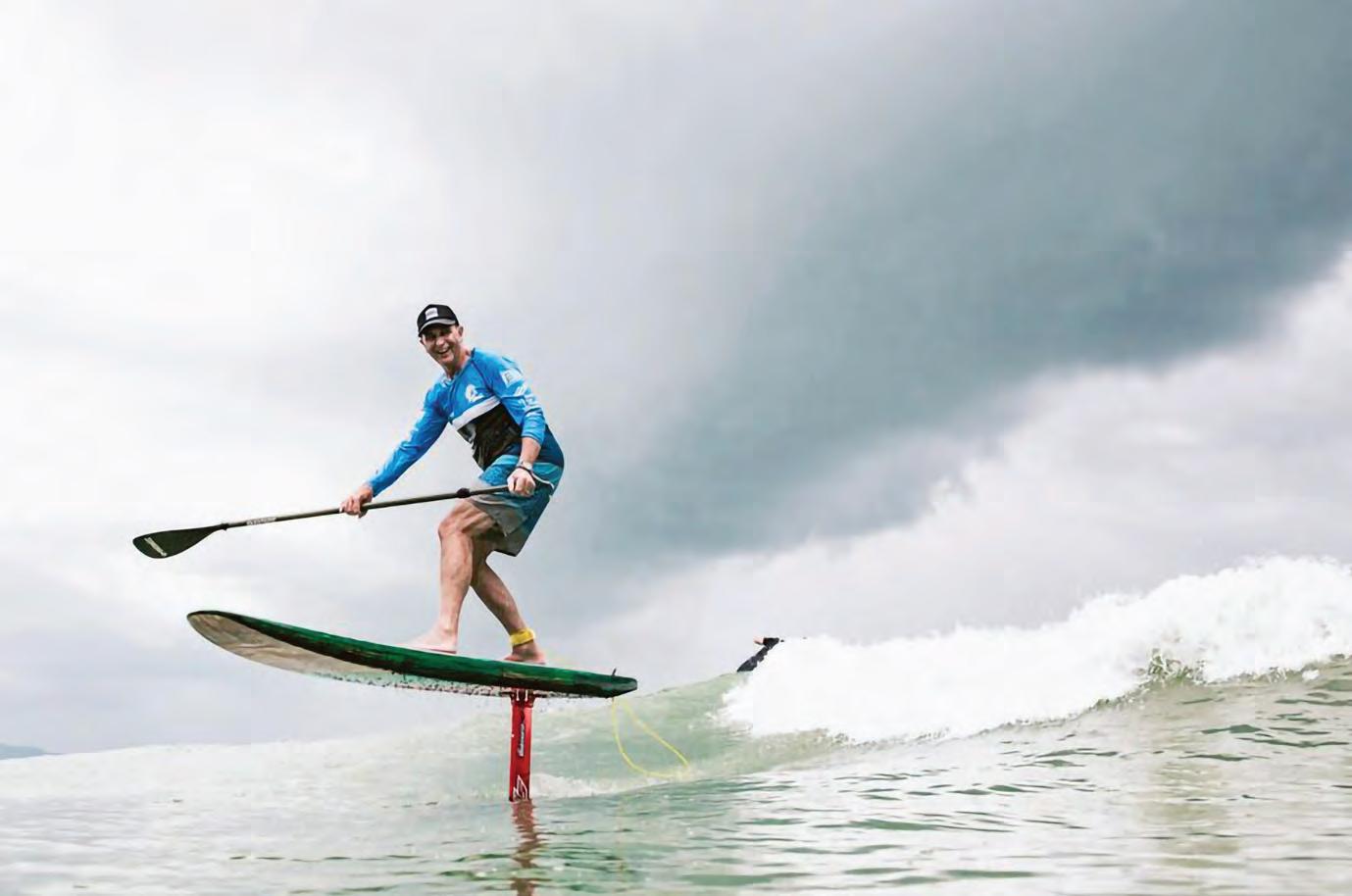

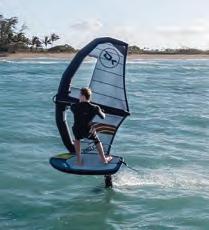


shore-based shark anglers age 16 and older, including those 65 and older who are normally exempt from needing a fishing license.
The permit is also required if you are 16 and older and plan to fish from shore for any species of fish and will be:
•Fishing with a metal leader more than 4 feet long,
• Using a fighting belt/harness, or •Deploying bait by any means other than casting (kayaking for example) while using a hook that is 1 ½ inches or larger at the widest inside distance.
Anglers younger than 16 are not required to obtain the permit but are required to take the online educational course unless they are fishing with someone else who holds a Shore-based Shark Fishing permit.
Recreational anglers fishing for or harvesting sharks in state waters are not required to hold the federal HMS vessel permit. However, if you are fishing from a HMS-permitted vessel, you must comply with the permit requirements when fishing in both state and federal waters.
All HMS Angling or Charter/
Headboat permit holders that wish to recreationally fish for and/ or retain sharks are required to add a Shark Endorsement to their permit. To obtain this endorsement, permit holders need to complete an online shark identification and fishing regulation training course. Additionally, all HMS permit holders are required to use non-offset, non-stainless steel circle hooks when fishing for sharks recreationally south of 41° 43’ N latitude (near Chatham, Massachusetts - the northern extent of the dusky shark’s U.S. Atlantic range), except when fishing with flies or artificial lures.
• The recapture of a tagged shark can provide a wealth of data.
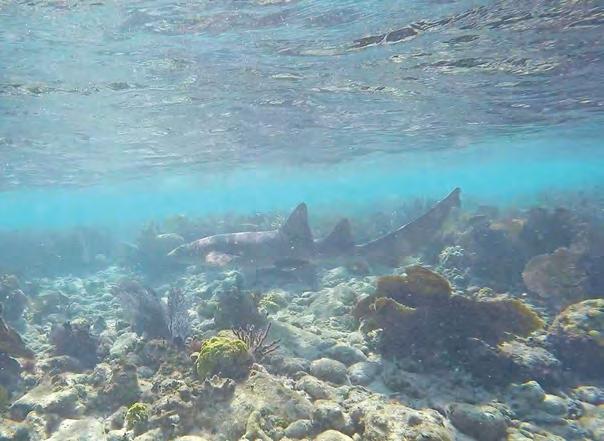
•If it is safe to do so, record the information on the tag and leave it intact and attached to the shark.
•If it is not safe to read the information on the tag, remove it by cutting the monofilament tether at the base of the tag. Do NOT attempt to pull the tag out.










• Report the capture information (date, location, shark type and length, etc.) to the agency listed on the tag.
•Visit the NOAA Apex Predator Program for more information at na.nefsc.noaa. gov/sharks/tagging. html.
Our readers enjoy all of the outdoors and a variety of recreational activities.
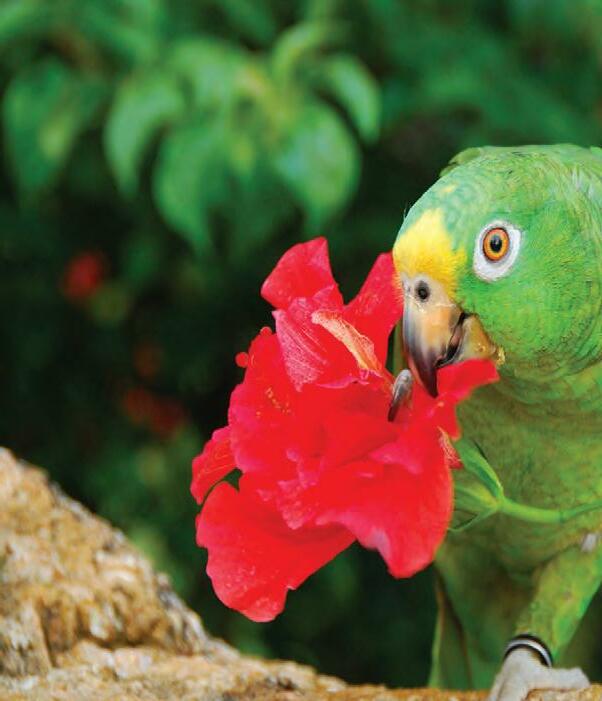
Reach an exclusive demographic: 90% male, 80% home owners, 35% college degree, $82K annual income.
Geo-Target your ad to reach: 10,000+ locally, 190,000+ throughout Florida, or over 400,000 nationally.

A FREE publication means new readers and “fresh eyes” each month that see your ad.
Local editorials from the area’s most experienced fishing guides, charter captains, and writers.
A rate schedule that offers the lowest cost per thousand impressions in the industry.
For the small business a regional or national ad can be a life-changing event.
Your ad will also appear in Coastal Angler Magazine’s E-magazine, marketing your business on the Internet.

in the US and Bahamas with over 400,000 readers each month.
are the largest Free outdoor
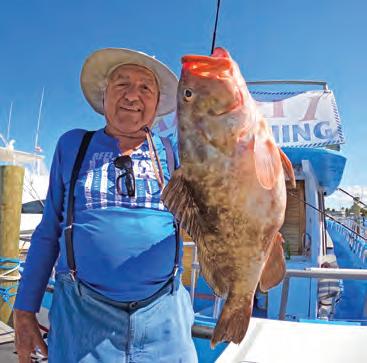
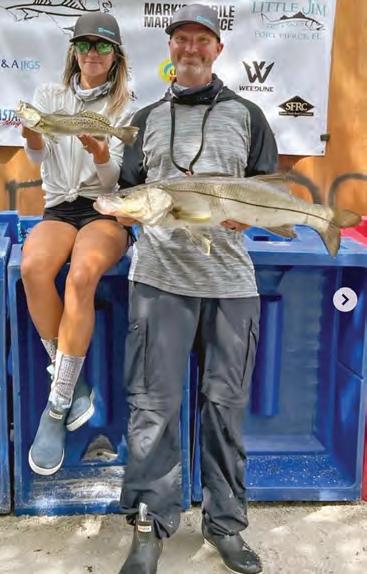
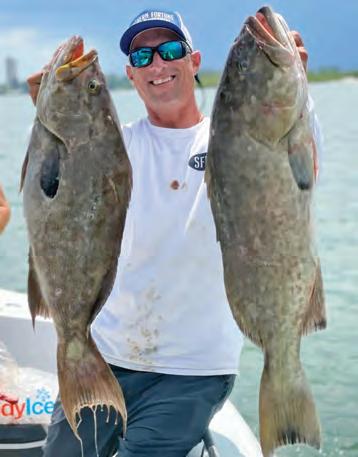
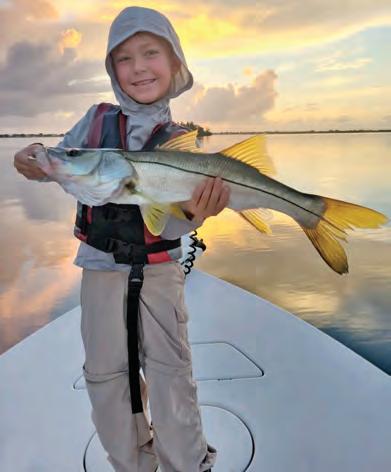

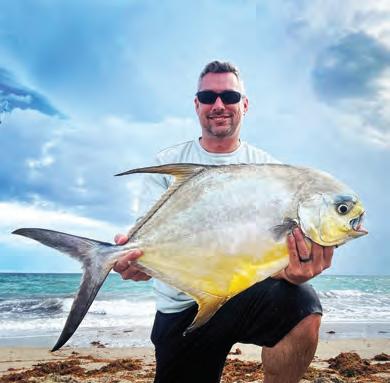



Let us help you get the perfect machine for your “ME” time.
Designed to work smarter than the competition, the 1 Series Compact Tractors maximize your yard without breaking the bank. From the comfort of your seat, you’ll appreciate big performance and convenient sizes.

e a ordable 1023E is easy to use and provides plenty of muscle for jobs around the yard.
From mowing and loading to tilling and digging, these compact tractors are built to make a long day of chores feel simple. When you turn the key of a John Deere 1 Series, you’ll quickly see why these tractors are the one.


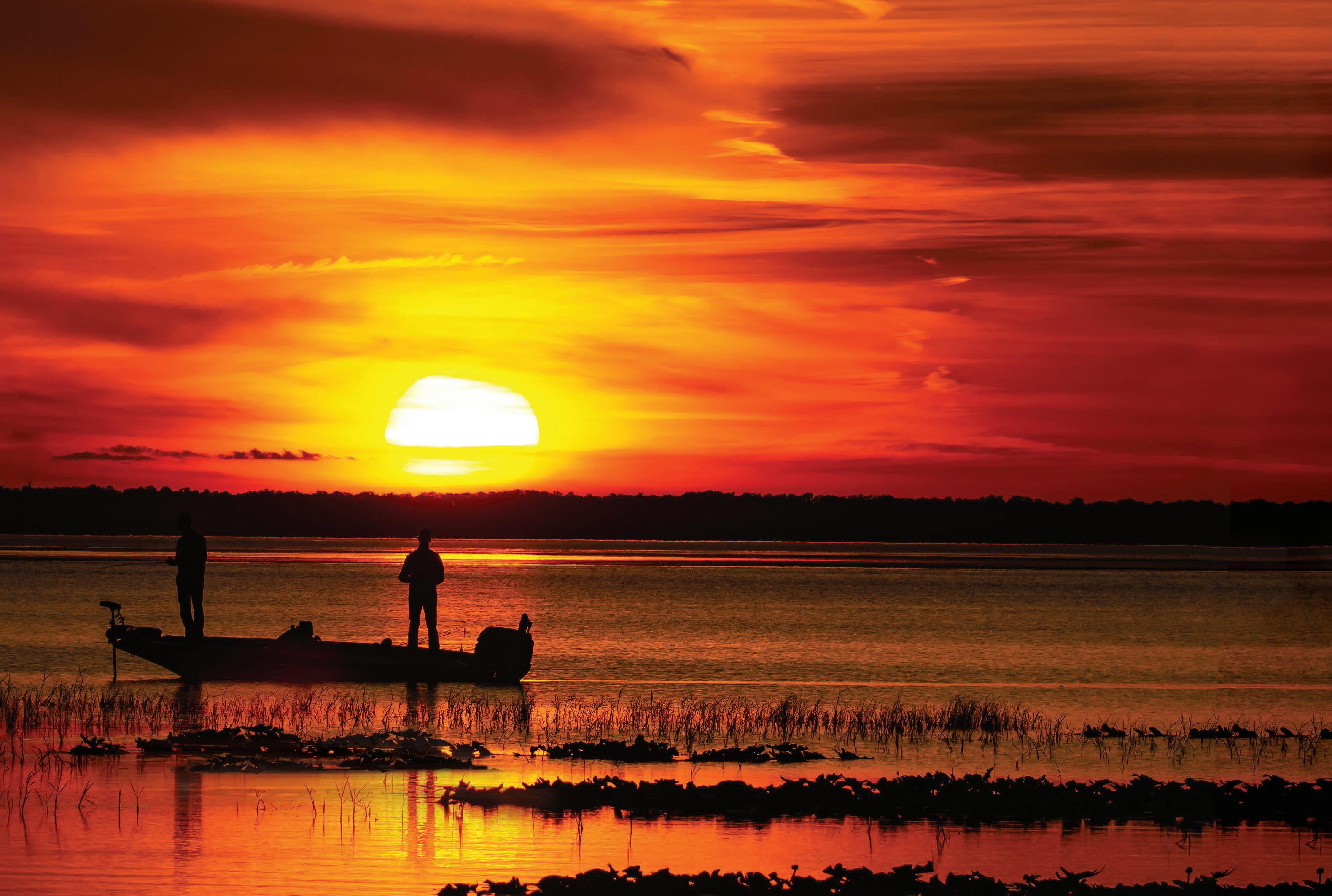




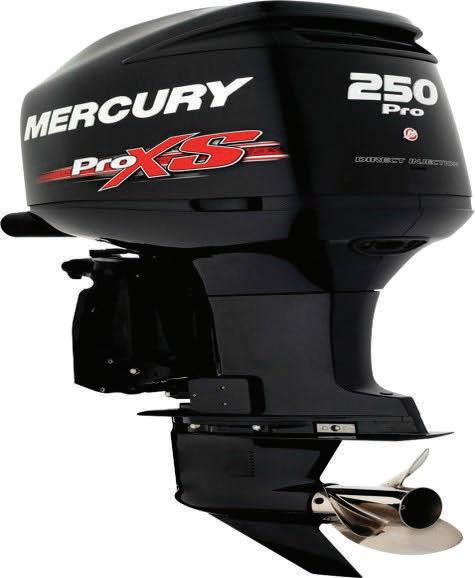
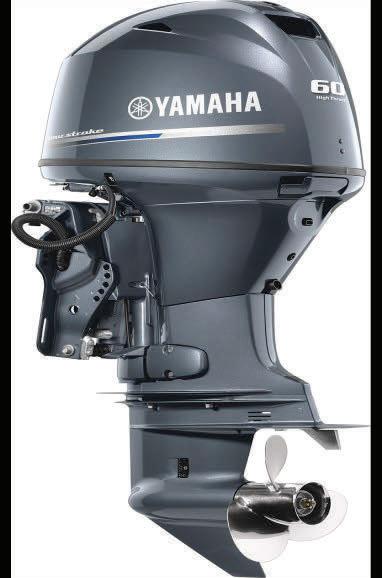

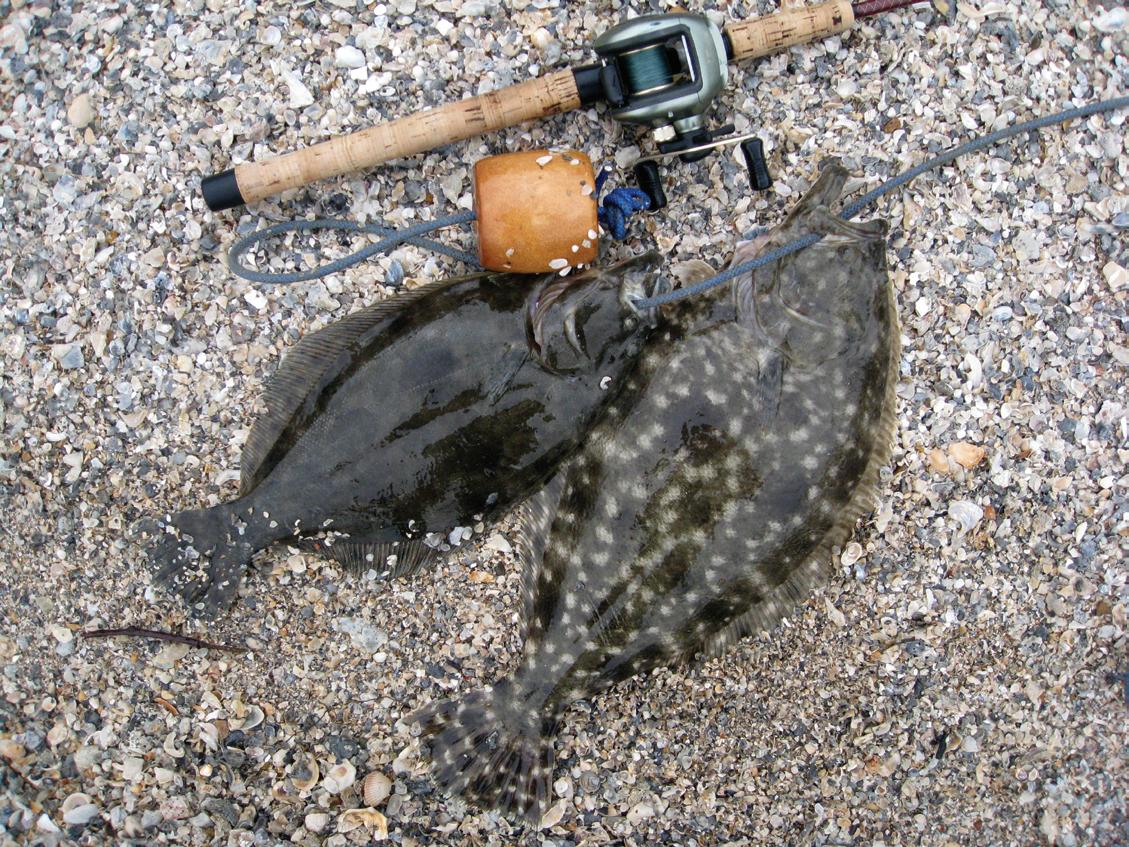 By Capt. Michael Okruhlik
By Capt. Michael Okruhlik


time… ounder time! e fall migration typically reaches its peak in November along the Gulf Coast and more ounder are sure to reach their spawning grounds in this Gulf this year. Louisiana has joined Texas and Florida with their closed season during the peak of the run. However, the fact that you can’t keep any atties during this time doesn’t mean you can’t catch them.
Flounder will be migrating into the Gulf, so the obvious ambush areas will be around passes that lead to open water. e ounder will position themselves in di erent areas based on the tide level and current strength. In addition to using their burying-in-the-sand ambush technique, they also like to utilize structure in a couple of ways.
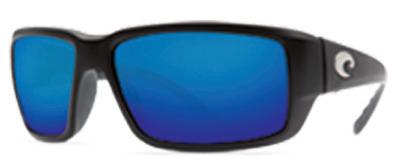
First, any object that protrudes above the bottom is a great ambush point. is o ers a current break for forage sh to gather directly above a buried ounder, which makes for an easy meal. Objects such as bulkheads are also great ambush points. Flounder like to position themselves against the solid barrier. I think this can be for two separate reasons depending on what other factors are at play. As mentioned above, it could be a current break, especially if the bulkhead has a corrugated shape. When a ounder settles against a bulkhead, its prey has fewer directions to ee, allowing the ounder greater odds of capturing it. When targeting ounder, never pass up a bulkhead.
Second, ounder can be caught on a variety of lures and live bait if you keep it in contact with the bottom to increase your odds for a strike. On the live-bait options, a frisky mullet will produce larger ounder, so if you want to increase your opportunity of landing a trophy, this is the way to go. I prefer to sh with lures and lean heavily on the paddletail style. Twitching these hard along the bottom sends a pulsating sound and vibration that really grabs their attention. Jerk-style so plastics and bucktails can also be e ective worked in the same manner.

If I had to pick a tide to maximize time on the water, I would choose a medium- ow outgoing. Although there are no set rules that sh always follow, ounder feed more on their way out to the Gulf and utilize the current to ease their journey. During the incoming tide, they bury themselves rather than ght the current.
Don’t let the closed season discourage you from targeting ounder during this migration. It will have its advantages. Going forward, we will undoubtedly have a larger ounder population, but the instant grati cation will be a lot less tra c in our favorite ounder spot! I will use the closed season to target a new personal best this season, and so should you.
Okruhlik is the inventor of Knockin Tail Lures®, Controlled Descent Lures™, and the owner of www.MyCoastOutdoors.com.

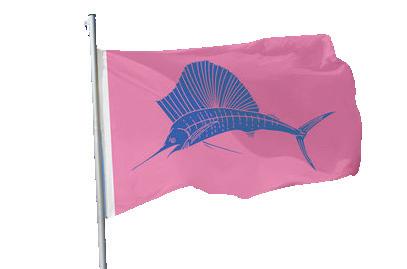



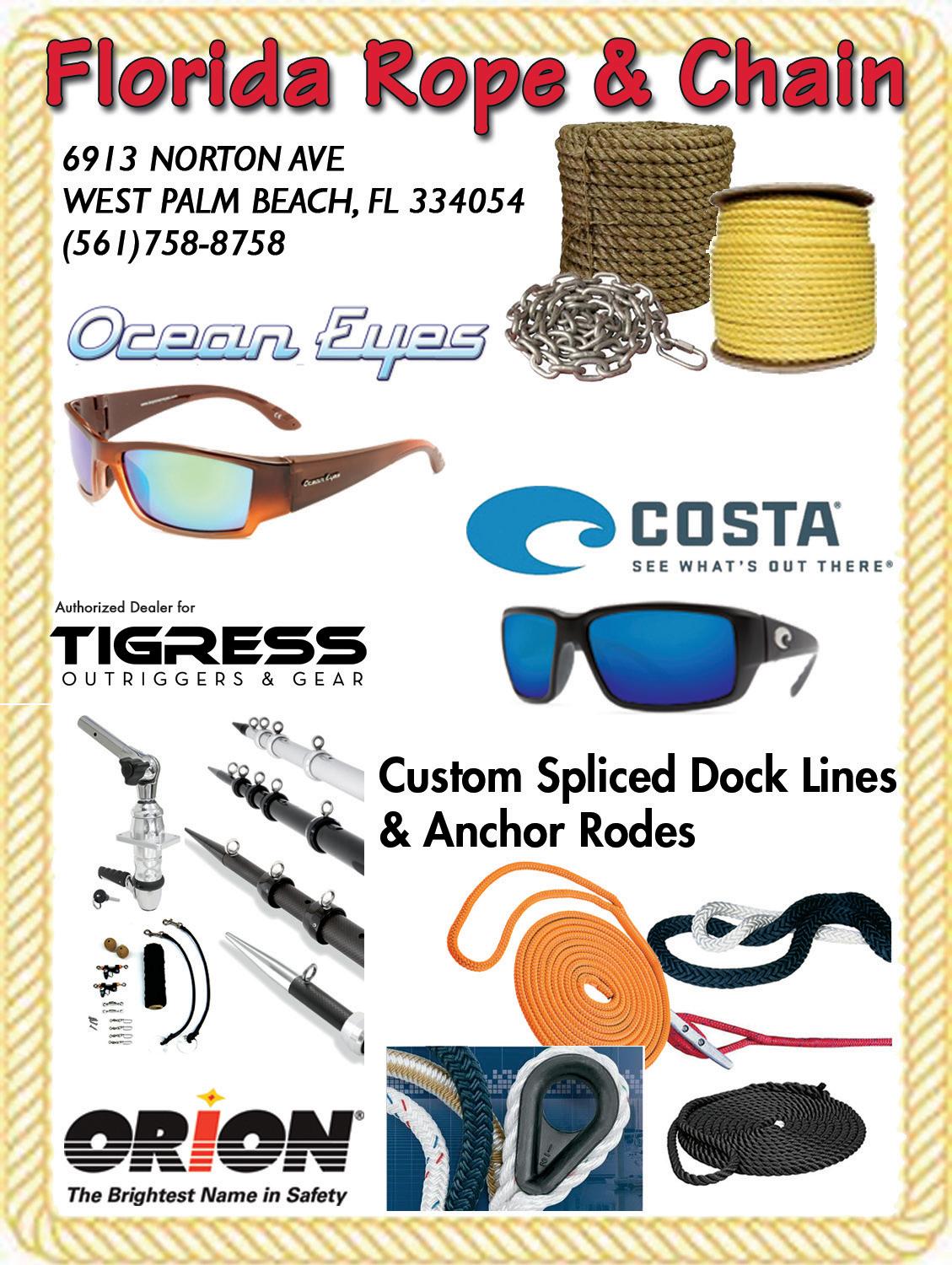
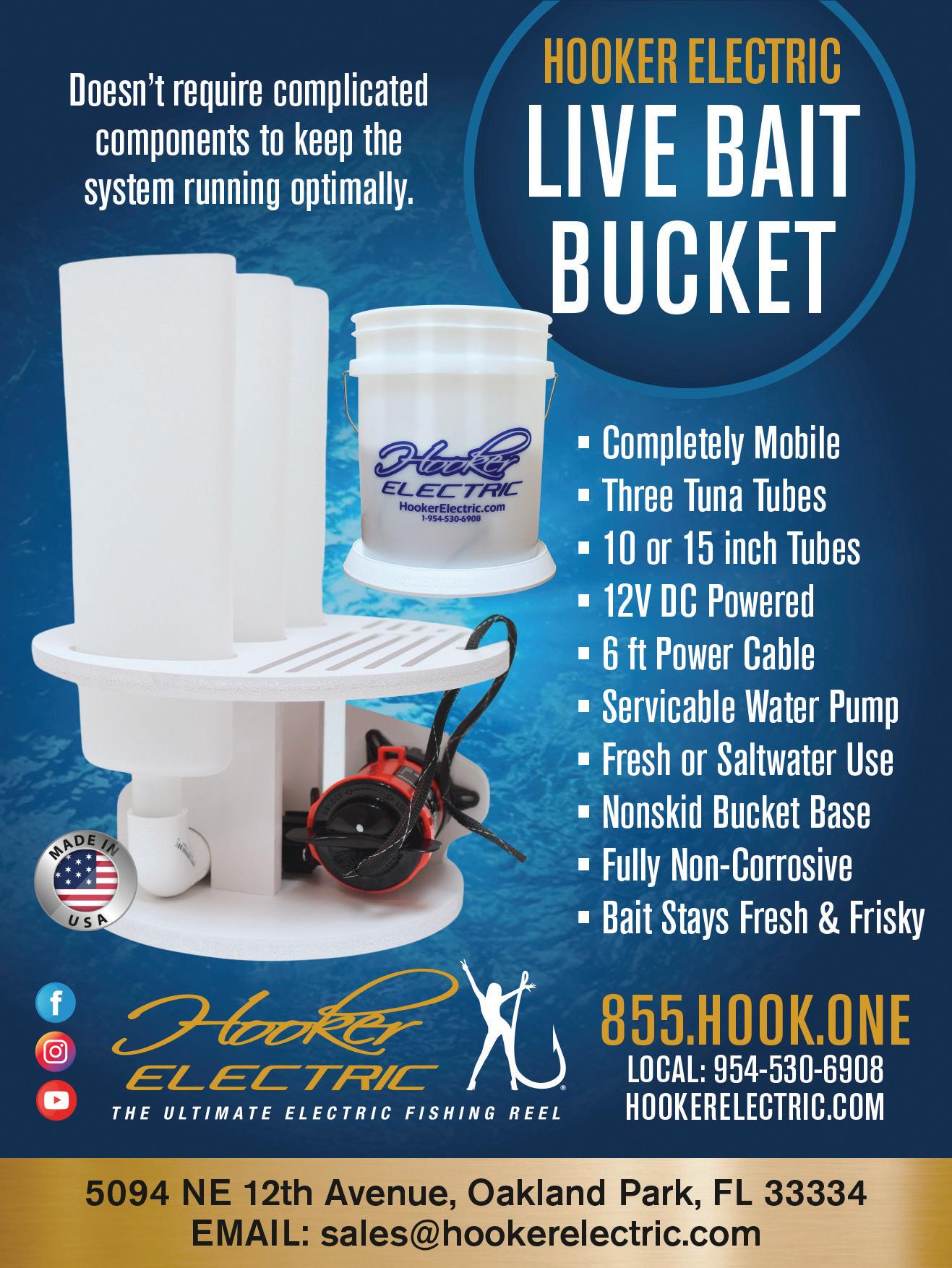
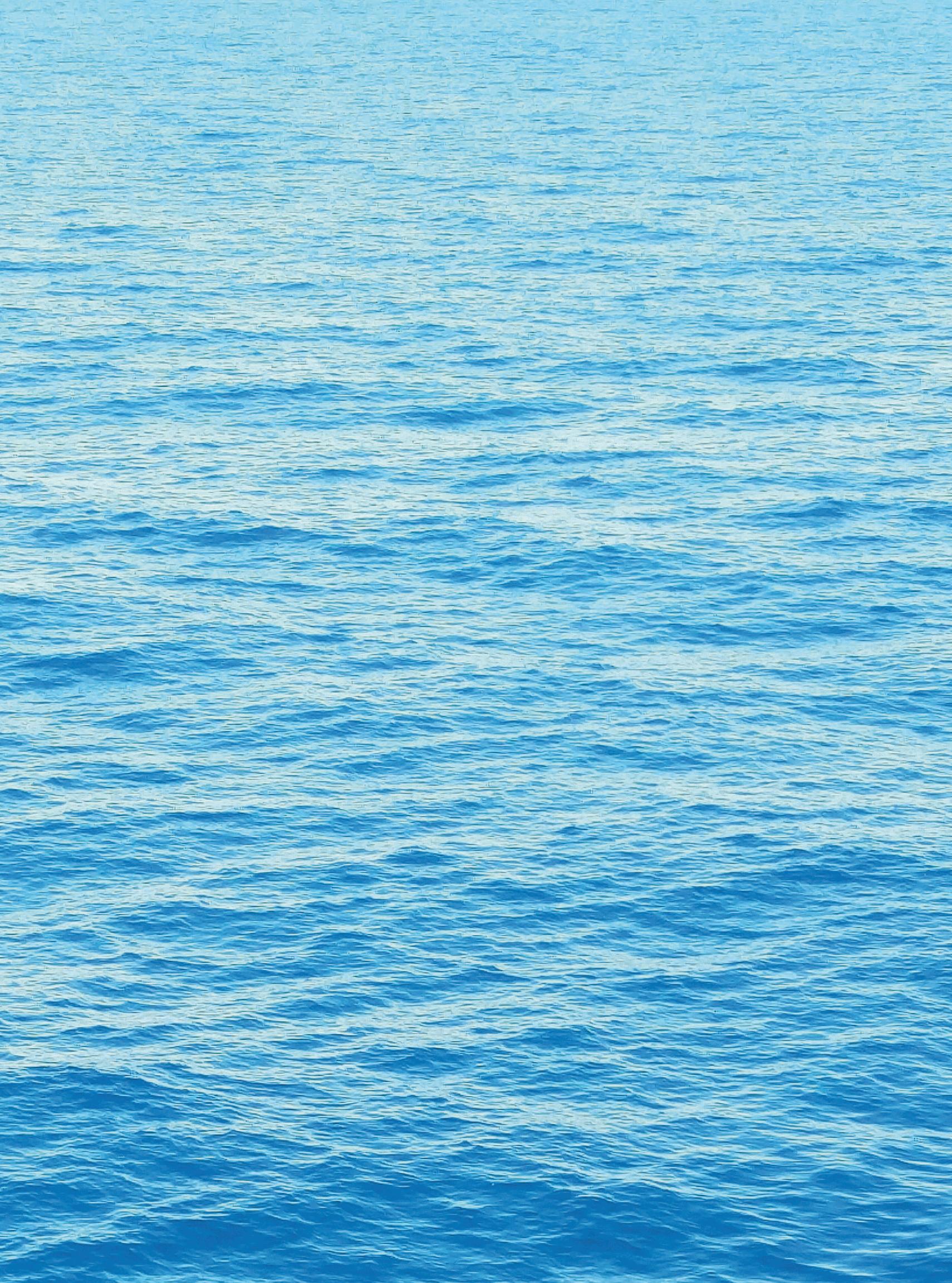


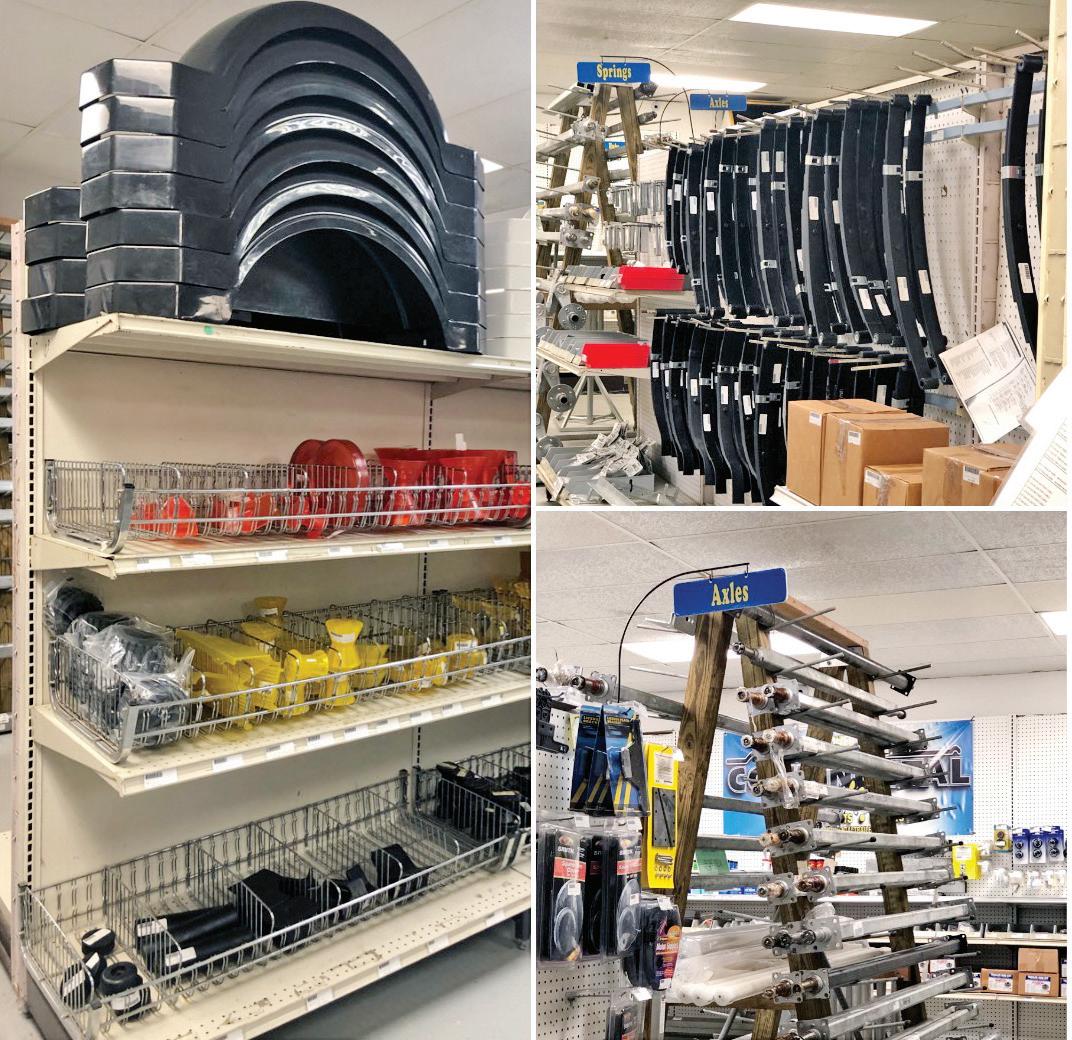
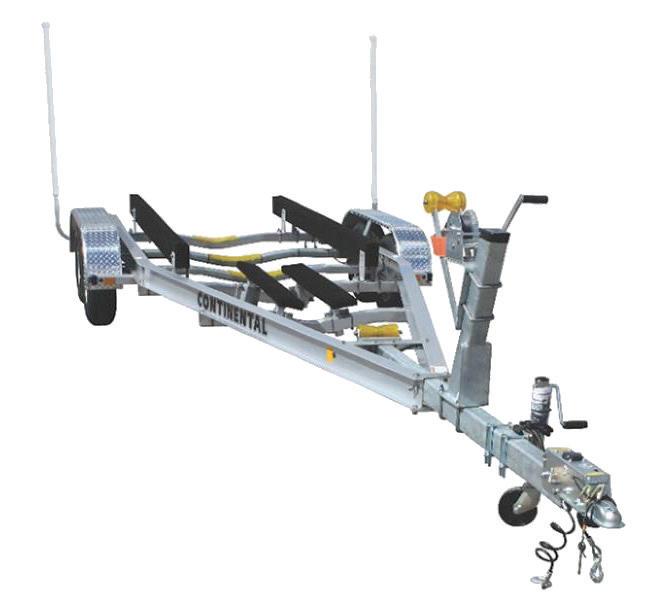











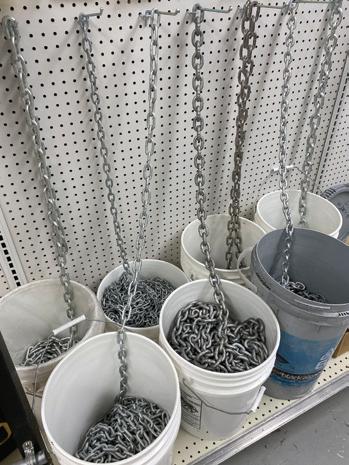
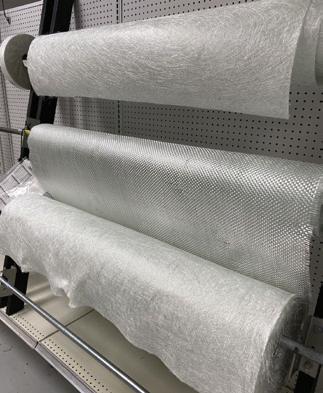
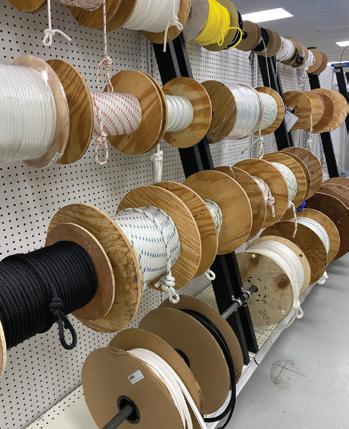
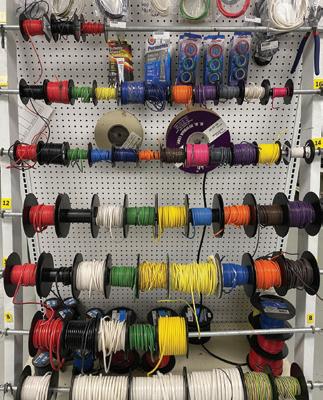
Winter in south Florida brings an awesome collision of ballyhoo and sail sh that makes for some of the best shing of the year. It’s also the time of year for some of the richest and most fun tournaments. If you’re interested, right now is the time to register. Here’s a list of some good events:
Nov. 30 – Dec. 4, 2022 Dust ’Em O Sail sh Warmup
Fort Lauderdale • www.dustemo sail sh.com
December 1-4, 2022 Pirate’s Cove Sail sh Classic
Pirate’s Cove Resort & Marina, Port Salerno www.piratescovesail shclassic.com
Dec. 2-4, 2022 Islamorada Sail sh Tournament
1st Event of the Florida Keys Gold Cup Sail sh Championship Whale Harbor, Islamorada www.islamoradasail shtournament.com
Dec. 7-10, 2022 Stuart Light Tackle Sail sh Tournament Stuart • stuartsail shclub.com
Dec. 16-18, 2022 Islamorada Junior Sail sh Tournament Islamorada • shnbully@msn.com
Jan. 5-7, 2023 86th Annual Silver Sail sh Derby Sail sh Marina, Singer Island westpalmbeach shingclub.org
Jan. 6-7, 2023 Fish for Holly Sail sh Tournament Islamorada • shforholly.com
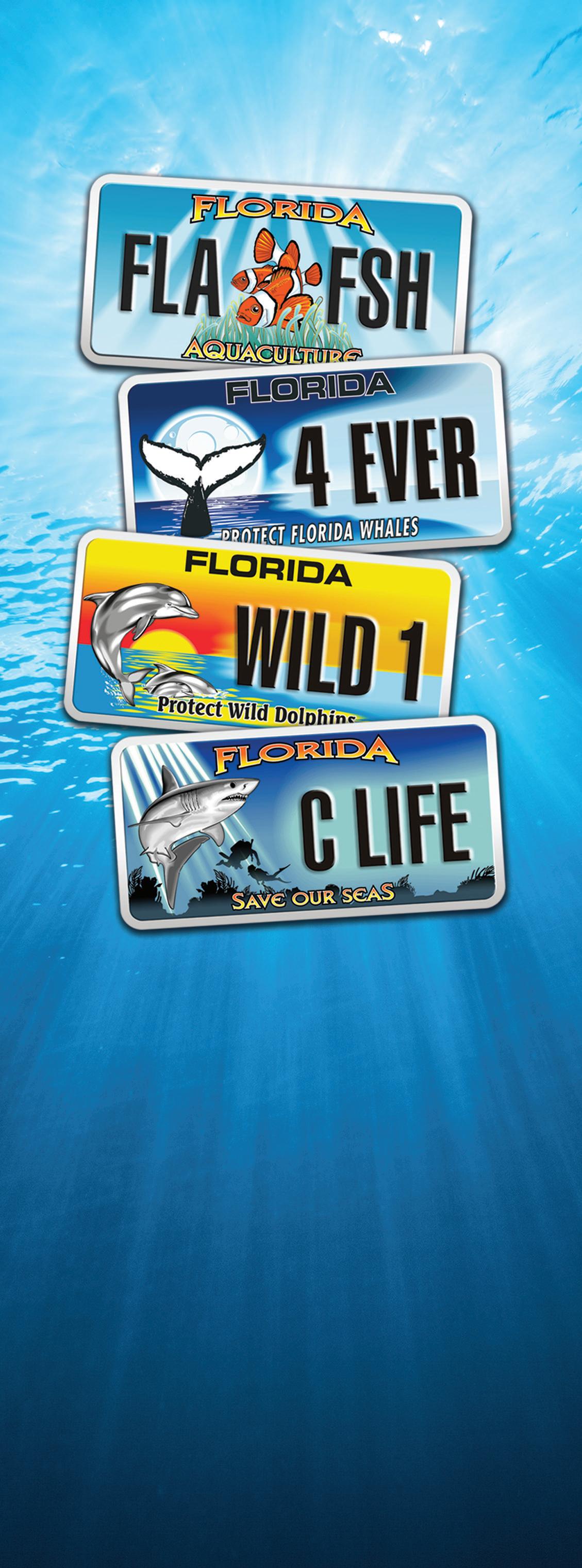
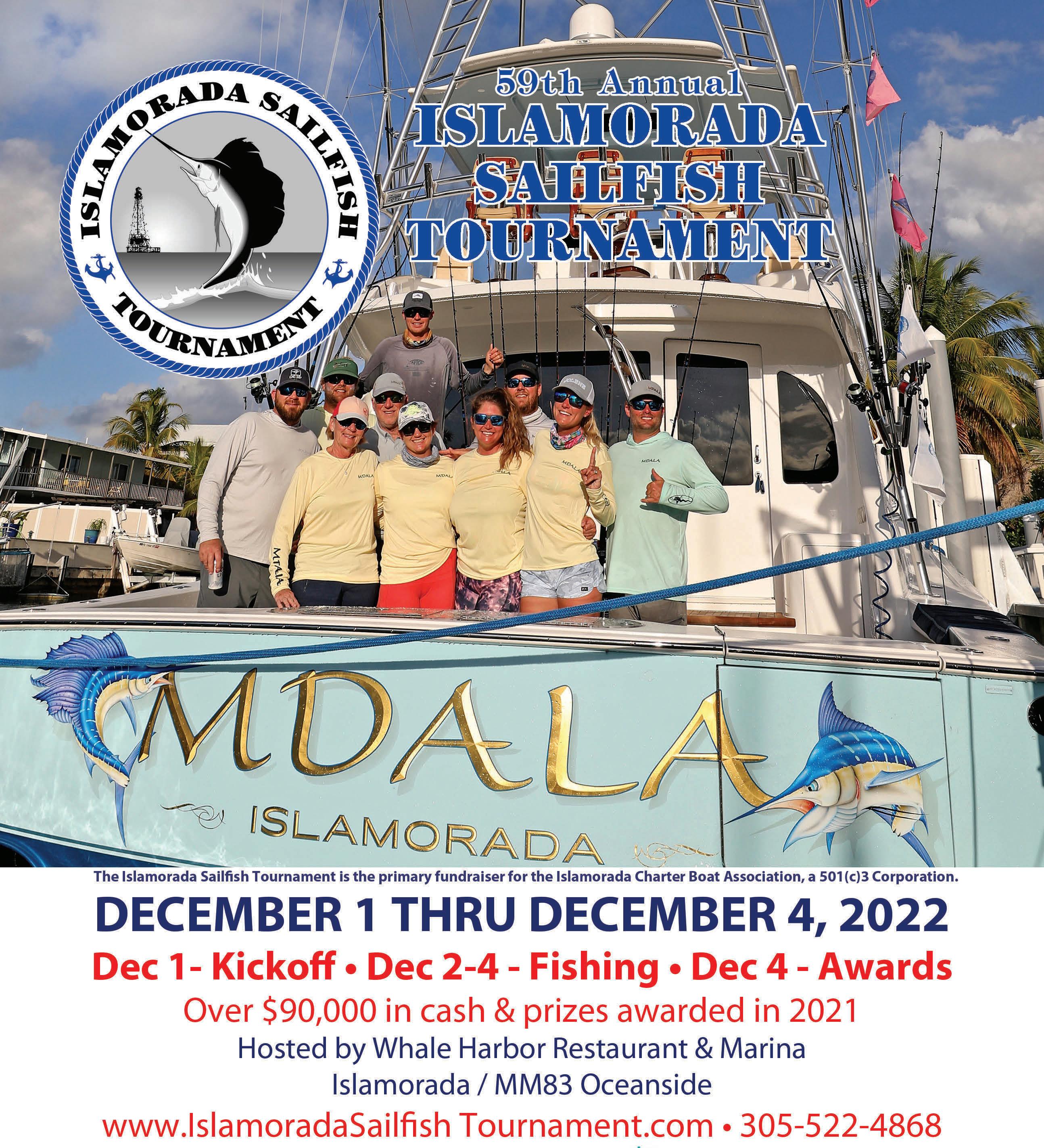
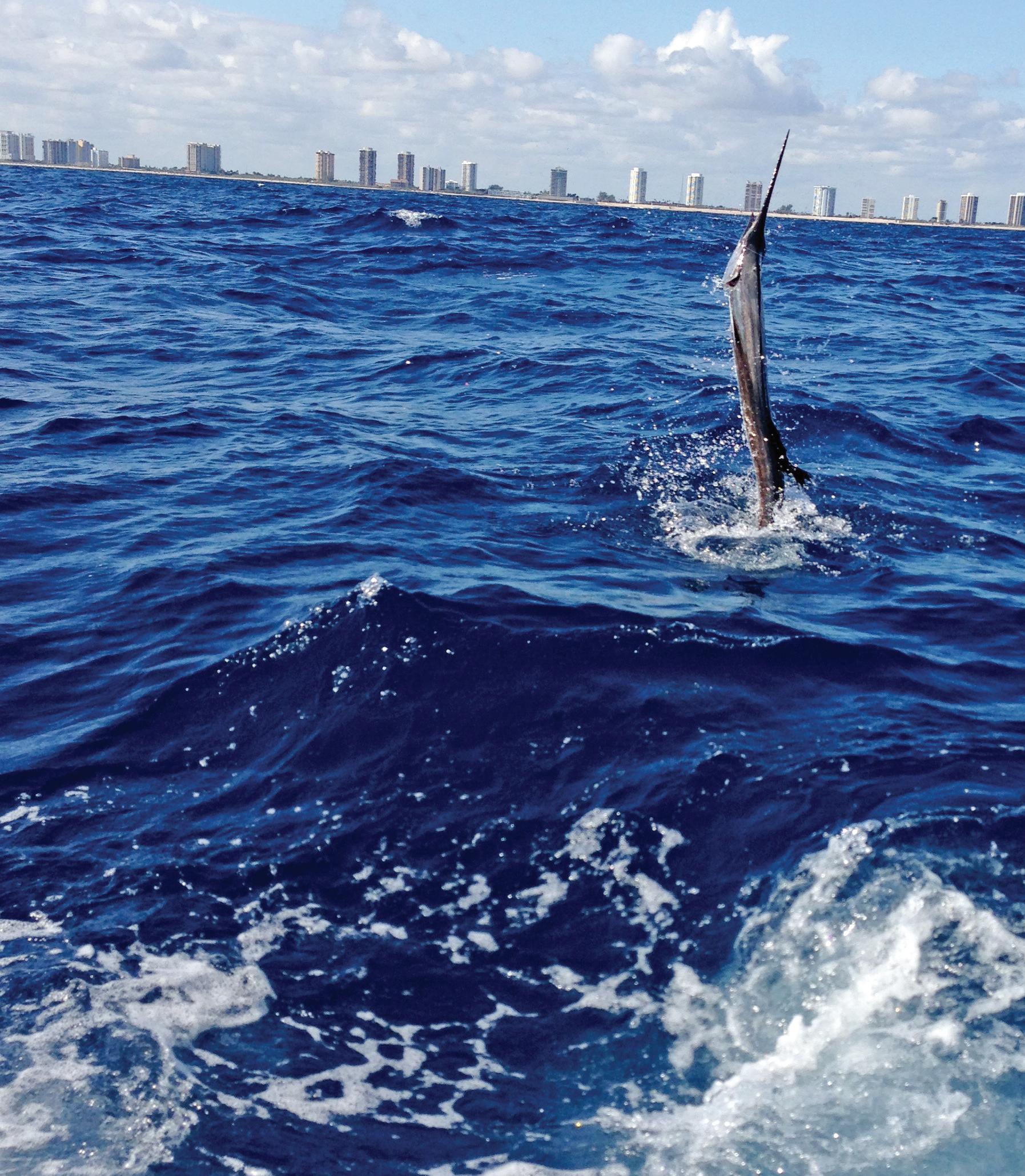
Jan. 11-15, 2023 Operation Sail sh
Leg One of the Quest for the Crest Sail sh Series Sail sh Resort & Marina, Palm Beach www.bluewatermovements.com
Jan. 17-21 Buccaneer Cup Sail sh Release Tournament
Buccaneer Marina Resort, Riviera Beach buccaneercup.com
Jan. 18, 2023 Cheeca Lodge Presidential Sail sh Tournament
2nd Event of the Florida Keys Gold Cup Sail sh Championship Cheeca Lodge, Islamorada www.islamoradasail shtournament.com
Jan. 21-22, 2023
Islamorada Fishing Club Sail sh Tournament
3rd Event of the Florida Keys Gold Cup Sail sh Championship Whale Harbor, Islamorada www.islamoradasail shtournament.com
February 22-26, 2023 Sail sh Challenge
Leg Two of the Quest for the Crest Sail sh Series
Three checkpoints: Miami, Pompano Beach, West Palm www.bluewatermovements.com
April 12-15, 2023 Final Sail
Leg Three of the Quest for the Crest Sail sh Series Miami Beach • www.bluewatermovements.com


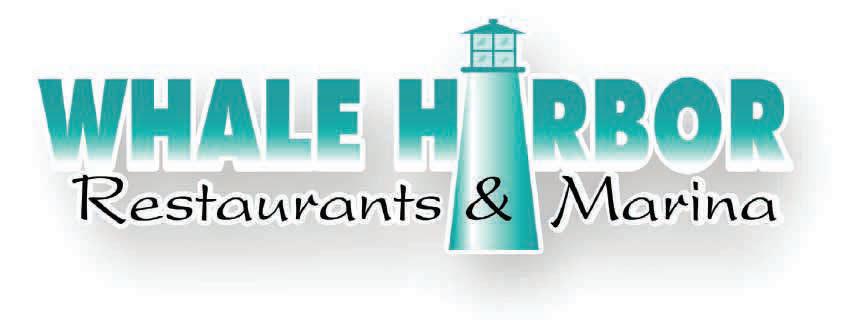
Florida region you’re shing.
By Emily Rose Hanzlikduring the colder months, where they gather together. Due to them being more condensed during the colder months, it makes them easier to catch.
While smaller seatrout school up and are most e ectively caught with live bait, larger individuals are more solitary. Mature individuals and breeding females longer than 20 or even 25 inches might pair up with another large sh, but they are rarely found schooling.
As the colder months arrive in Florida, the spotted seatrout bite will begin to pick up. ese gorgeously speckled sh are a nearly year-round target for anglers in Florida, and their meat is so and aky with a mild avor.
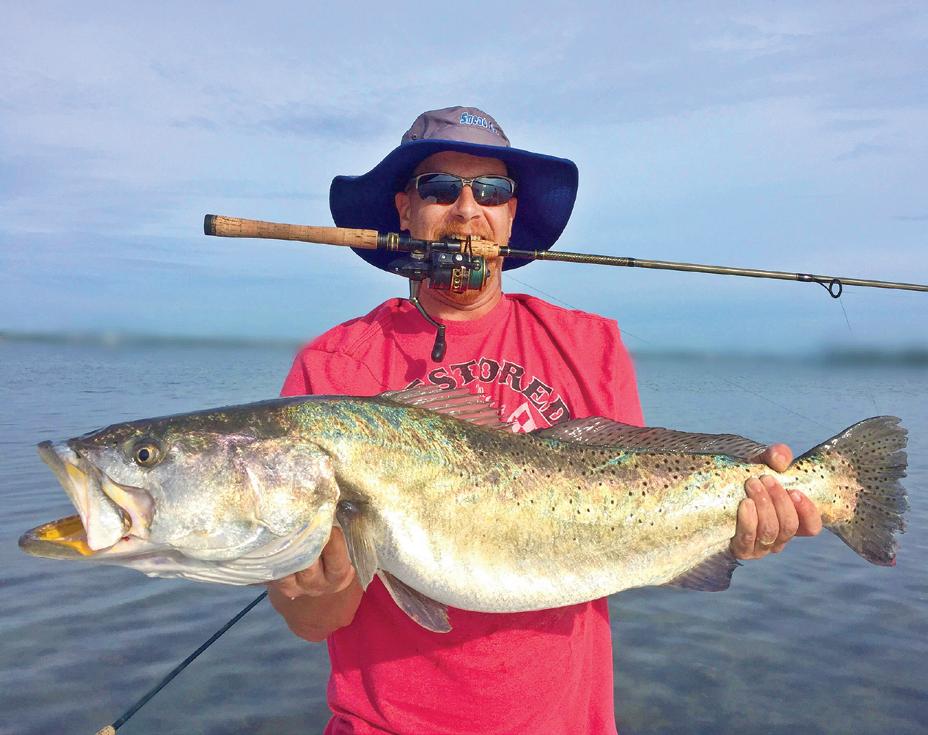
Seatrout typically lurk in shallow murky waters of estuaries. Usually, these areas consist of seagrass and oyster beds that are hot spots for juvenile prey. While being able to hunt on smaller prey like shrimp, crabs, and bait sh, trout also are able to escape larger predators like sharks, big snook and jacks. Most trout move into deeper bay waters
Seatrout in Florida are having a hard time. eir numbers have dwindled on the east and west coasts because of red tides, the disappearance of sea grass and other factors. ey were once a great option for lling coolers for a sh fry, but limits have been tightened to protect overall populations as well as breeding-sized females. ere is a slot limit in Florida, which allows anglers to keep only sh measuring 15 to 19 inches. ere is an allowance for one sh longer than 19 inches per vessel, per day—or one sh longer than 19 inches per person, if shing from shore. e bag limit ranges from two per person to ve per person, depending on which
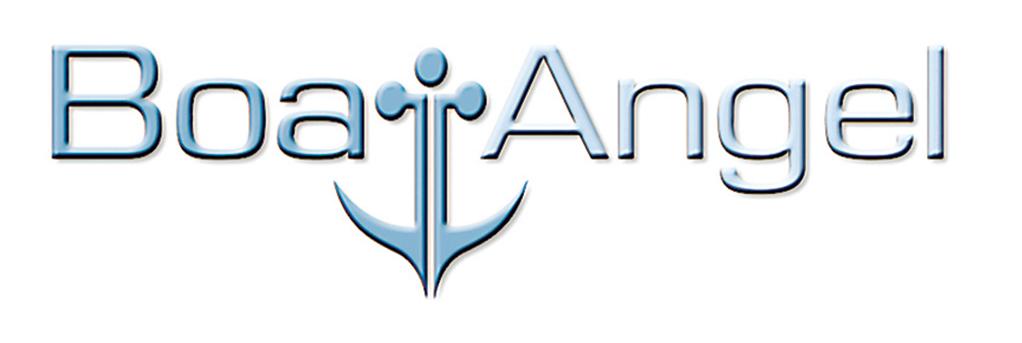

ere are many ways to catch trout. e most e ective way to catch numbers is to nd a school and sh live shrimp under a cork cork. Live bait such as pilchards, mojarras, pin sh and nger mullet used with a oat also work well. If you’re an arti cial-lure person, you can have a blast casting topwater plugs. Using this method allows you to cover a lot more area in search of larger sh.
If you’re targeting huge gator trout, use live baits in the 6- to 10-inch range. Gator trout have a ferocious appetite and would much rather grab one large meal than chase around a bunch of small ones. Silver mullet, as well as pin sh, snappers and grunts in that size range work best. You’ll want to target structure, as larger trout are ambush predators. Spoil islands, docks, oyster bars and rock jetties are prime places to nd a gator trout like the IGFA all-tackle world record, which weighed 17 pounds, 7 ounces and was caught out of Ft. Pierce, Fla.
Emily Rose Hanzlik holds 56 IGFA world records in various categories. She hails from West Palm Beach, where she has a part time Bow n Guide Service as well as shing classes for Jr. Anglers. Find her on Social Media @emilyhanzlikoutdoors.
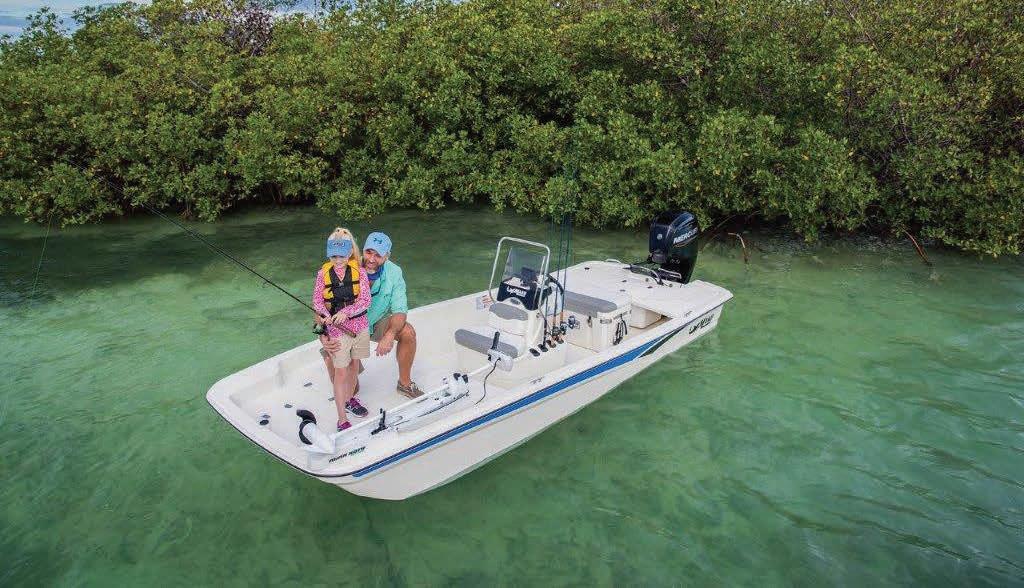
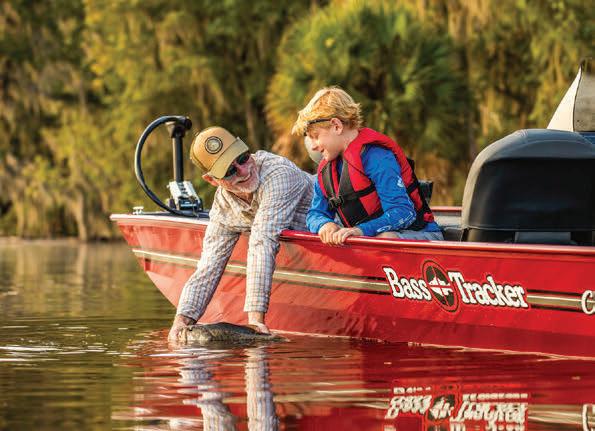









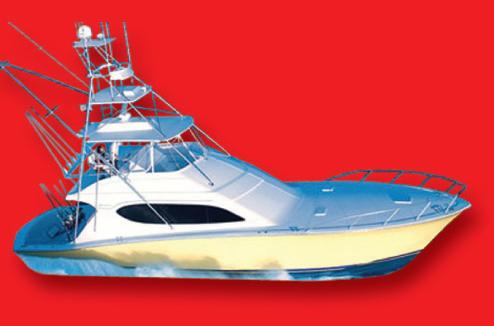





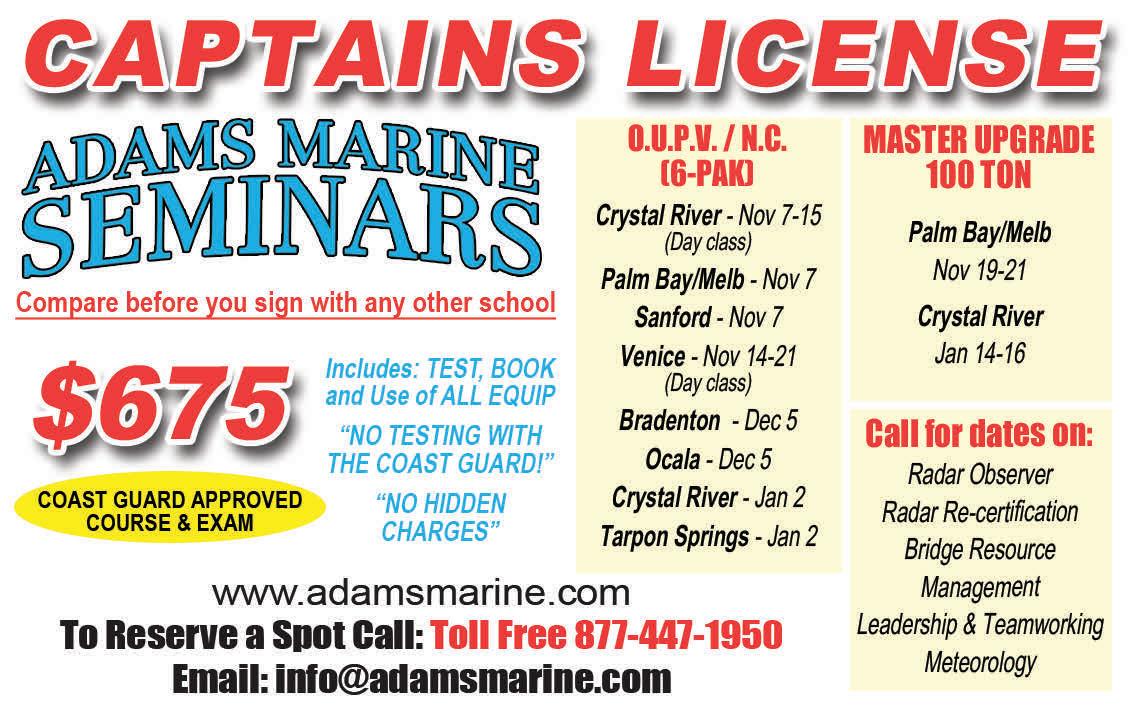
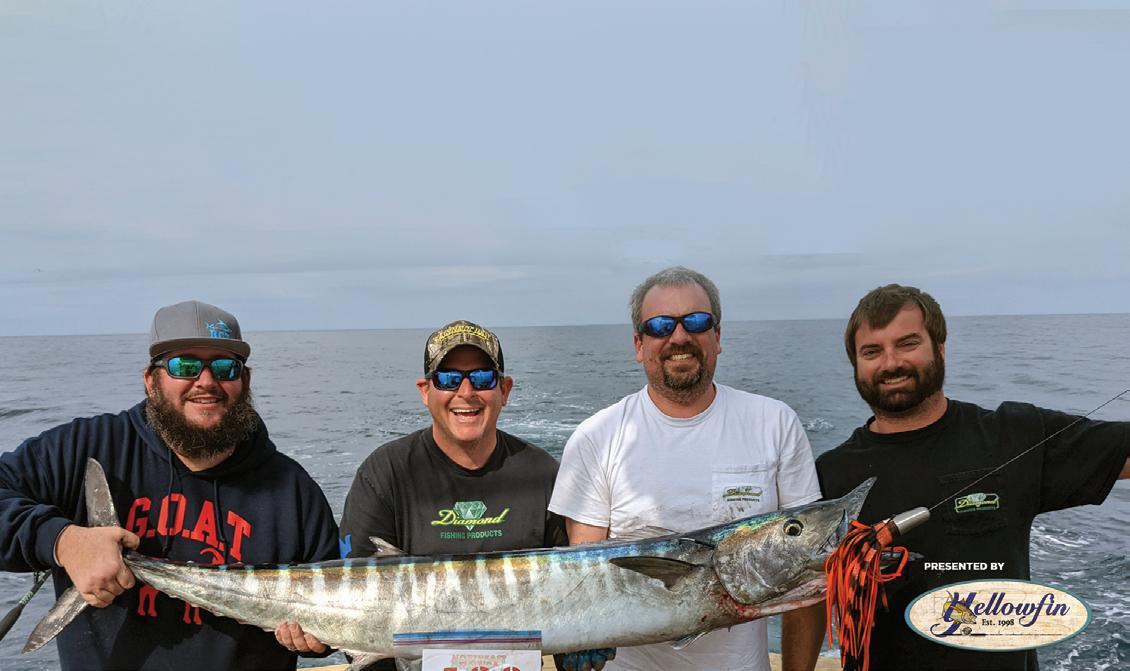

as “the world’s largest wahoo tournament,” the Northeast Florida Wahoo Shootout Presented by Yellow n will run from February 4-March 26, 2023 and allows anglers to select three days to sh within this 50-day window.
It’s a very cool format, because all wahoo anglers know just how ckle the bite can be when it comes to timing the moon phases and weather systems. Captains are required to notify tournament o cials the night before they plan to sh, and the heaviest three- sh aggregate wins the tournament. Each boat will be allowed to weigh two wahoo per declared shing day. If more than three sh are weighed for a boat through the course of the tournament, the lower weights are dropped. All eligible sh must be weighed at Strike Zone Fishing in Jacksonville or Melbourne.
e rst-place prize is a 21’ Yellow n Bay Boat with a 200 HP Yamaha 4-stroke and an AmeraTrail Trailer, all valued at $95,000. Second place wins a Kubota RTV valued at $16,000. e tournament pays cash through 10th place.
Registration for the Northeast Florida Wahoo Shootout is open now through Feb. 3. Early entry is $550 through Dec. 31. General entry is $600 through Jan. 26. Late entry is $750 until registration closes.
For more information, go to www.wahooshootout.com.
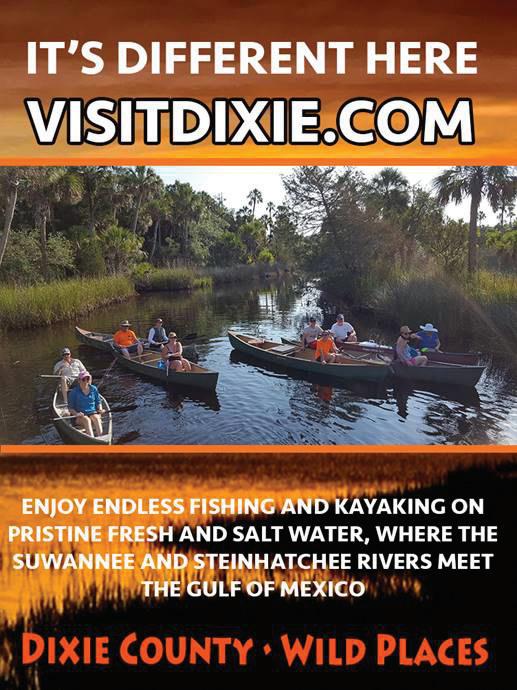




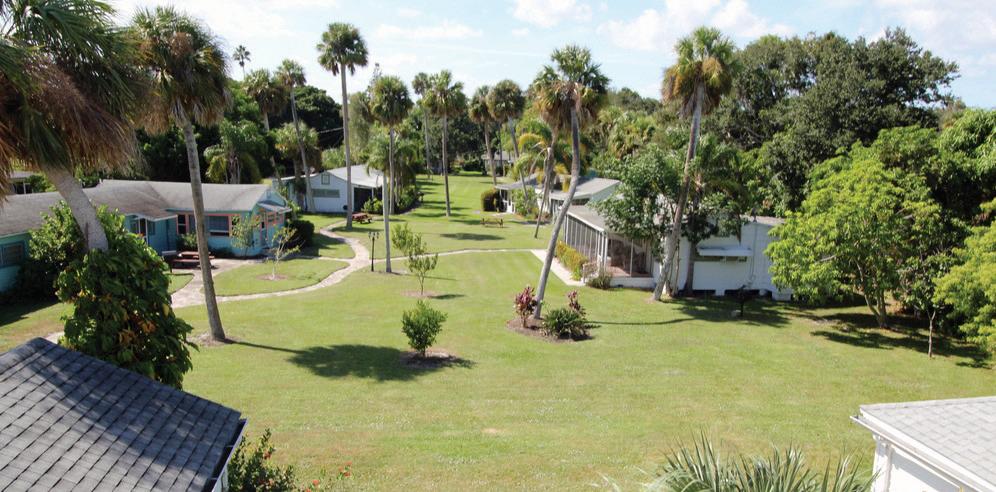
specializes in restoring many types of LCD displays, not just lens polishing! Many devices can be restored by replacing the internal polarized lm on the LCD, which degrades over time causing dark spots or fading. Electrically, devices may still be in perfect usable condition but the display is just unreadable.

Some devices cannot be restored/repaired, but we have remanufactured/ redesigned parts for several di erent devices such as Yamaha, Mercury and Suzuki. New LCDs, new lenses and button sets are now available for select models.

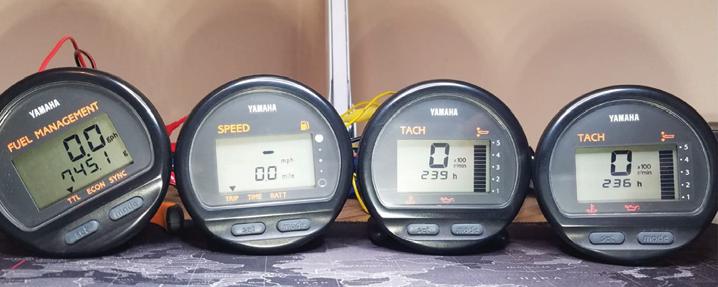
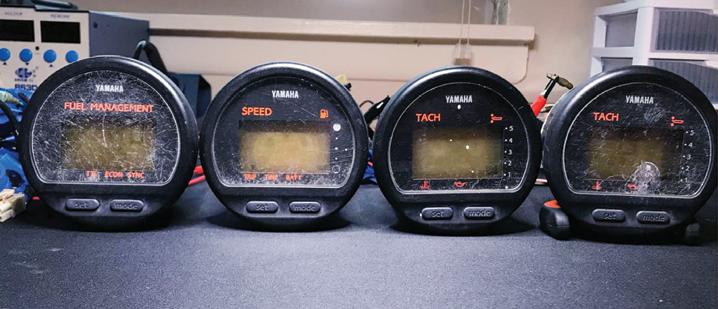


We provide lowcost alternatives to replacement as well as acrylic polishing, water spot and anti-glare removal, etc. No need to lose your engine hours, or those secret saved shing spots on the plotter!
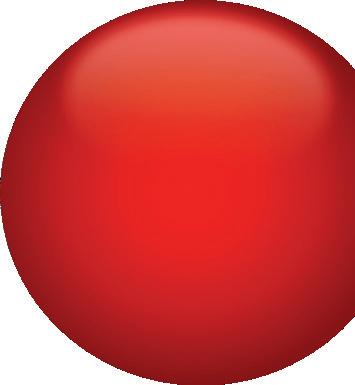

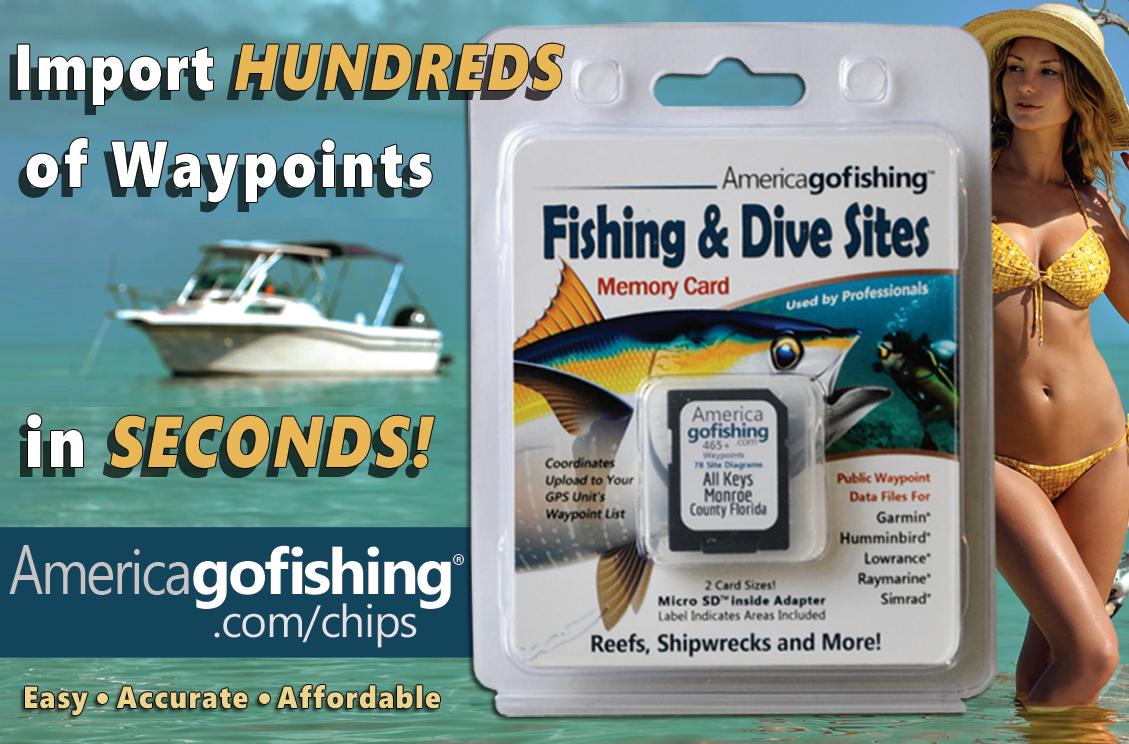
to see if we can help! (For our local customers, we are now installing electronics, lighting and more. Contact us for more details. All technicians are NEMA Certi ed.)

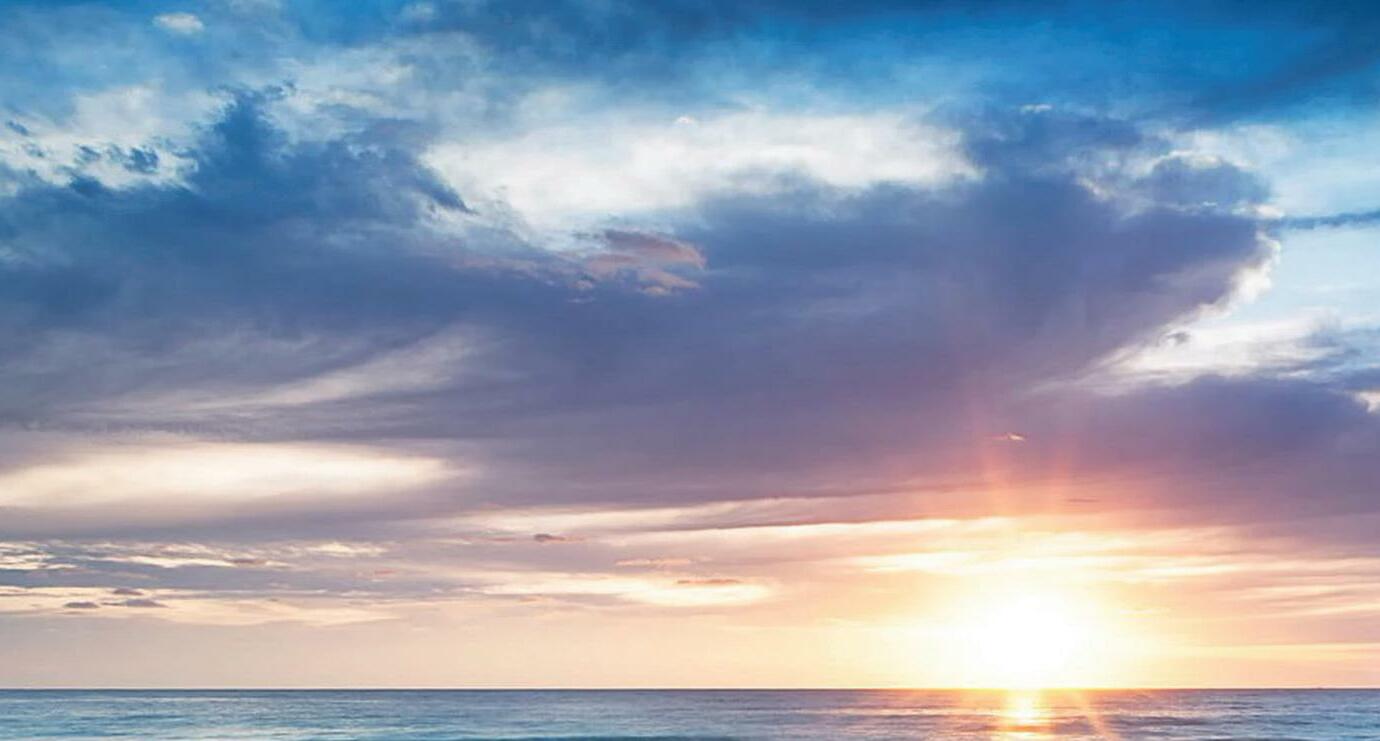
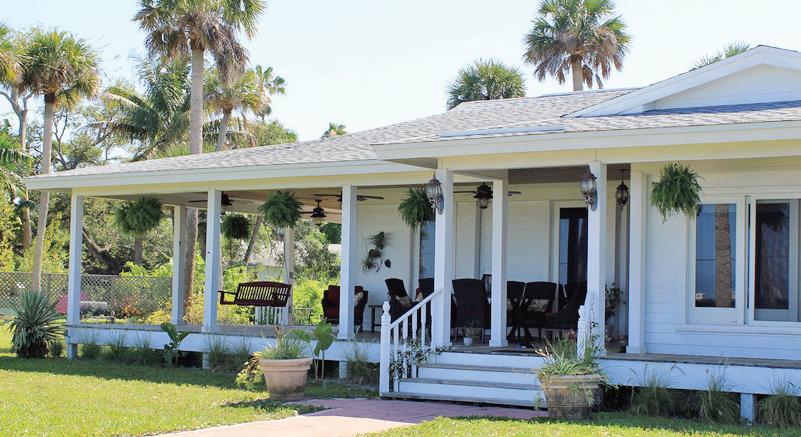

Before you replace your old electronics, visit

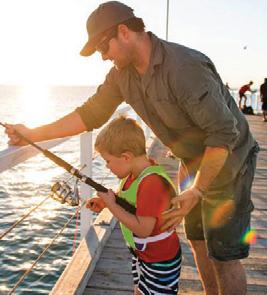

Like fishing, hunting is for early risers — those who find contentment and peace in getting out into nature early. But that’s not all you’ll find in wild Florida. From the Panhandle to the Everglades, we have some of the most accessible and affordable public hunting lands in the country. Six million bountiful and beautiful acres are closer than you think. So if you’re already an early riser, rise to the exciting challenge of hunting today.
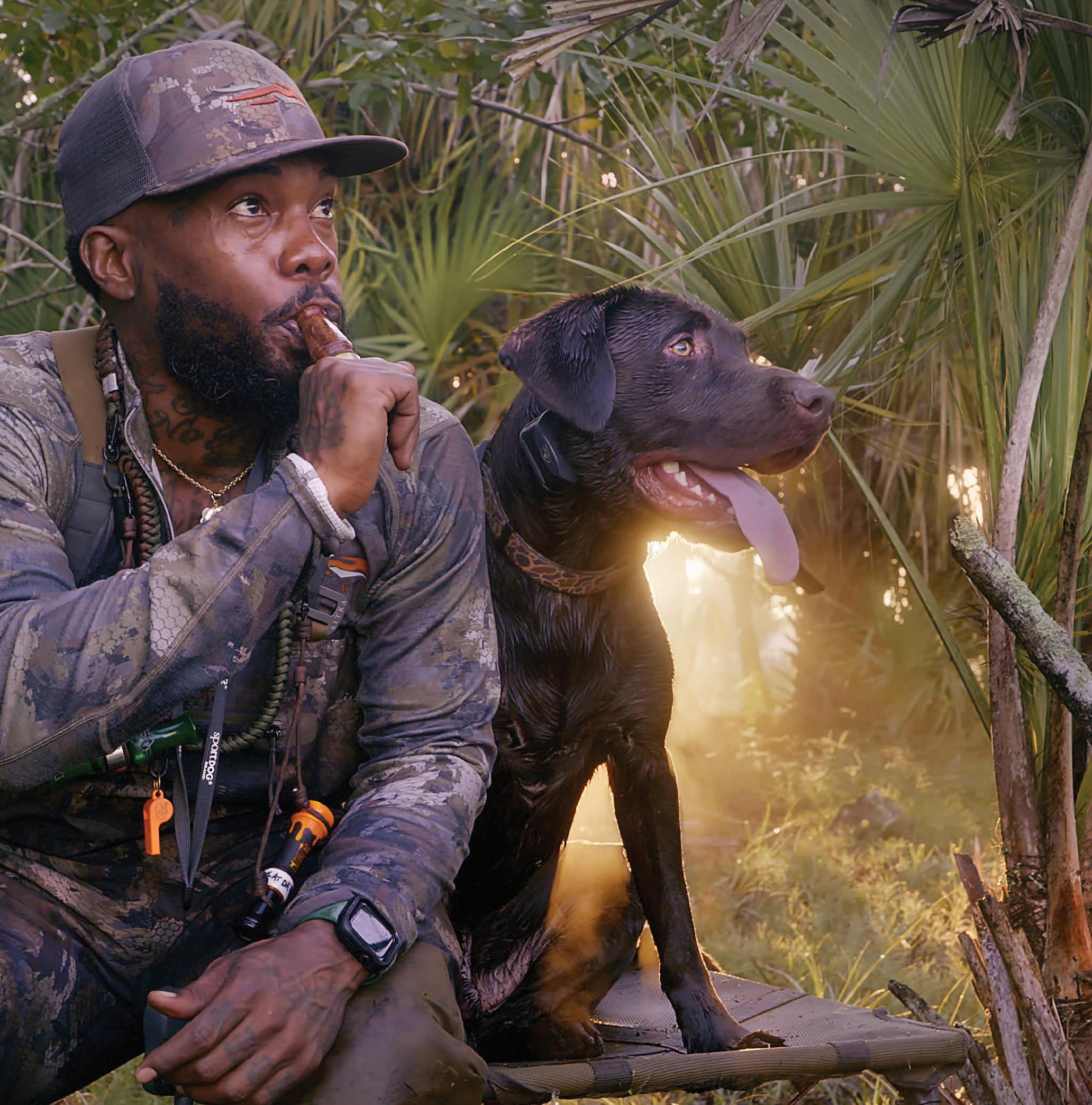
In the history of timepieces, few moments were more consequential than the advances of the 1920s. Currently, inflation is roaring, which we’ve decided to fight by turning our prices back to the 1920s.

During that era of jazz, speakeasies and flappers, wristwatches came into their own, resulting in some of the greatest designs of all time. It’s that legacy that we’re honoring with the Vintage ’24 Watch, available exclusively through Stauer at a price that only we can deliver.
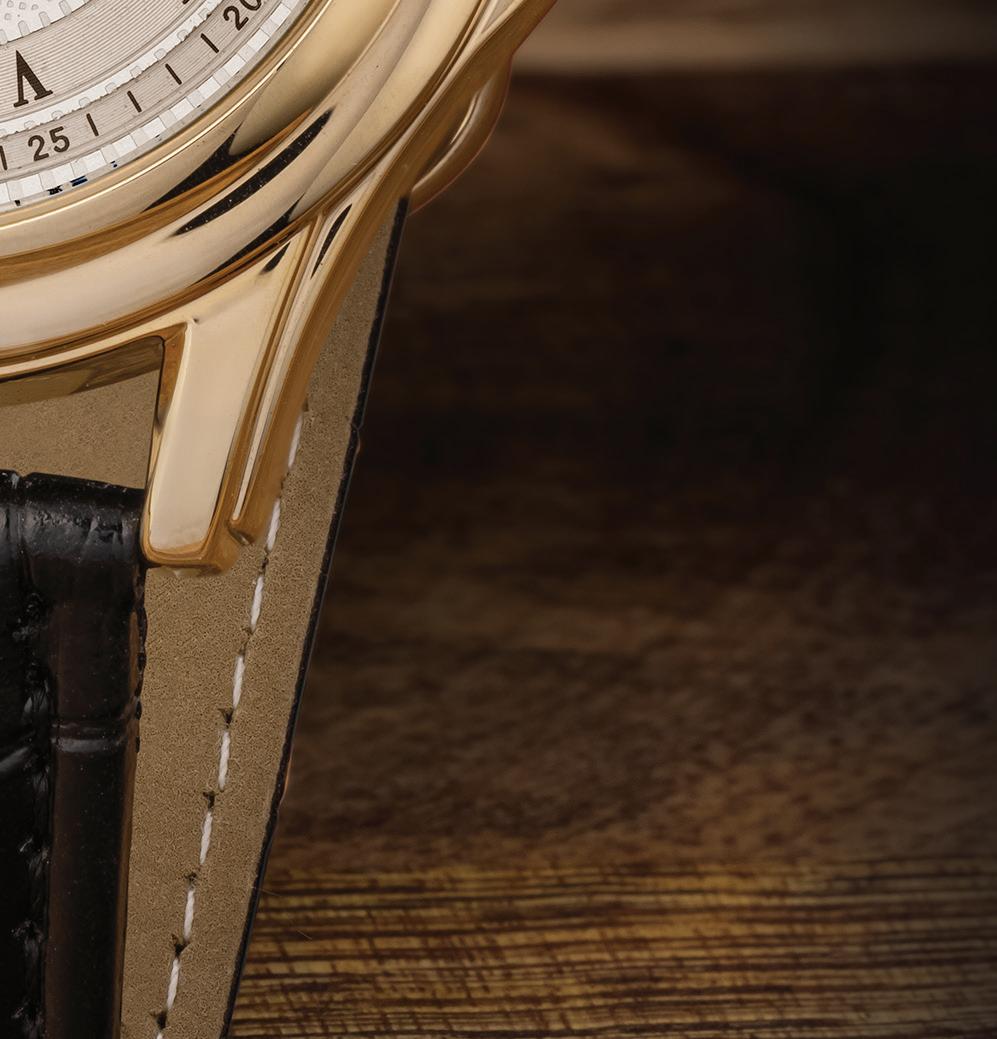

Before World War I, most people carried pocket watches. In that conflict, soldiers adapted their old pocket watches so they could be worn on their wrists as they dove in and out of trenches. By the war’s end, nearly every soldier wore a wristwatch. In peacetime, demand flourished, as did fantastic designs by some of the greatest watchmakers we know today.
That’s where we come in: Instead of charging you $20,000 for a jazz age-style timepiece from some overpriced marketing department, we’re asking for just $29 for an even more stunning watch! We’re talking about a gorgeous two-tone timepiece with a durable Cotswold™ crystal and a precision movement that vibrates at a frequency of exactly 32,768 times per second! With its guilloche-patterned face and refined Roman numerals, this watch is where innovation and class meet.

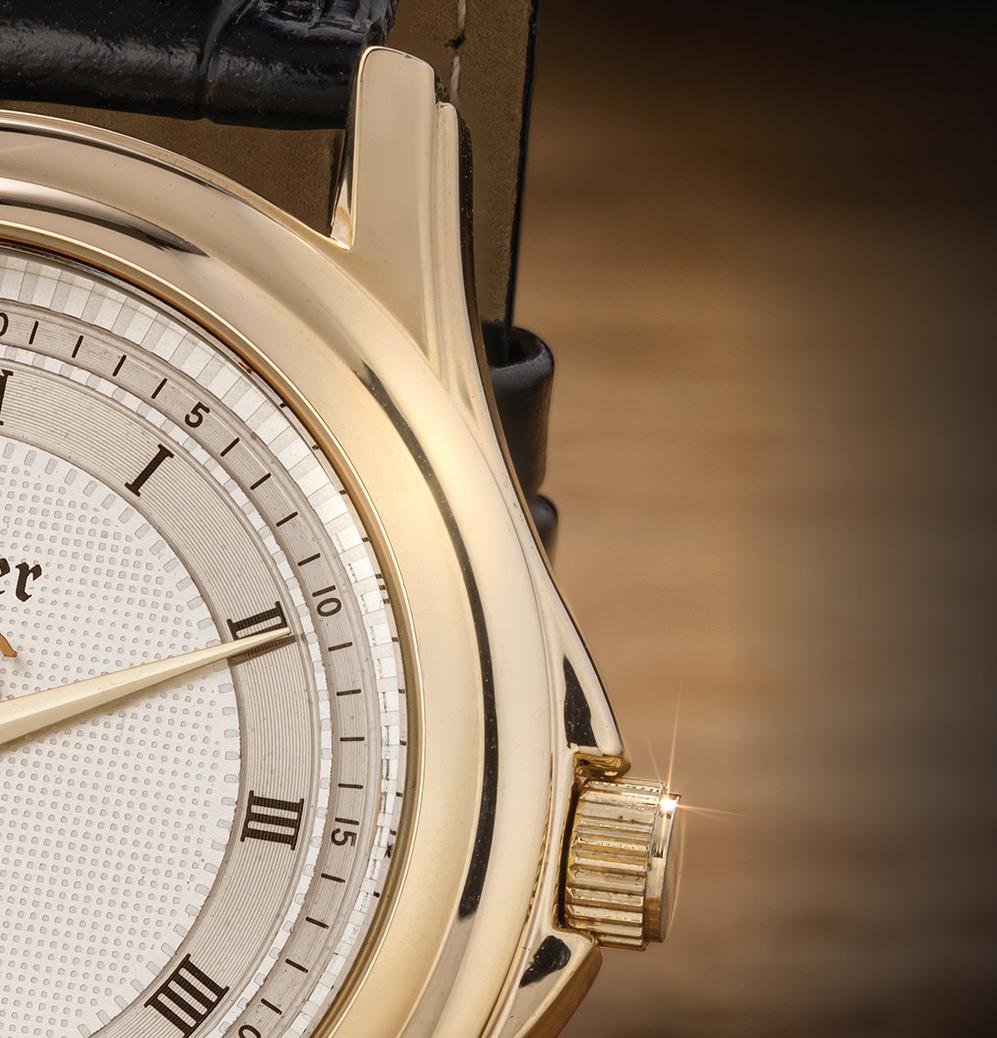
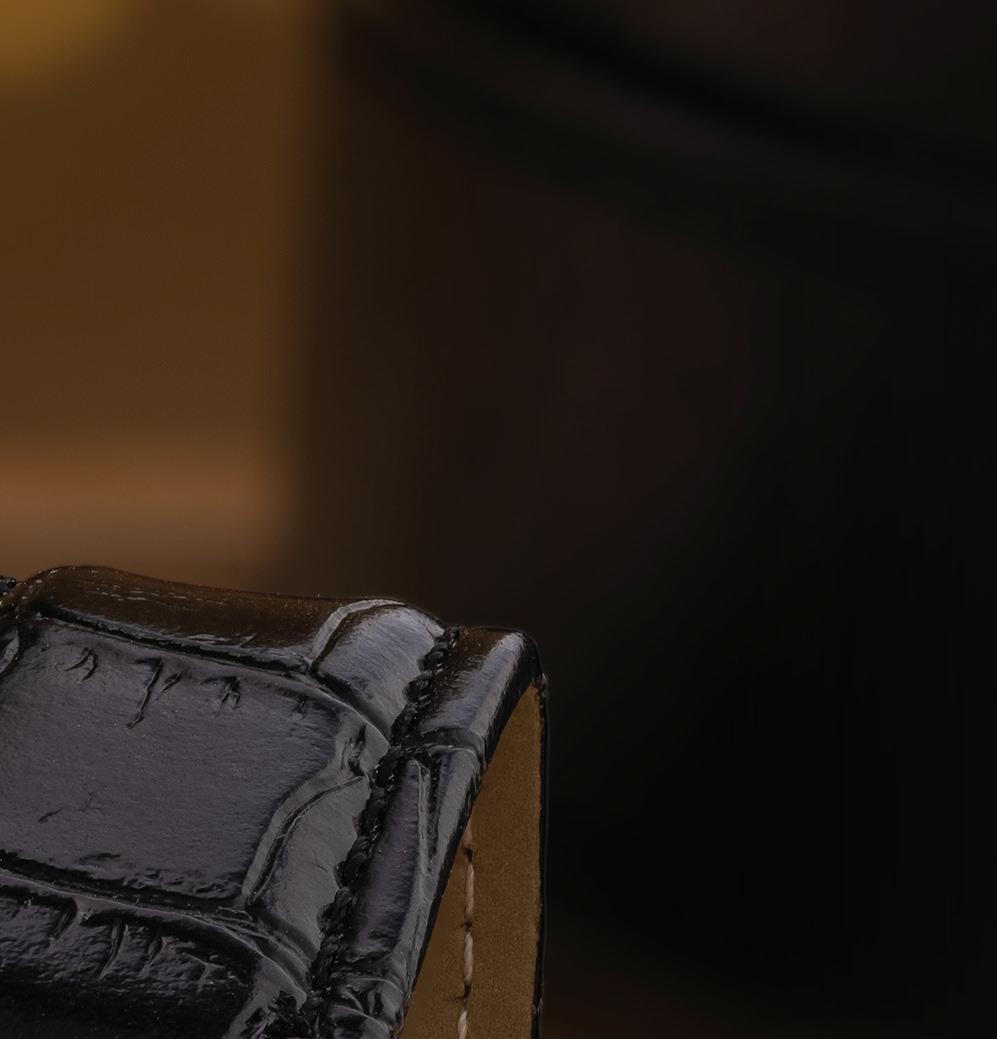

How are we able to extend such an incredible offer at such a low price? Through the use of modern technology, our artisan watchmakers are able to craft a timepiece that’s more accessible and even more beautiful than watches from our competitors. Call today to secure
own marvel of timekeeping history. A
like this doesn’t come along every day. Because of the time it takes to craft these stunning mechanisms, we can only offer 1,237 846 with this ad. Call today before they’re all gone.
time
engineering masterpiece for
for less, simply send it back within
for


In September, I embarked on one of the craziest adventures I’ve ever experienced to sh for crazy exotic species on the Rio Guaviare deep in Columbia’s Mapiri Jungle.
Just getting there was an adventure. We spent two days ying from Miami to Bogata and then to San Jose, Colombia, which was a buzzing little town where we picked up last minute supplies, ate a breakfast of pirahana head soup and got wrist bands tied by an elderly women and her pet spider monkey, Kiki.
At the port, we loaded gear in a small shaded boat powered by a Yamaha 200 2-stroke, with a spare lower unit tied on top. I was accompanied by my cameraman Adrian, from Poland, good friends Jake, Derek, Karl, and our jungle guide Diego, from Chile.
We set out downstream and rode for hours, passing through two army checkpoints, before we reached our halfway point at 118 miles. We stopped for lunch and to refuel at an isolated jungle town only accessible by boat. As we creeped up muddy stone steps, we were shocked to see a small town with convenience stores, restaurants, a playground, a basketball court, and happy people everywhere. It was a cool window into a di erent reality.
A er playing soccer with the local kids and a delicious fried sh lunch, we headed farther downstream. When darkness arrived, the jungle came alive and our driver did not feel comfortable navigating the rapids at night. So we stopped and Diego traded goods with an indigenous man for permission to sleep at his house. Some opted to sleep in the boat. e mosquitoes, hornets and massive cockroaches made it tough to sleep. A er long hours, the sun nally rose, and we headed another 45 minutes downriver to base camp, where we discovered we were in for even more travel.
We packed lighter for three days of shing and camping at a sacred waterfall inhabited by one of the jungle tribes. It was another 2.5 hours downstream to a small creek that would lead us up to a second camp. We shed our way up the creek.
On my rst cast, a 15-pound sardinata exploded on my popper boatside. Imagine a huge pilchard but with sharp teeth and hyper-aggressive topwater strikes. Fully grown, Sardinata can weigh 25 pounds. is one threw the hooks, and shing only got crazier from there.

I was throwing a 9-inch Countdown Rapala in Firetiger at the tree line and retrieving it to the boat. Almost every cast we hooked massive payara. is sh is similar to a tarpon, with silver scales, acrobatic leaps and a bony mouth that made hook sets di cult. Payara have long fangs on their lower jaw capable of slicing thick-scaled sh and shing line with ease. ey are without a doubt the most challenging, unique and aggressive jungle predators I’ve ever targeted. I managed to catch quite a few on y and spin tackle.
Another unique species was a matrinxa, a silver-scaled delicacy. ey are omnivorous and sit below trees to eat dropping fruits and nuts. ey also hit lures with insane power. ese sh were extremely hard ghting and very tasty. ey have teeth like human molars for cracking hard nuts.

Red bellied pacu are another ferocious species we caught. ey have a similar ambush style and diet to the matrinxa. ey are equally aggressive and display gorgeous hues of purple and black
Iwith a blood orange/red underbelly. Black and red bellied pirahana were in no shortage, either. A er three days of shing by the waterfall, we headed back to base camp for new species.
Heavy rains raised water levels, which busted our hopes to catch big peacock bass. But it opened a new door: catching monster cat sh.
I caught several new species of large cat sh. One of the most unique was a ripsaw cat sh. ey have so lips and a long face, similar to carp. ey also have a sharp chainsaw blade for a lateral line, earning them the nickname “Caiman Killer.” I caught small tiger shovelnose cat sh, as well as red tail cat sh. Red tail cat sh are one of the strongest ghting cat sh I’ve ever encountered. It took three days of break-o s before I was able to muscle one up. It weighed 40 pounds.
Fishing the jungle is tough, and it is not for everyone. is trip scarred me with bug bites from head to toe, and I su ered many bee and hornet stings. It is not comfortable in any sense, but it is good for the mind. ere’s no cell phone reception; you are stripped of everything. e only thing that matters is the present moment. For me, it is the biggest adrenaline rush to travel into the unknown and learn about new shing and culture.
Check out Ryan Izquierdo’s YouTube Channel, “Ryan Iz Fishing” for a series called “Jungle Jeopardy.” E-mail him at Ryanizquierdoyt@ gmail.com with questions or to nd out how you can go on one of these trips.


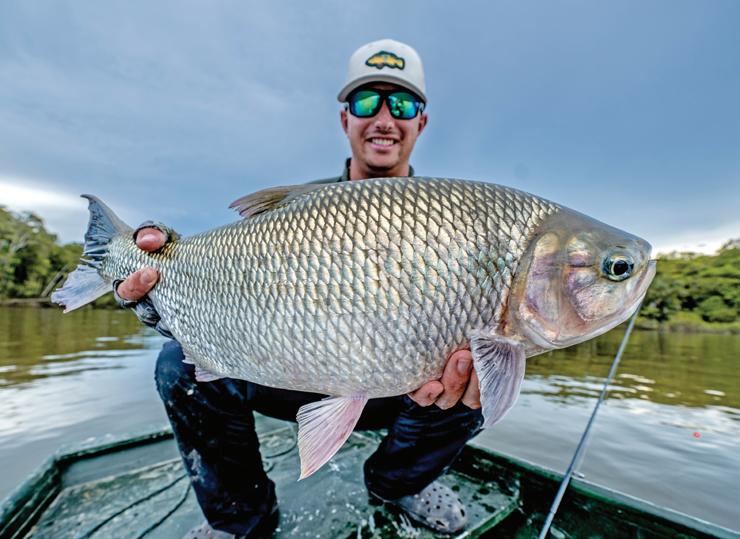



“Known as ‘the Evening Emerald’ because its sparkling green hue looks brilliant any time of day.”
— The American Gem Society (AGS)

Going over the top on jewelry doesn’t have to mean going overboard on the cost. We’re in the business of oohs and ahhs without the ouch, which is why we can bring you an e ervescent verdant peridot ring for a price that simply can’t be beat. Its vivid and unique color makes verdant peridot unlike any other green gemstone. If you are looking to mark a milestone or make any occasion special, the Verdant Peridot Ring is all you need.
is elegant ring features 2 1/3 carats of captivating verdant peridot in three perfectly-faceted cushion cut gemstones. And, the .925 sterling silver setting is nished in tarnish-resistant rhodium for added durability and superior shine.
“Found in lava, meteorites, and deep in the earth’s mantle, yellow-green peridot is the extreme gem”
Gemological Institute of America’s Gem Encyclopedia
Peridot• White
You could easily spend $400 on a sterling silver ring set with peridot stones. But, with Stauer in your corner, the sky’s the limit for a ording the extraordinary. Priced at just $39, you can treat her to the Verdant Peridot Ring set in .925 sterling silver and save your money and your love life all at the same time. Satisfaction guaranteed or your money back. Indulge in the Verdant Peridot Ring for 30 days. If you aren’t perfectly happy, send it back for a full refund of the item price. Limited Reserves. Don’t let this gorgeous ring slip through your ngers. Call today!
PRAISE FOR STAUER PERIDOT JEWELRY “...absolutely beautiful. The picture does not do it justice. It is a real stunner.” – S. C., Berkeley, CA
Verdant Peridot Ring (2
Special
Stauer.com without your
ctw) $299† $39 +S&P Save $260




price.
TPR 6
code.
14101 Southcross Drive W., Ste 155, Dept. TPR256 02, Burnsville, Minnesota 55337 www.stauer.com
Rating of A+



sterling silver setting • Whole sizes 5-10 Stauer… Afford the Extraordinary


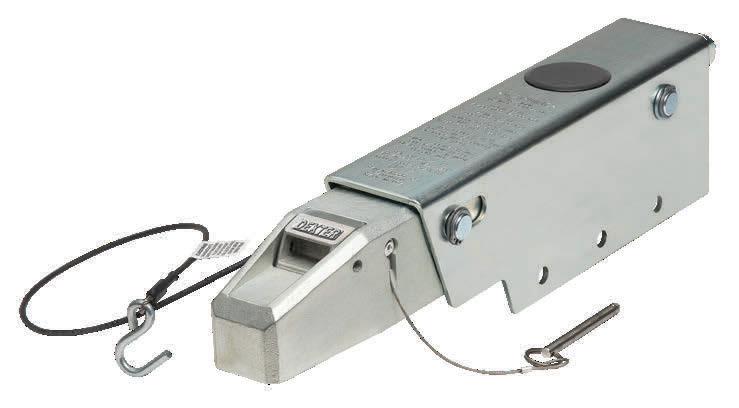








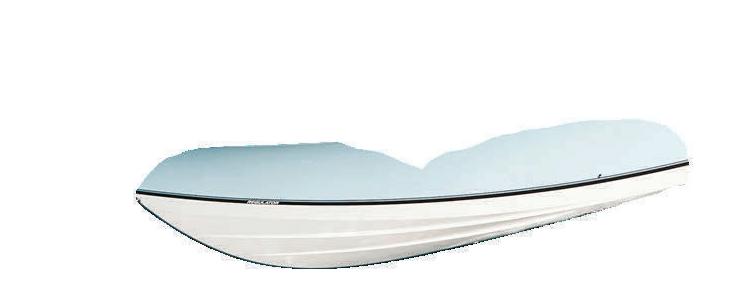













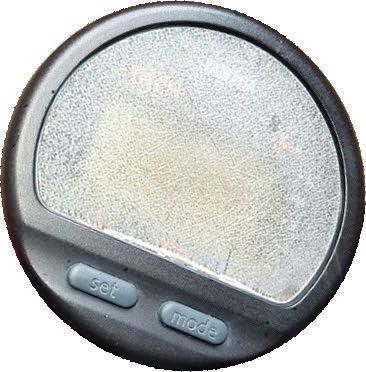


more to Alaska’s Kenai Peninsula than world-famous salmon runs. e saltwater shing is also phenomenal, with species like halibut, salmon shark, ounder, yelloweye rock sh and ling cod being primary targets.

When you run out of Seward to Resurrection Bay, you might see some of the Deadliest Catch boats, and you might see multiple species of whale. We saw a lot of humpbacks this past summer. At more than 900 feet deep, with glaciers around the rim, the bay is awe-inspiring. ere are several good charter operations. Some make long runs for big halibut, while some o er shing that’s a little more local. Check with J Dock Fishing Co. in Seward for the latest shing information and charters. If you’re more of a DIY angler, Miller’s Landing in Seward o ers lodging and charters, and they also rent boats and shing equipment. If you want this option, book early. I have mine booked for next year, already.
Homer is the Halibut Capital of the World,
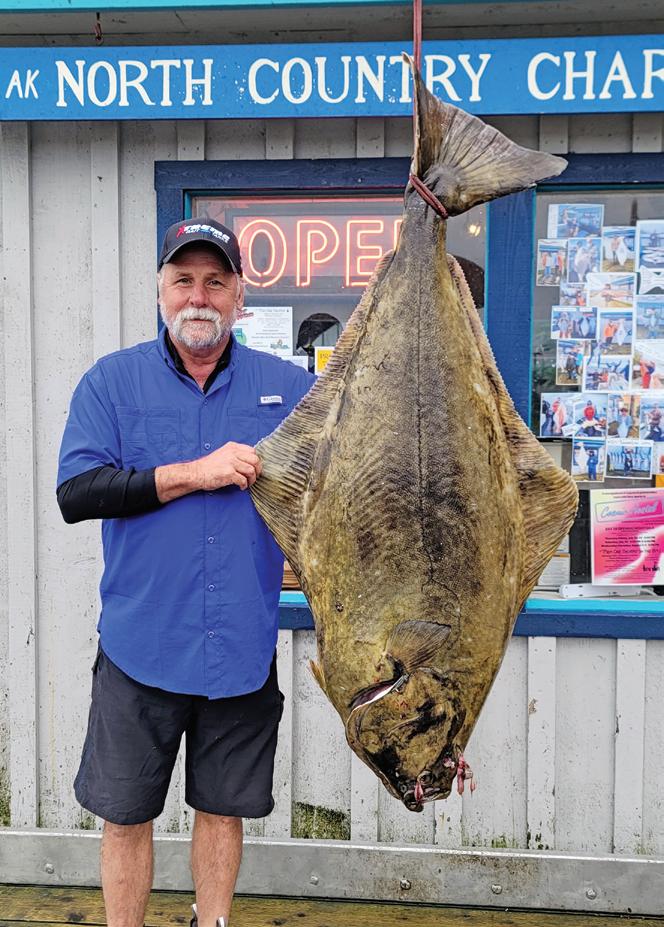
and it’s another great Kenai destination. We went with some friends and got on some good Halibut! I’m new to the electric reels we used. You had to time the hook-set just right. It took several bites to gure it out, but we caught sh once we got the hang of it. I pulled one a good way o the bottom before it decided it wasn’t coming in and broke a 150-pound-mono leader! We caught several good keepers and turned the smaller ones loose. ere are plenty of charters in Homer. North Country Charters is a great one that o ers halibut and salmon trips. ey will put you on some big halibut. My largest weighed 99 pounds, but North Country catches sh that are much larger.
If you want a long-run charter, check out Casino Charters. If you want to catch sh from the beach, check out Family Shore Fishing. ey set you up with a guide, shing rods and bait at Lands End, which juts out into the bay. Fishing low tide on the shelf, you can catch cod, ounder and halibut. We lled a cart with cod
and ounder in less than two hours shing from shore. en we went back another day without a guide and wore them out again!
Fishing in Alaska is just like anywhere else, once you learn what works, you can do it over and over. ere are lots of di erent kinds of shing there, but once you learn where and how to catch them, you can do it yourself.
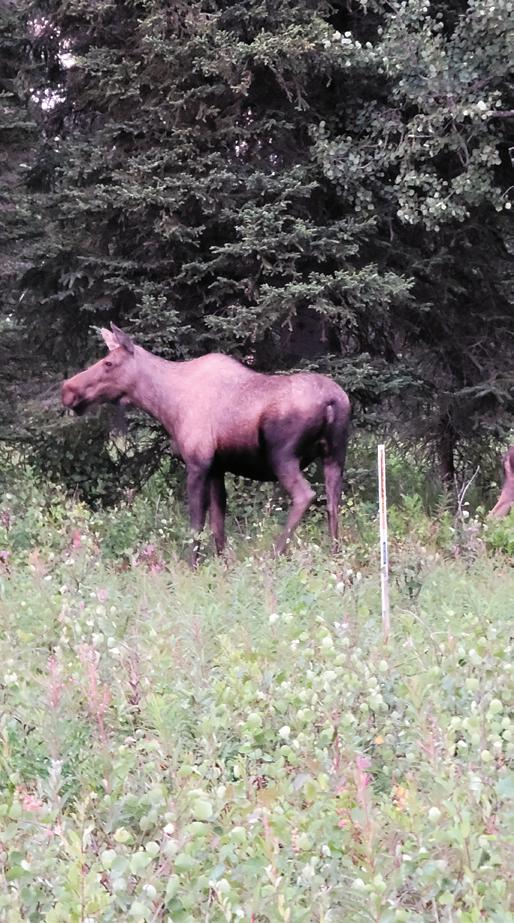
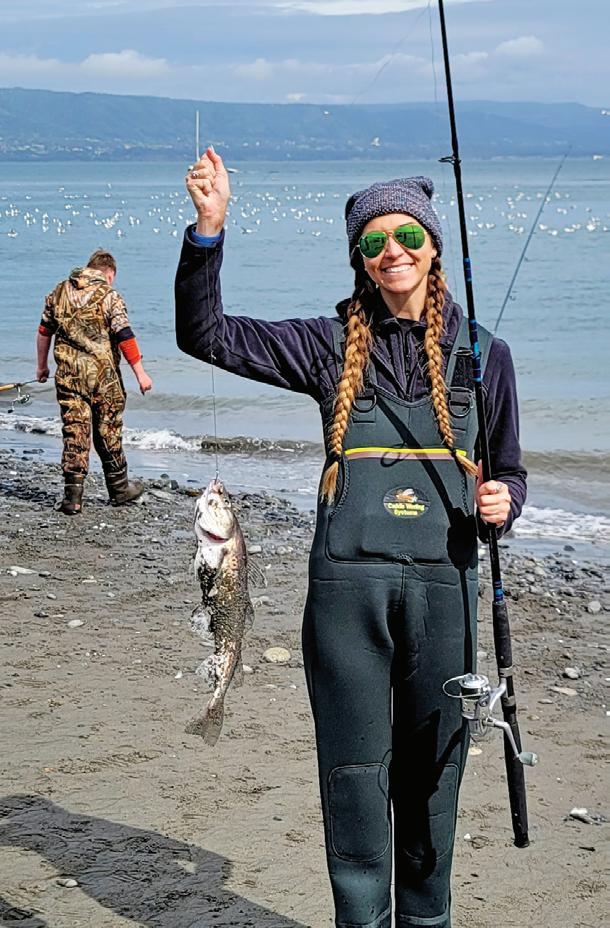
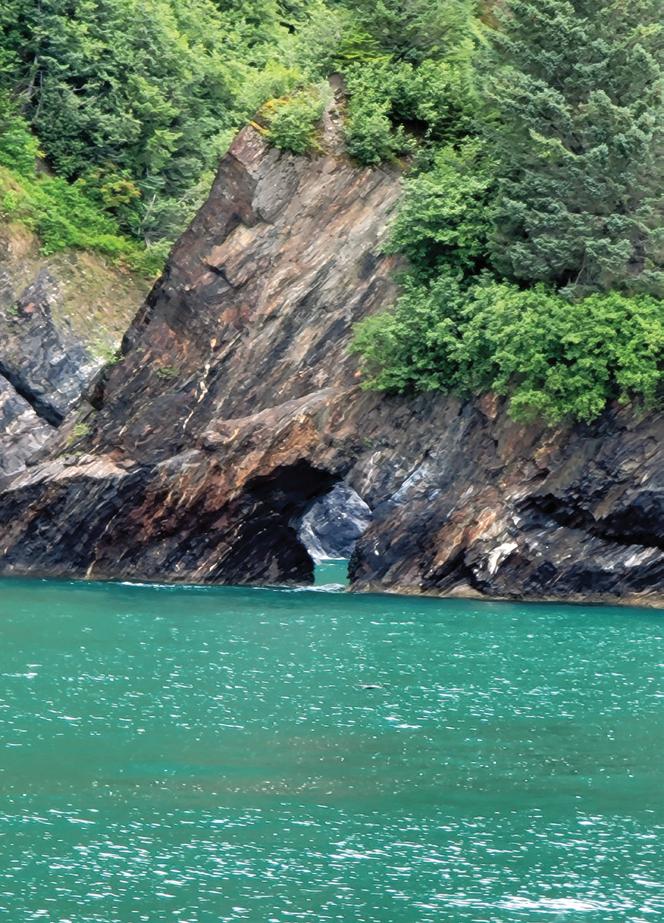
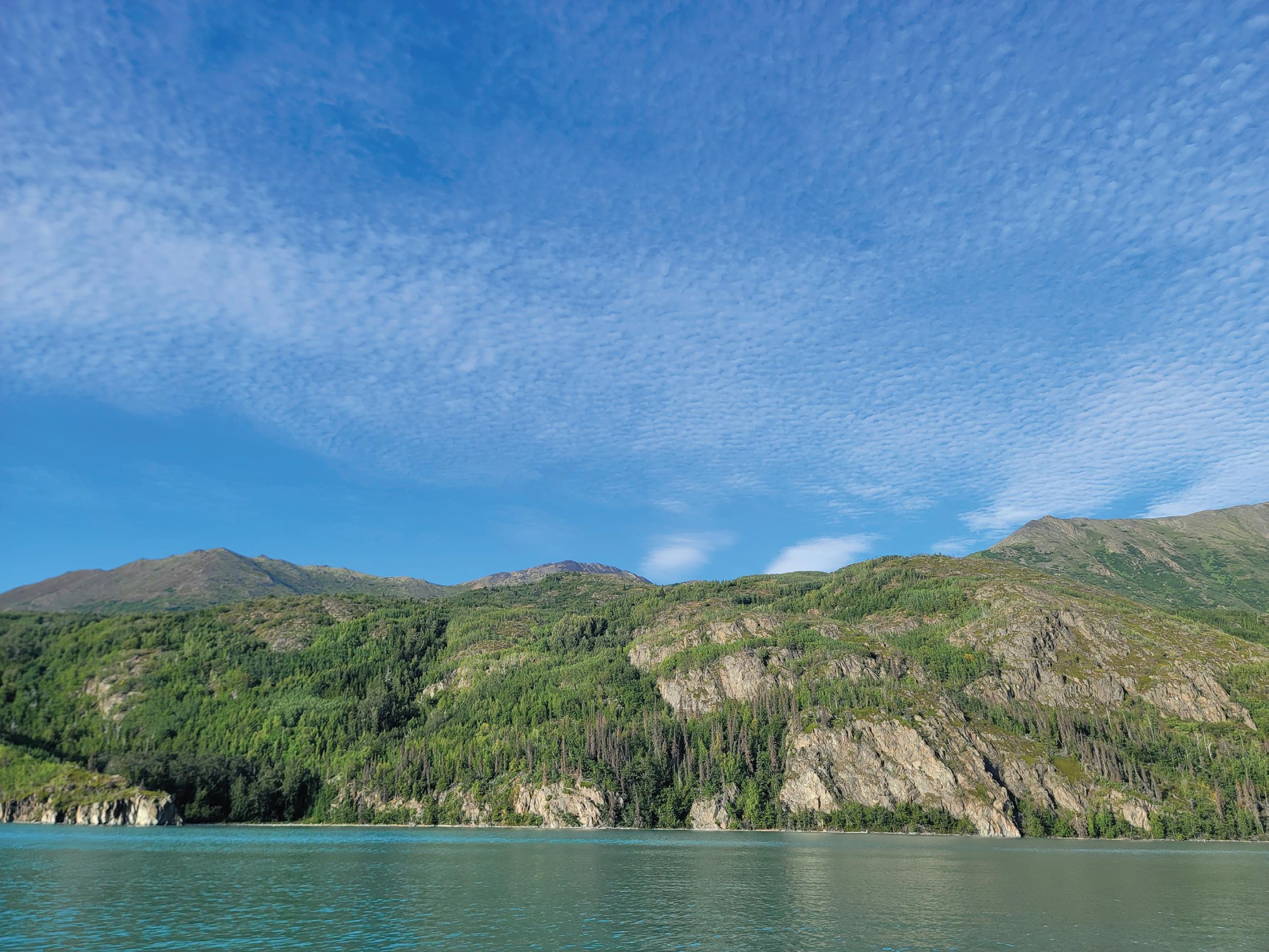
On this past summer’s trip, as we were headed to the airport to go home, we drove along Cook Inlet and spotted a school of beluga whales swimming the shoreline. You never know what you’ll see in Alaska. Some things are just so amazing!
I’m currently pulling together next summer’s trip to Kenai, and I’m making a short guide of things traveling anglers might want to know. Feel free to shoot me an email with questions.
For more information, contact Gary Turner at gary@purgeright.com.

About 50 years ago, Ralph Vodicka lost one of his favorite rod and reel combos when his boat capsized in North Carolina’s unpredictable Oregon Inlet. Recently, Vodicka was reunited with his 9-foot rod equipped with a Fin-Nor 4 spinning reel, and it still works!
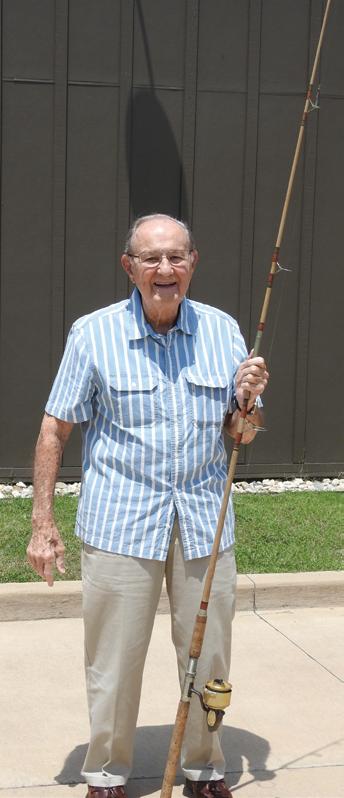
Here is a brief recount of the amazing story reported by Summer Stevens in e Coastland Times.
In fair weather in the early 1970s, Vodicka and three buddies attempted to return through Oregon Inlet a er shing o Hatteras National Seashore in a 17-foot 1966 Boston Whaler. e outgoing tide colliding with incoming rollers created rough conditions, even for a large trawler the anglers watched navigating the inlet. Vodicka was faced with a decision. ey could either wait for the tide change, which would force them to make their run in the dark. Or they could go for it.
“Waiting it out would put us in the middle of the night,” Vodicka remembered. “We decided that the best choice was to race on in while we could see. I told everyone, ‘Hold on, don’t move. We’ll ride on the back of one of the breaking waves. Even if it takes a little water, it’ll be ok.’”
In the middle of the inlet, as they were taking on water, a line caught in the prop and it stopped turning. e boat was at the mercy of the tide and waves, and an 8-foot breaker ipped it end over end. e story of the exciting rescue is reported in detail in e Coastland Times. It involves the captain of an old 25-foot boat and his grandson risking great peril to time the waves and rescue each of the anglers one at a time. Vodicka’s badly damaged Whaler was later recovered, and he lost a bunch of shing gear, including the rod and reel that began this story.
e details are lost to time, but apparently the Fin-Nor reel and the rod were hauled up in a commercial angler’s net. e unique set-up ended up doing decades of duty as a showpiece on the wall in Dennis Dudley’s Elizabeth City, North Carolina home.
Vodicka,” and Dudley tried to locate the Fin-Nor’s owner when he received the rod in the mid-1970s. Dudley’s phone book searches came up empty, and the search was forgotten… until recently.
Dudley, 78, remembered the mystery of the reel’s owner while going through his possessions. A quick Google search turned up Vodicka, who is 89 and living in Raleigh, N.C. e men met to eat lunch, and Vodicka was reunited with the beautiful rod and reel he lost half a century ago.


Amazingly, the antique Fin-Nor is already back in action. Instead of hanging it on the wall, Vodicka had it serviced and used it on the Neuse River over Labor Day weekend.

e reel was equipped with a custom plate engraved with “Ralph E.
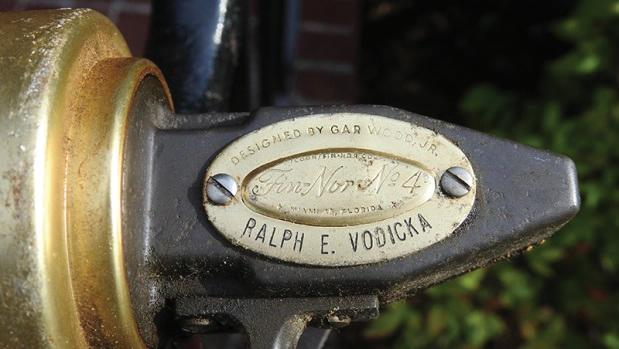

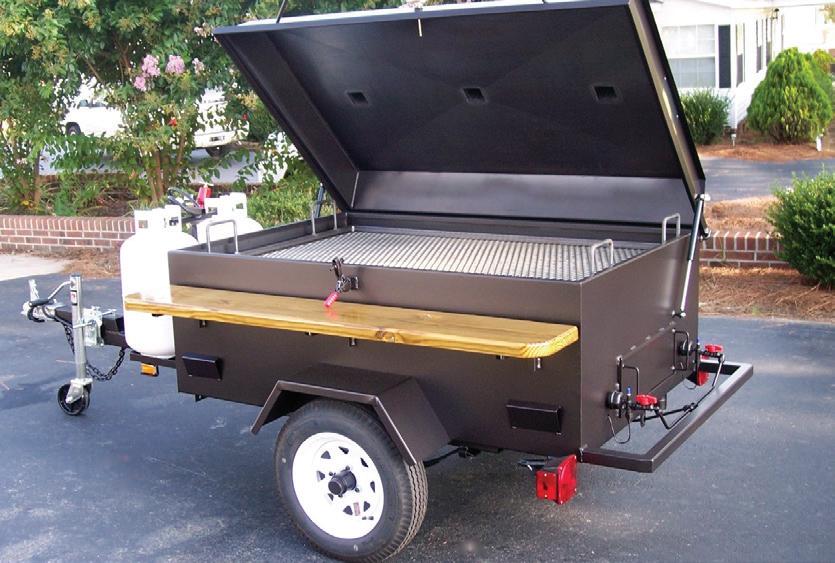
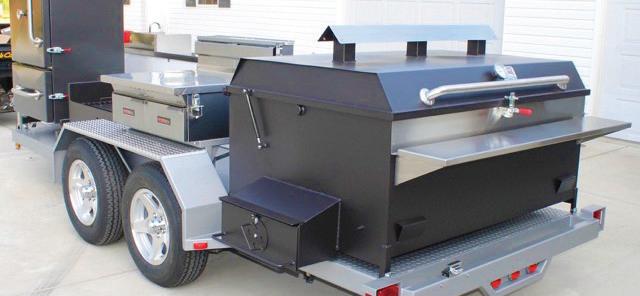
“It worked. It worked ne,” he said. “It’s amazing that a er 50 years you get your favorite rod and reel back.”
To read the whole story, go to www.thecoastlandtimes.com.
Everyone hates a cheater, which is why it’s no surprise that tempers ared when two cheaters were caught red-handed at a Lake Erie Walleye Tour (LEWT) event on Oct. 1. e event was the tour championship for the series, and the Team of the Year would also be crowned a er weigh-ins. Team Crankin’ Hogs brought to the scales a ve- sh limit that weighed more than 33-pounds. It It would have secured Jake Runyan and Chase Cominsky well over $20,000 for the championship win and for Team of the Year honors. ey overplayed their dirty hand.
Tournament Director Jason Fischer suspected something was amiss when the sh hit the scales. Fischer later told CNN that the sh looked like they should have weighed 4 pounds each, but the total weight indicated they were much heavier. He handled the sh and felt something hard inside one of them.
In a now-viral YouTube Video, Fischer guts the sh as the cheaters stand by silently. “We have weights in the sh!” Fischer announced, and that’s when the shouting started as other anglers hurled obscenities at Runyan and Cominsky.
All-told, there were 8 pounds worth of lead weights, llets from other walleye and a pair of pliers inside Team Crankin’ Hogs’ sh. ey were immediately disquali ed and banned from the tournament series. Both men were later indicted by an Ohio grand jury on charges of cheating and attempted grand the .
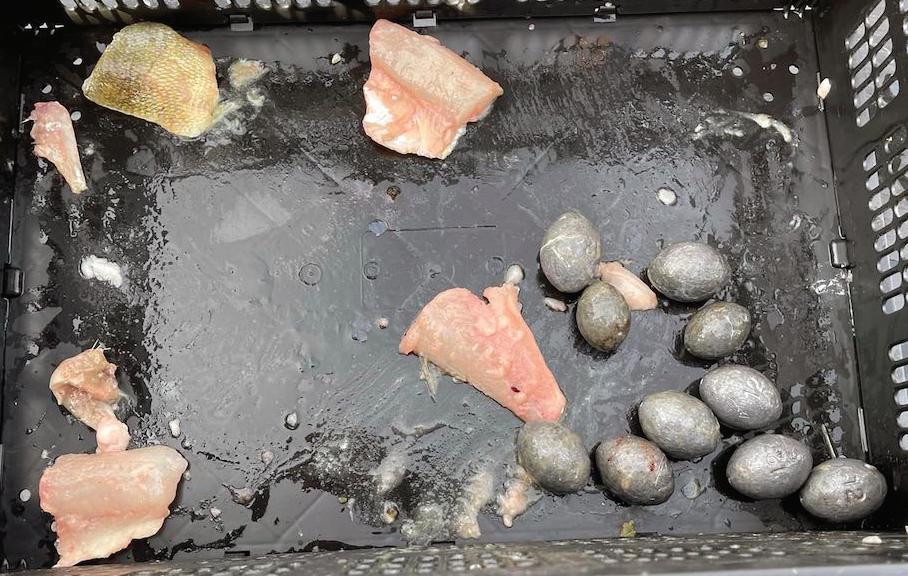
It will be interesting to see if the team’s other tournament wins are called into question. ey have won numerous events over the last couple of years, including the 2021 LEWT Championship.
For more information, go to lakeeriewalleyetrail.com.
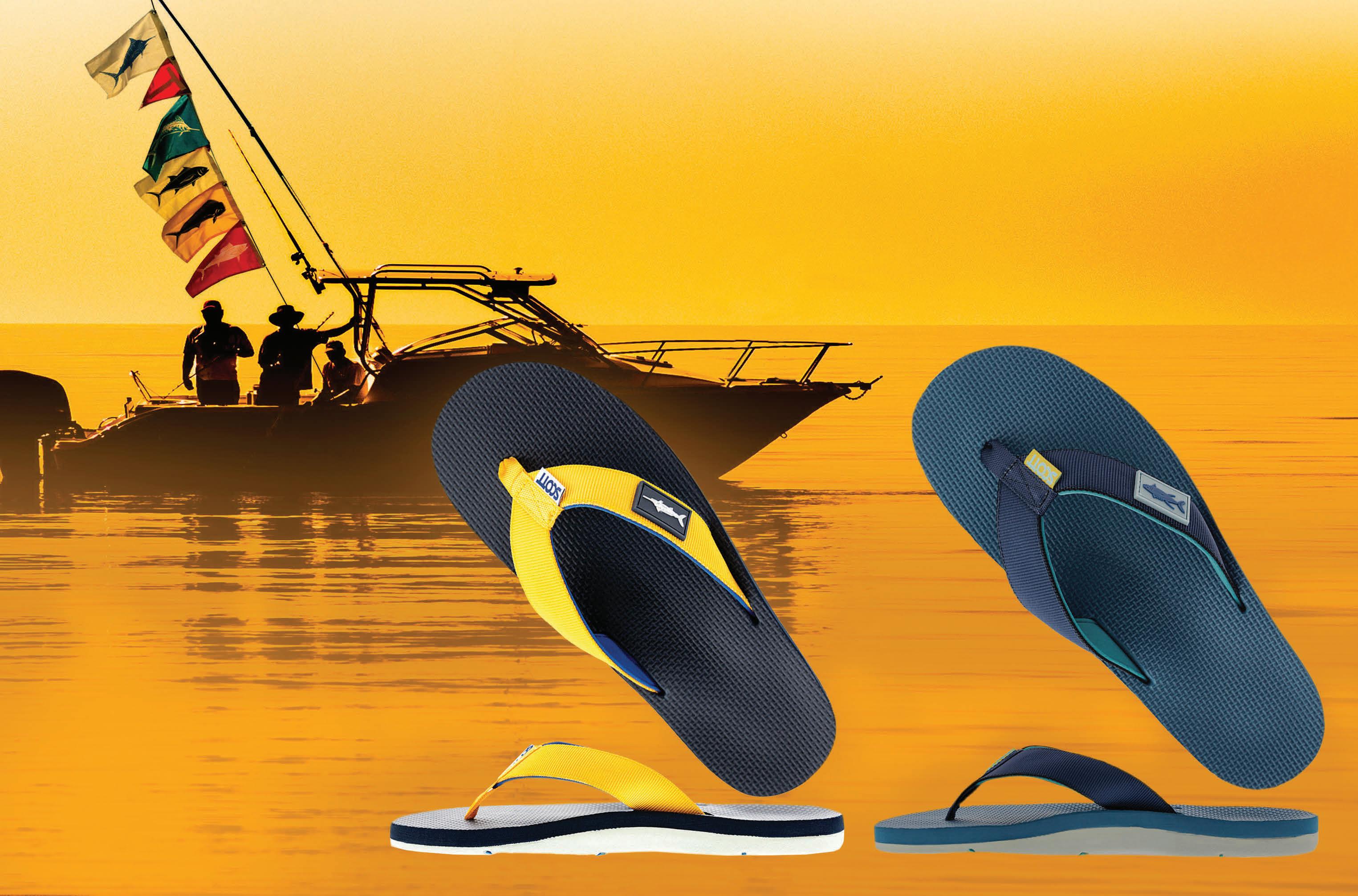

You raise the flags of the fish just caught to show you weren’t skunked.
Once onshore you can take it a step further showing your fellow anglers your catch of the day wearing “slippahs” from Scott Hawaii.
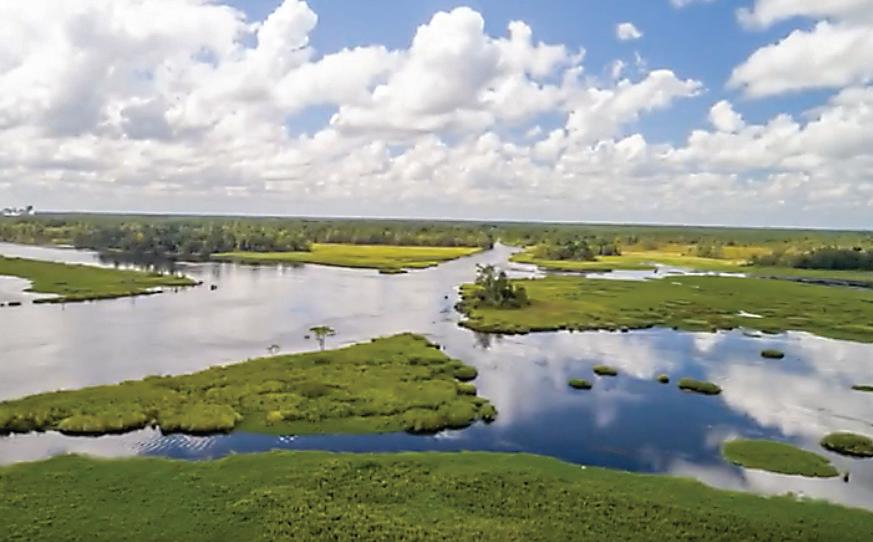
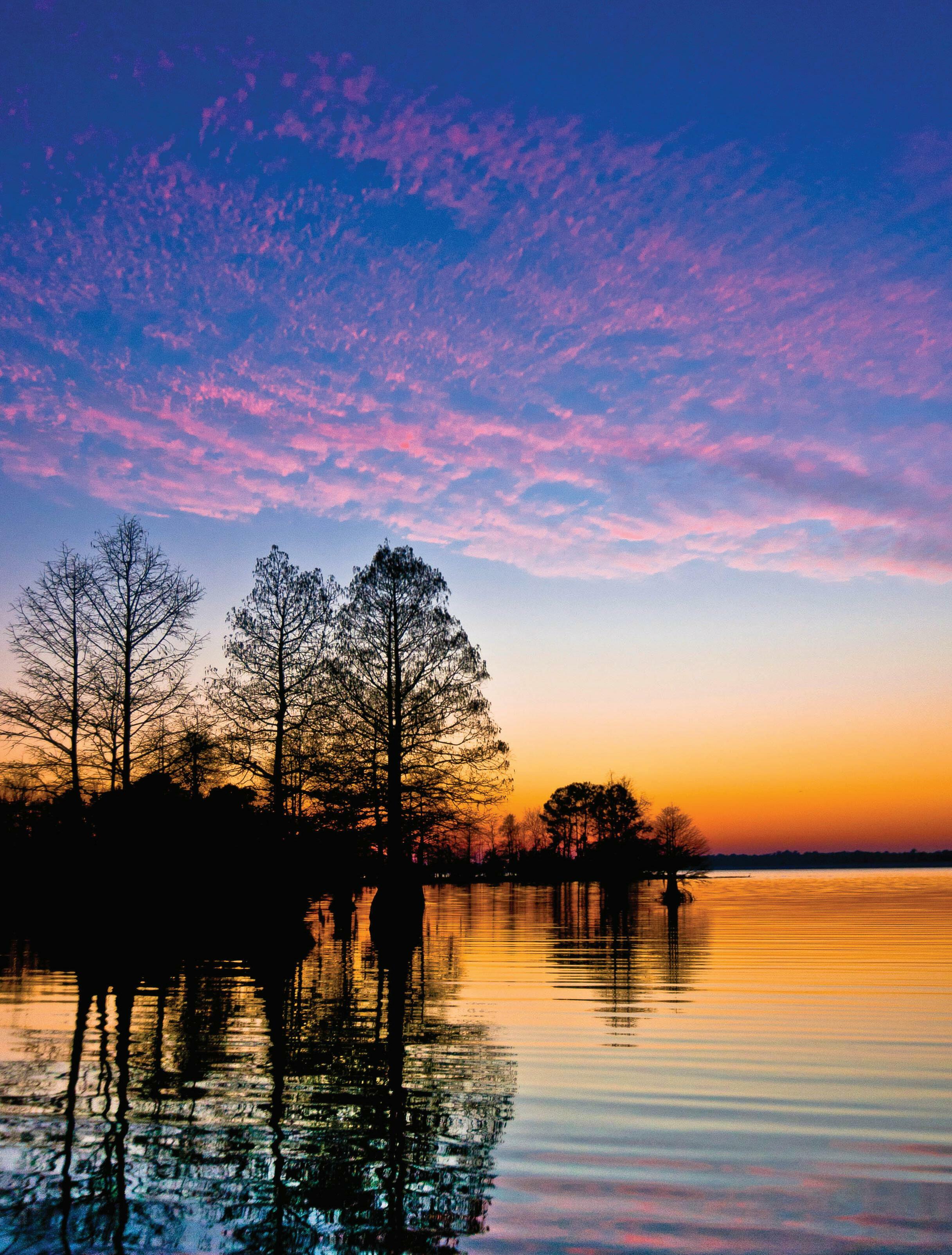
Berkeley County is a wonderland for outdoor enthusiasts, sports bu s, adventure seekers, and water lovers. From exemplary fishing for striped bass, or a trophy largemouth bass, to our hiking trails and water activities, along with scenic outdoors where you can catch a glimpse of white tail deer and gators, Berkeley County has activities to fit all visitors and families.



one



look
men’s watch has always
world of fashion.

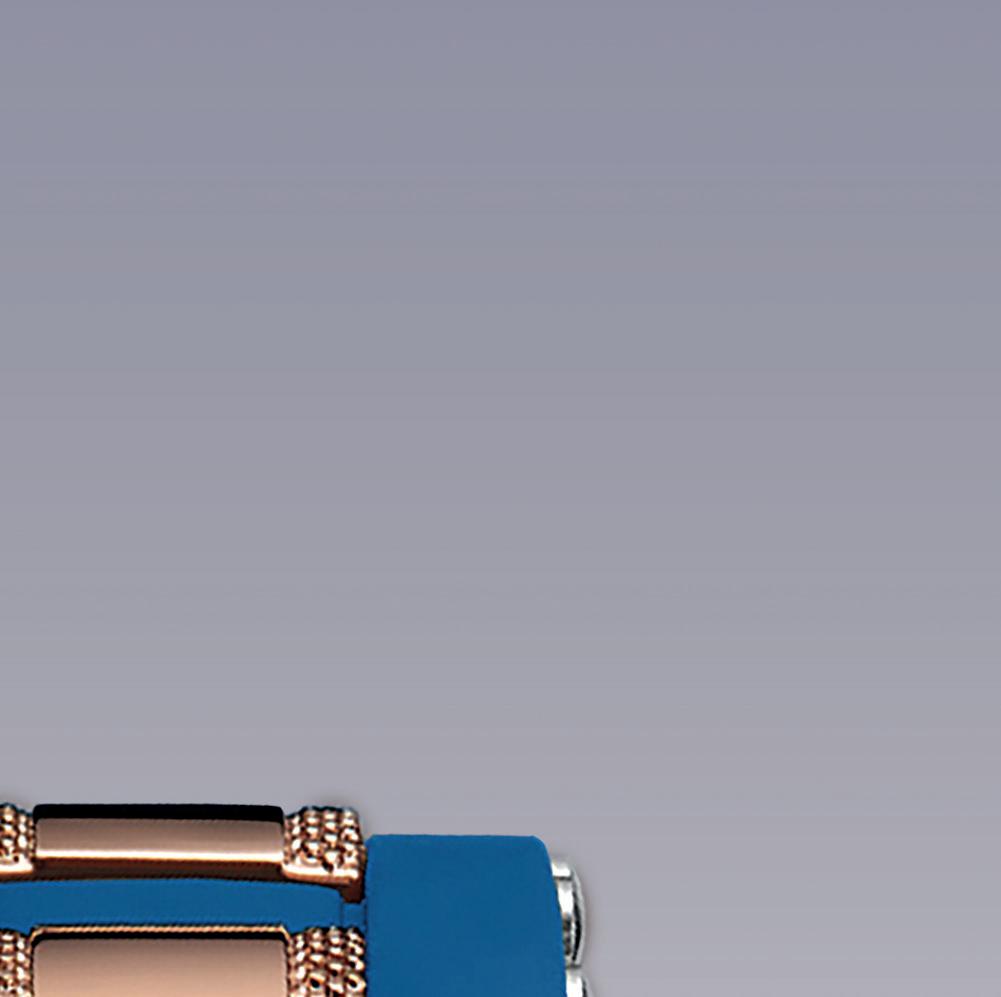
functionality has long been the







After many years, mastering and honing the construction, design, and look. We bring you a durable rubber strap that will withstand everything the elements throw at it. Three precision sub-dials featuring a split second, minute, and second, as well as being water-resistant to 3ATM’s. This watch is the epitome of style and sporty design.
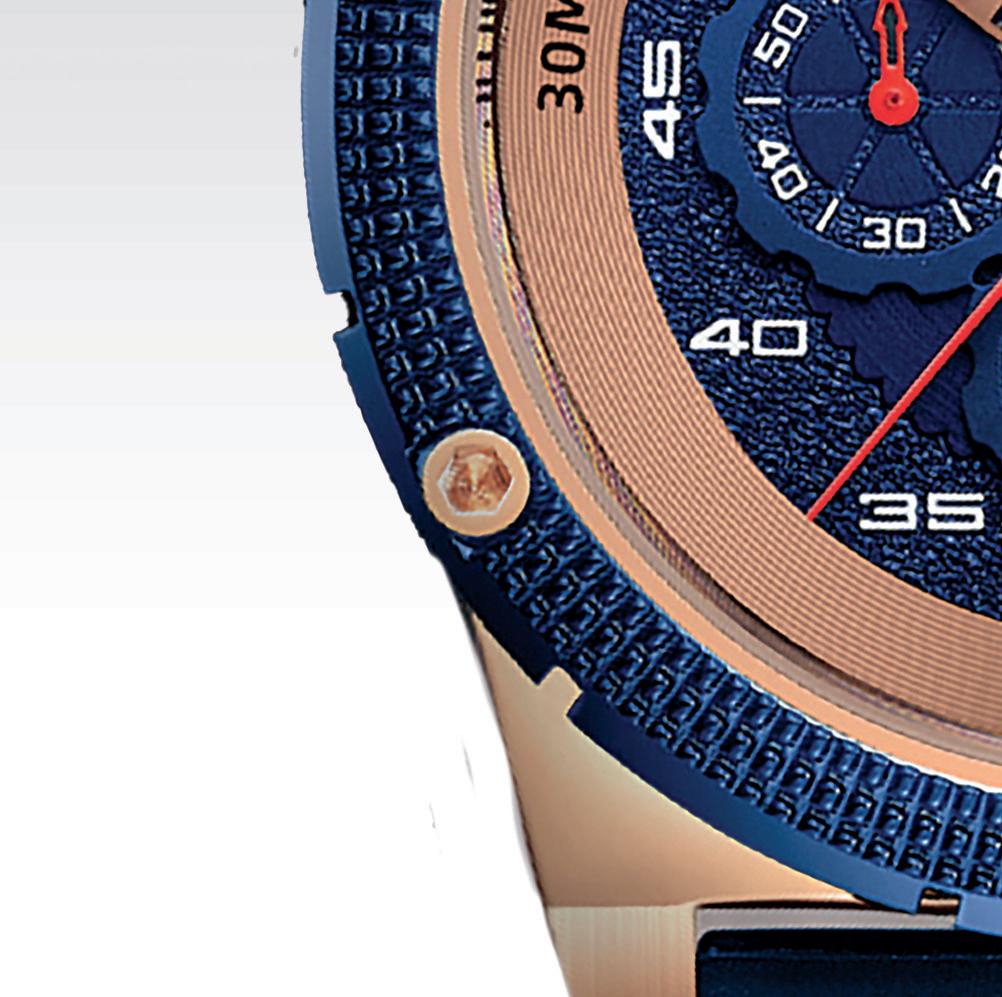
Your journey is at an end you can rest in the knowledge that this superb-looking timepiece will stand out on the wrist. High-quality materials and design will endure the ravages of time both in terms of remaining fashionable and stylish yet durable enough to be worn every day whether at work, rest, or play.

When we rst introduced this outstanding looking timepiece we sold out within days especially considering the very special lowcost o er of only $99 plus S&H. To avoid disappointment hurry and order today using the toll-free number below and quoting the promo code or by visiting our online store and entering the code before checkout.


